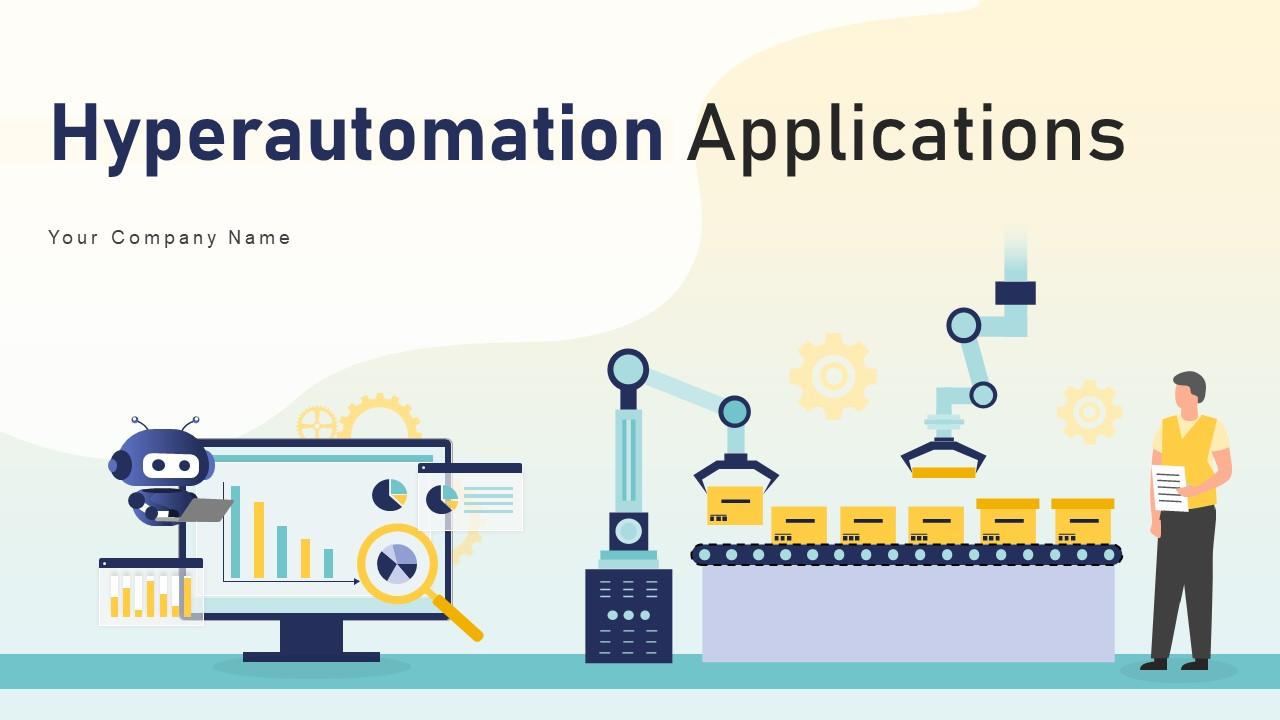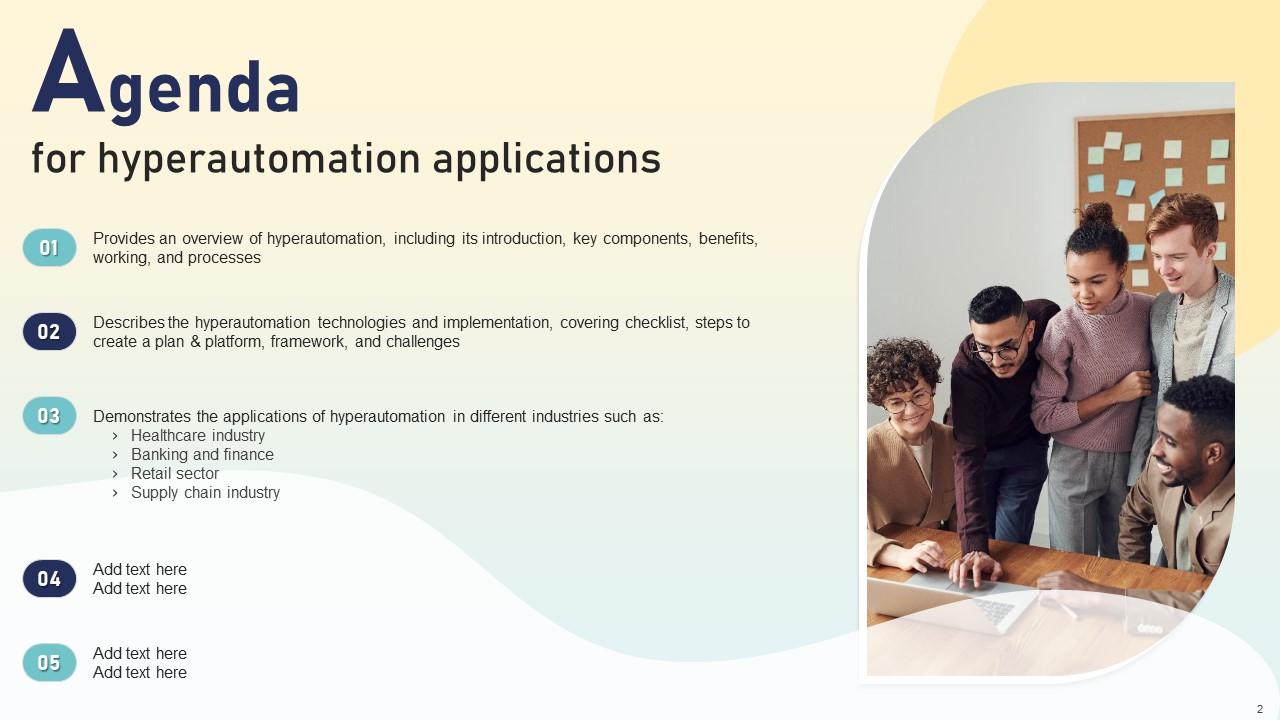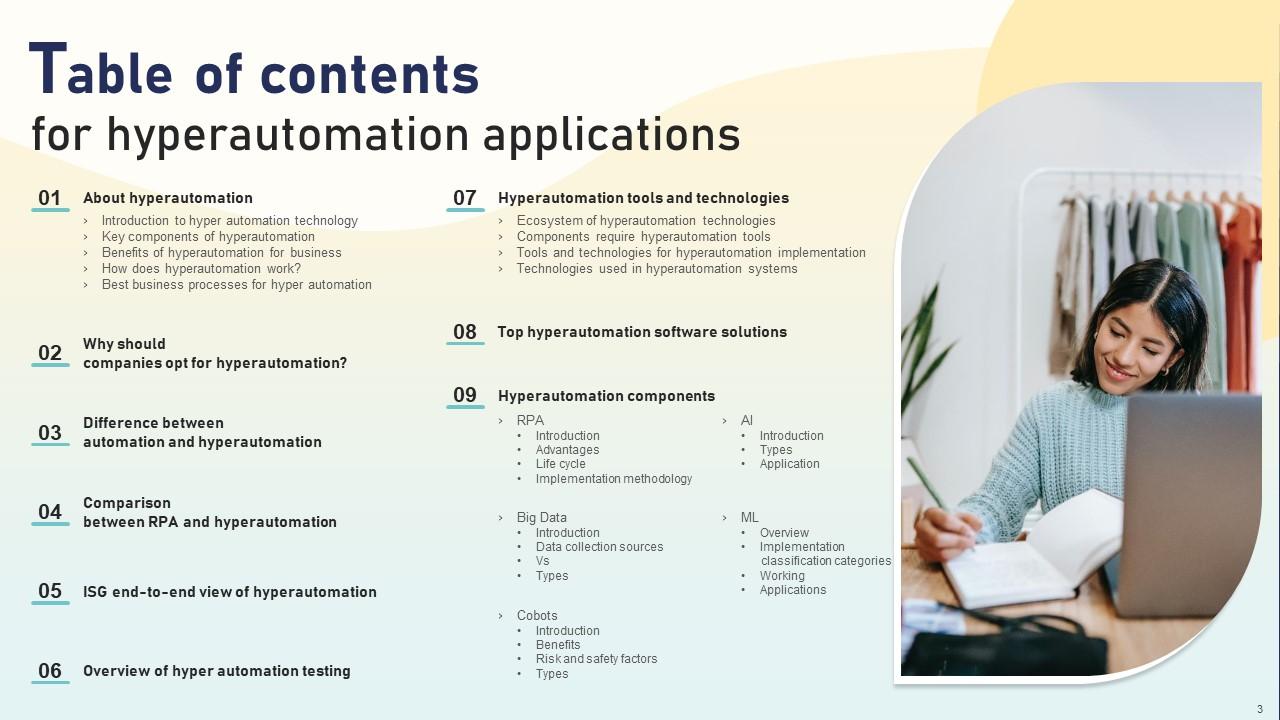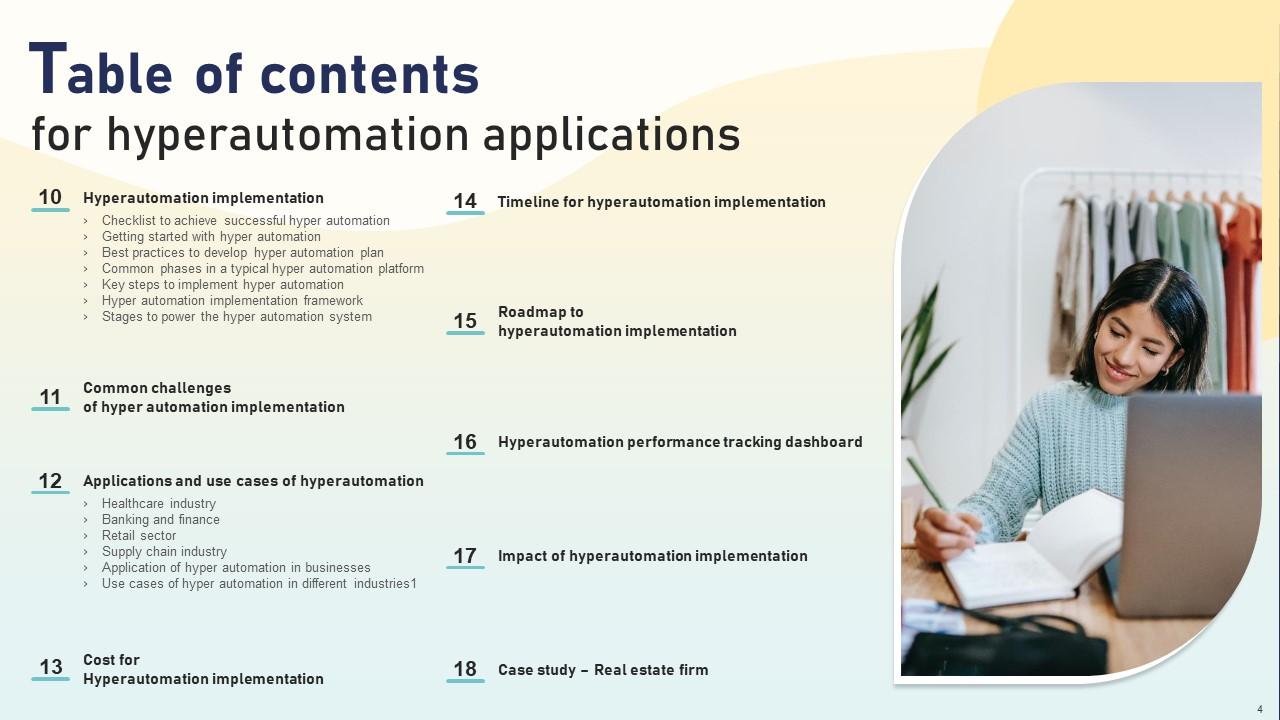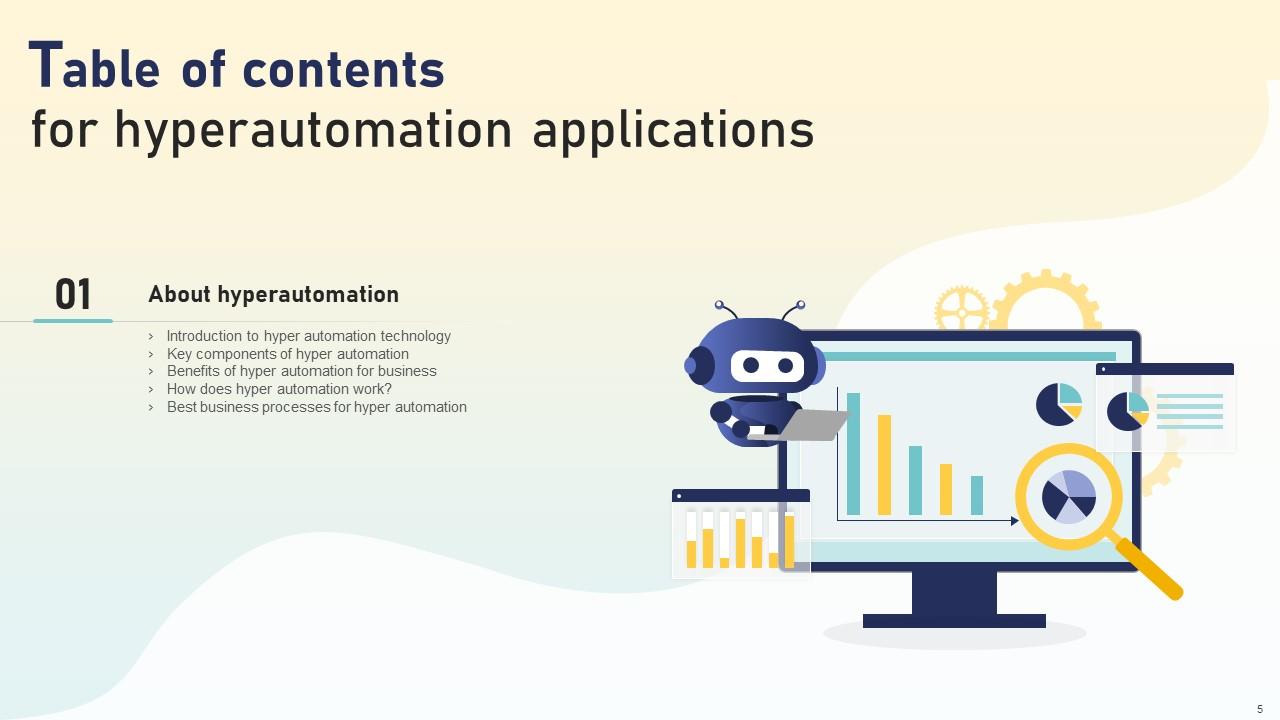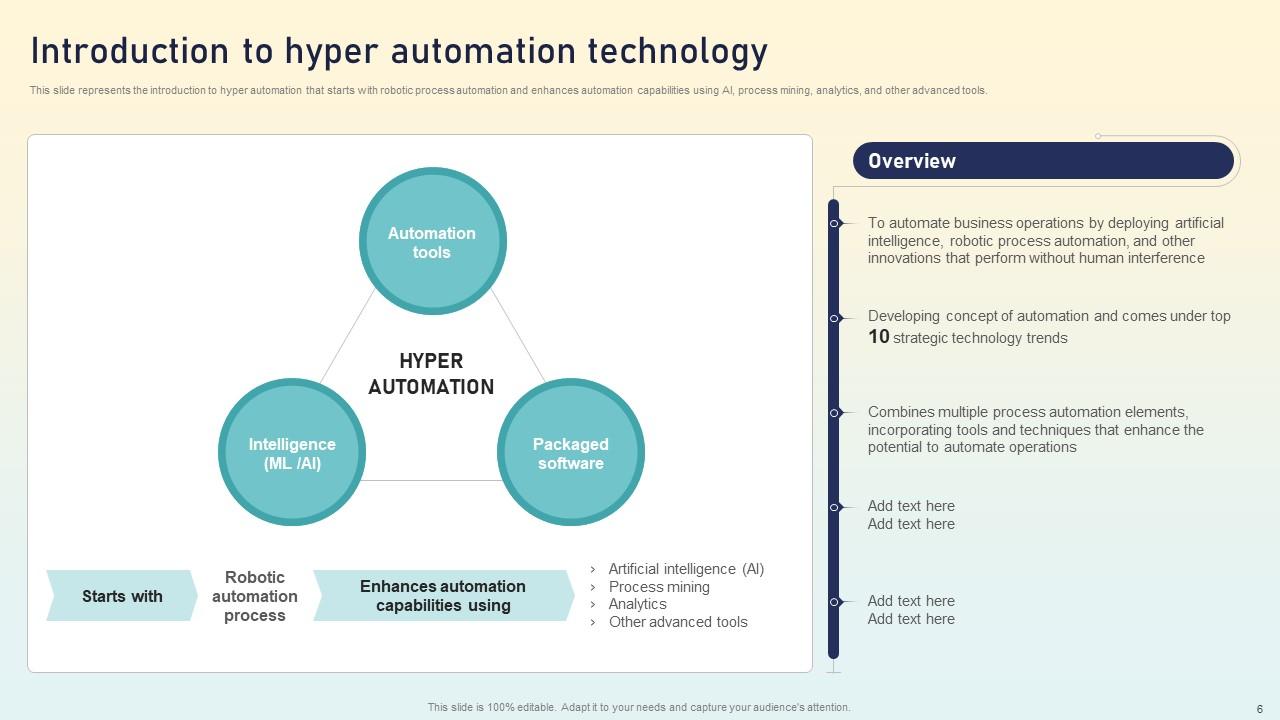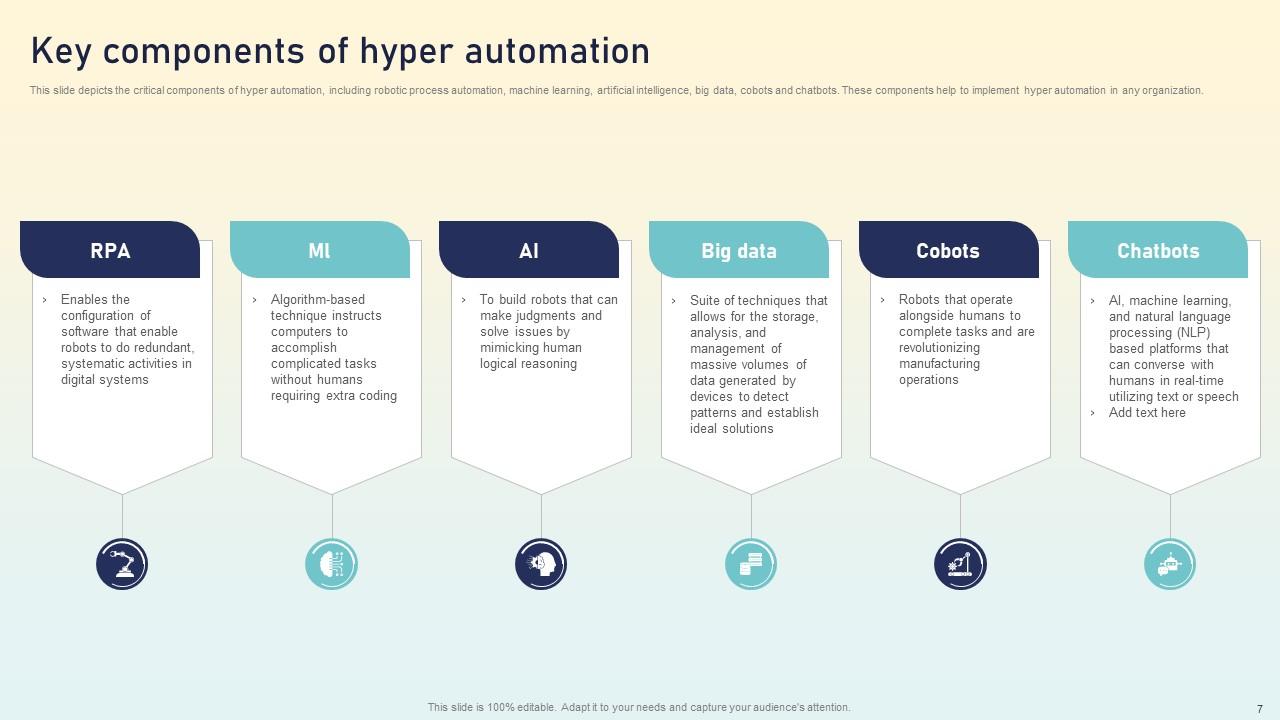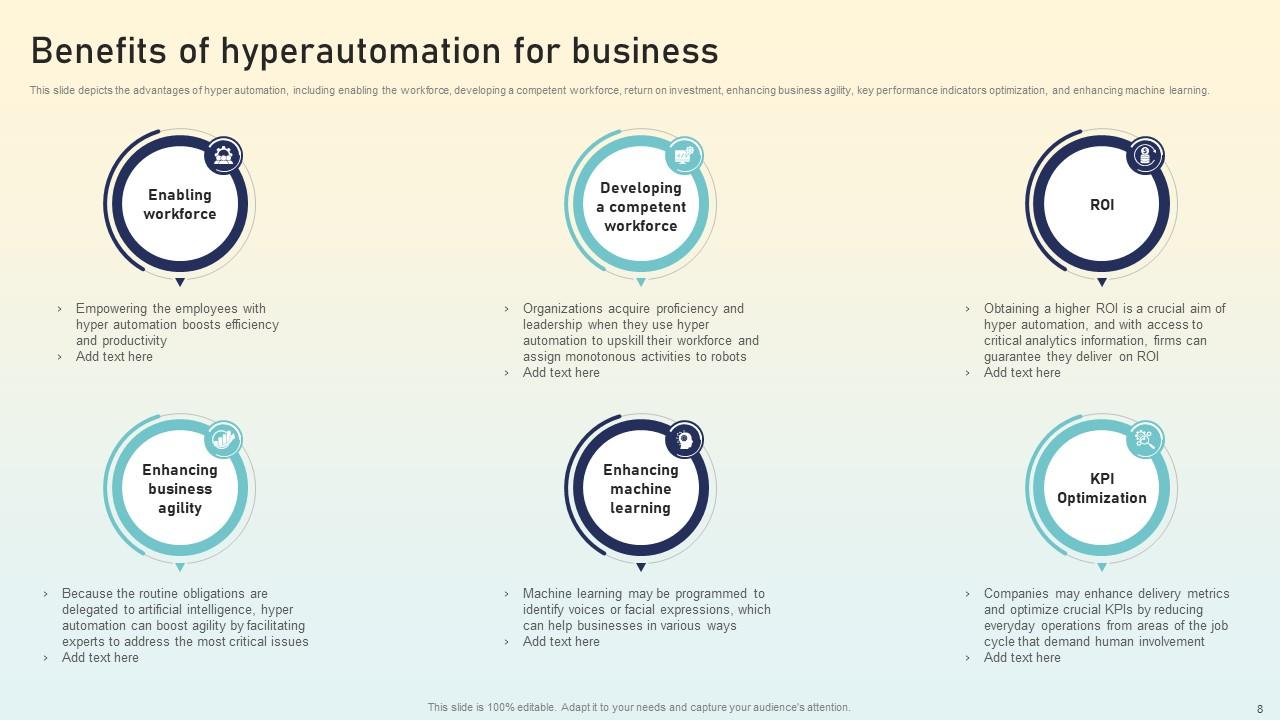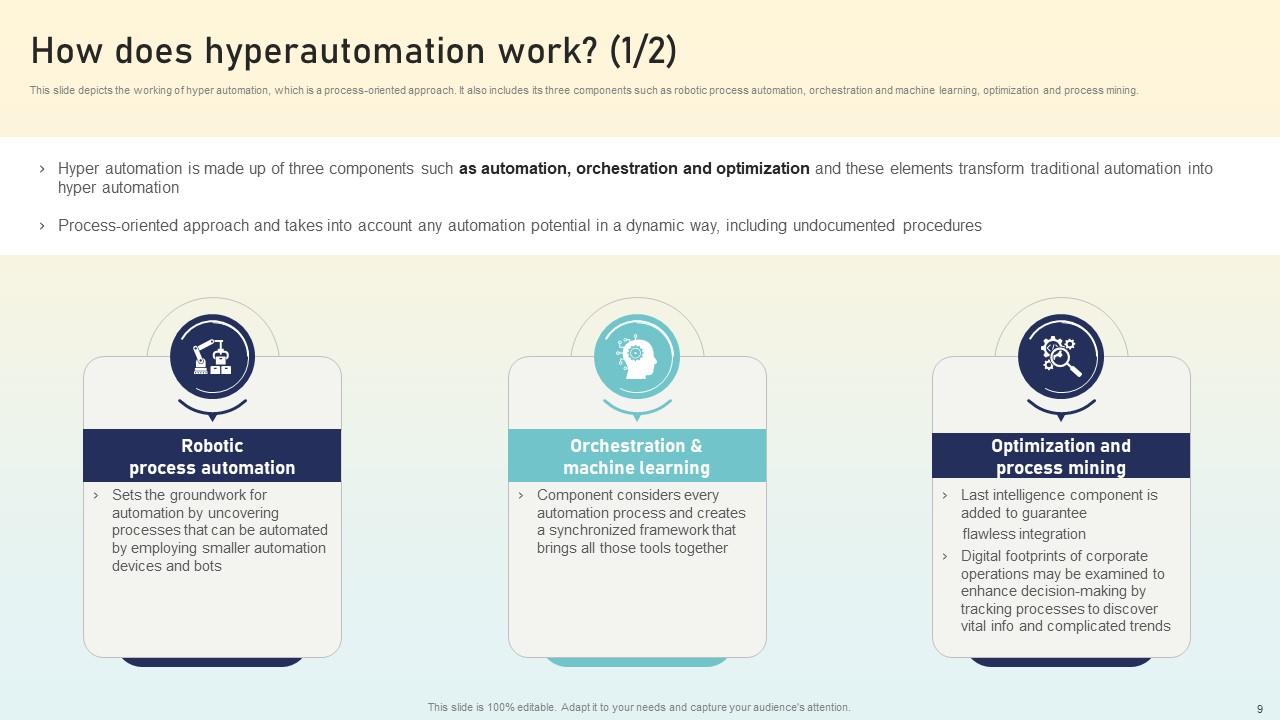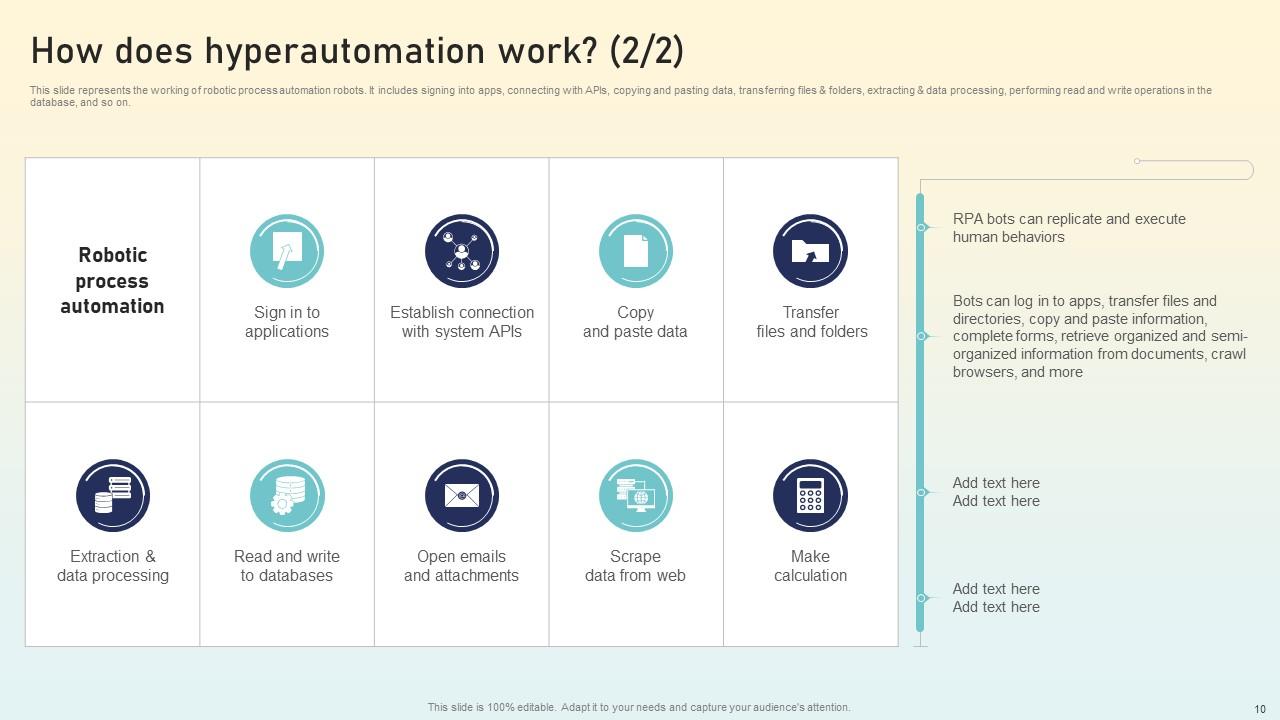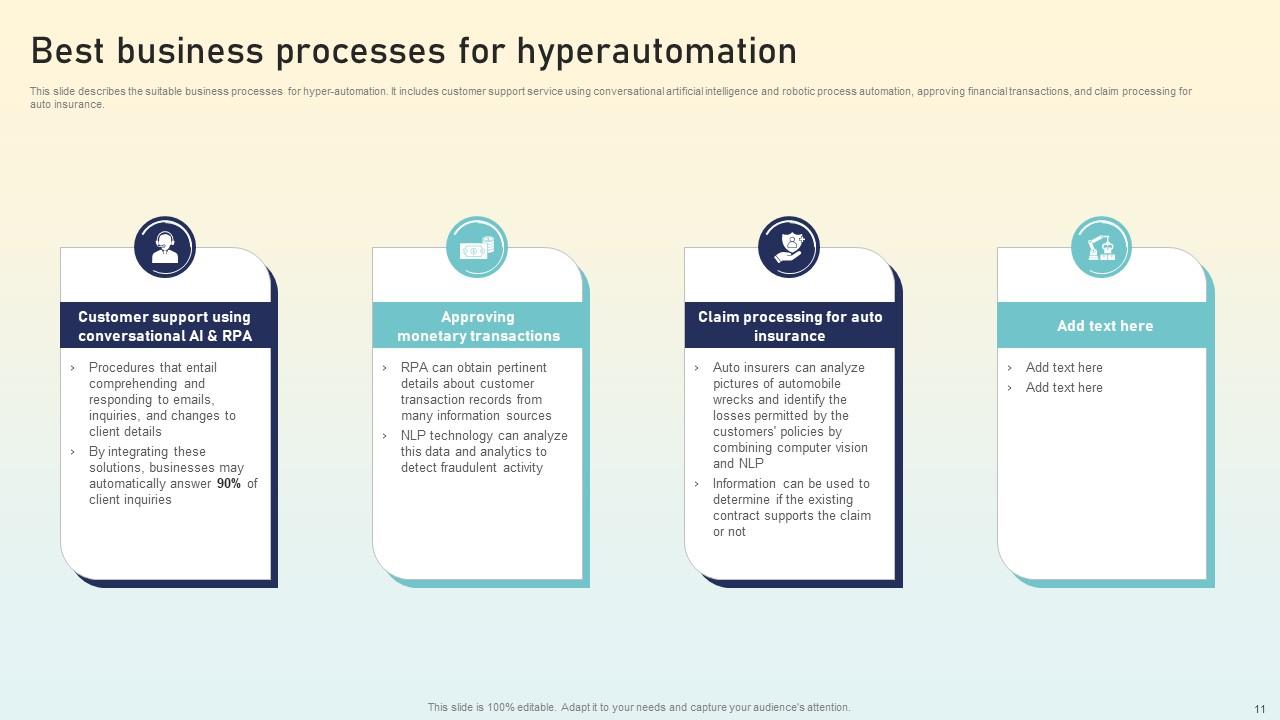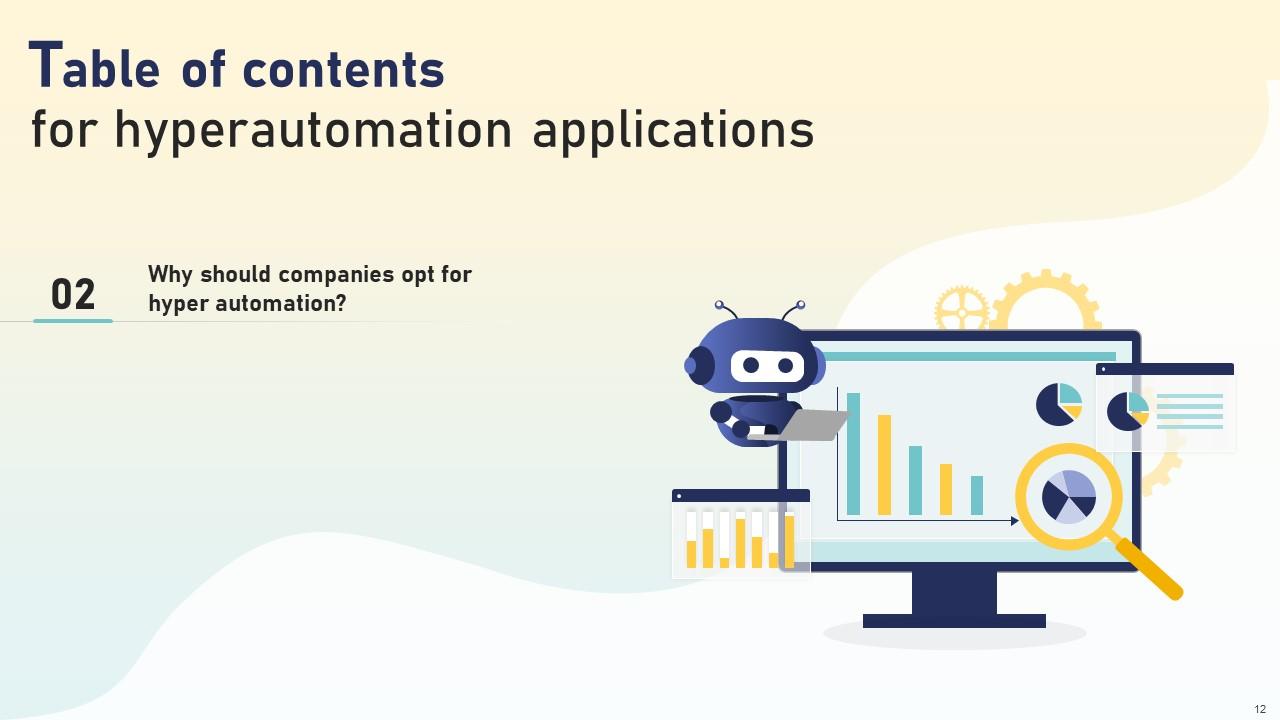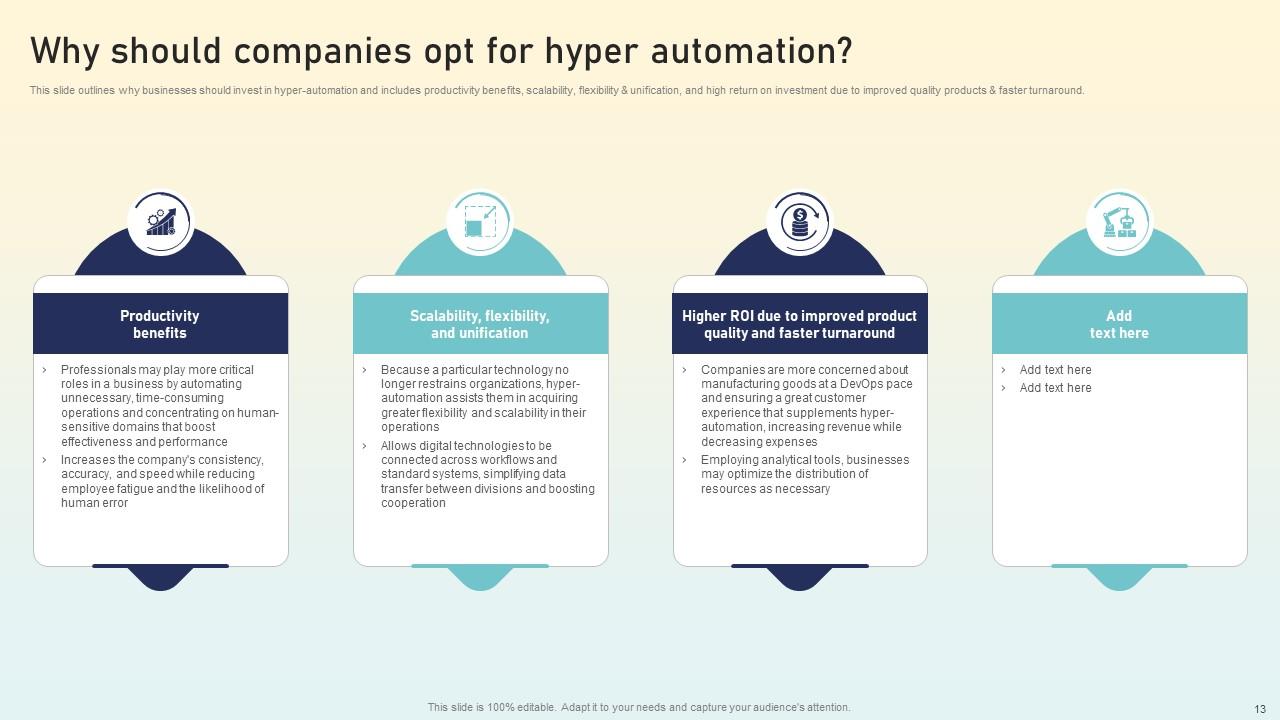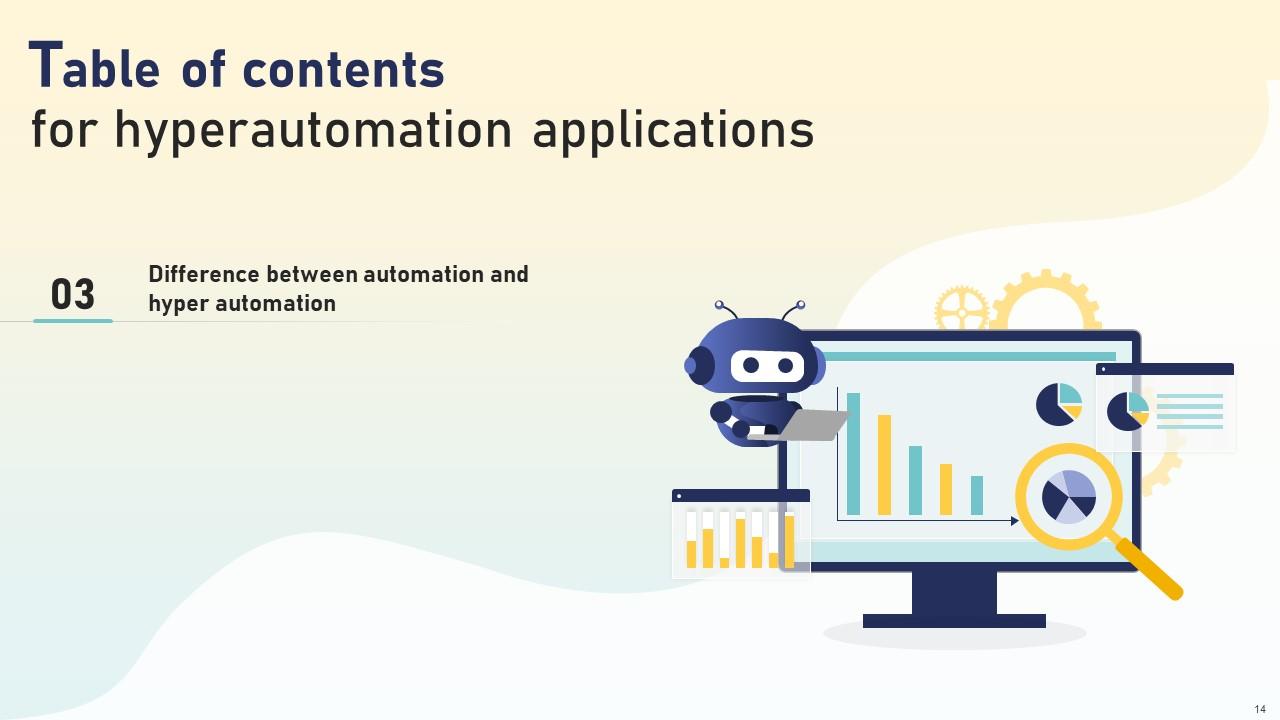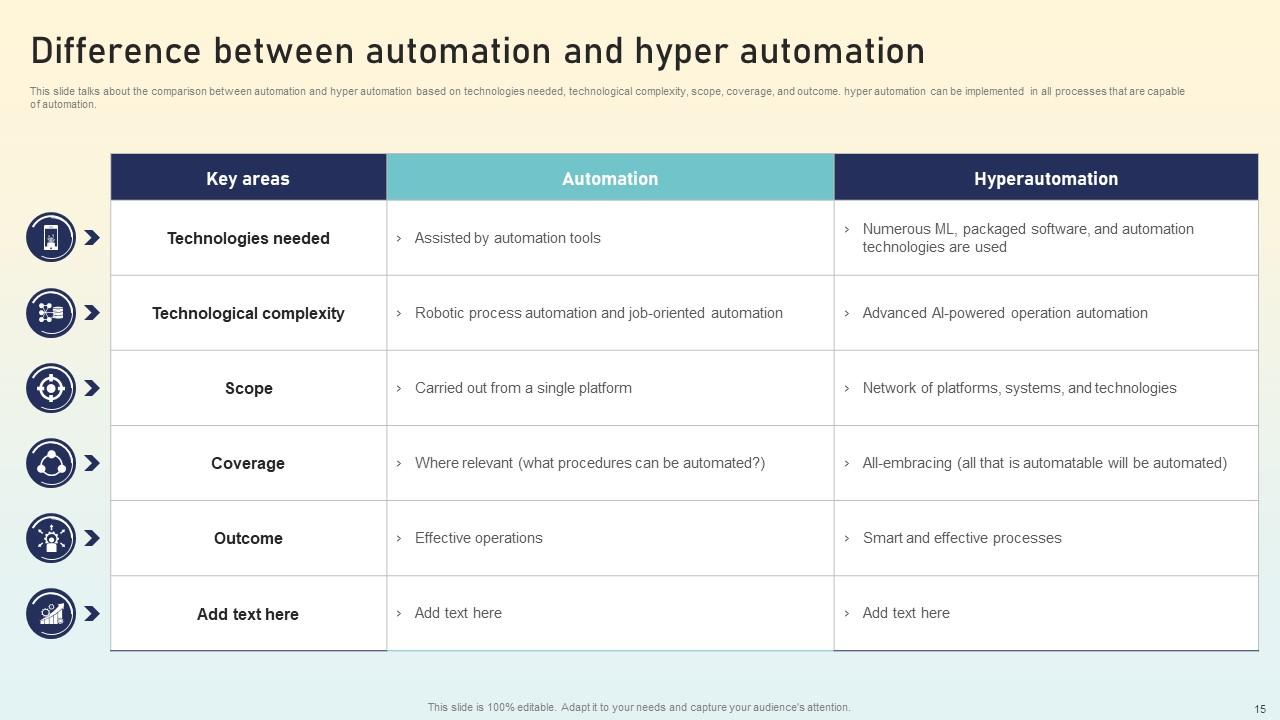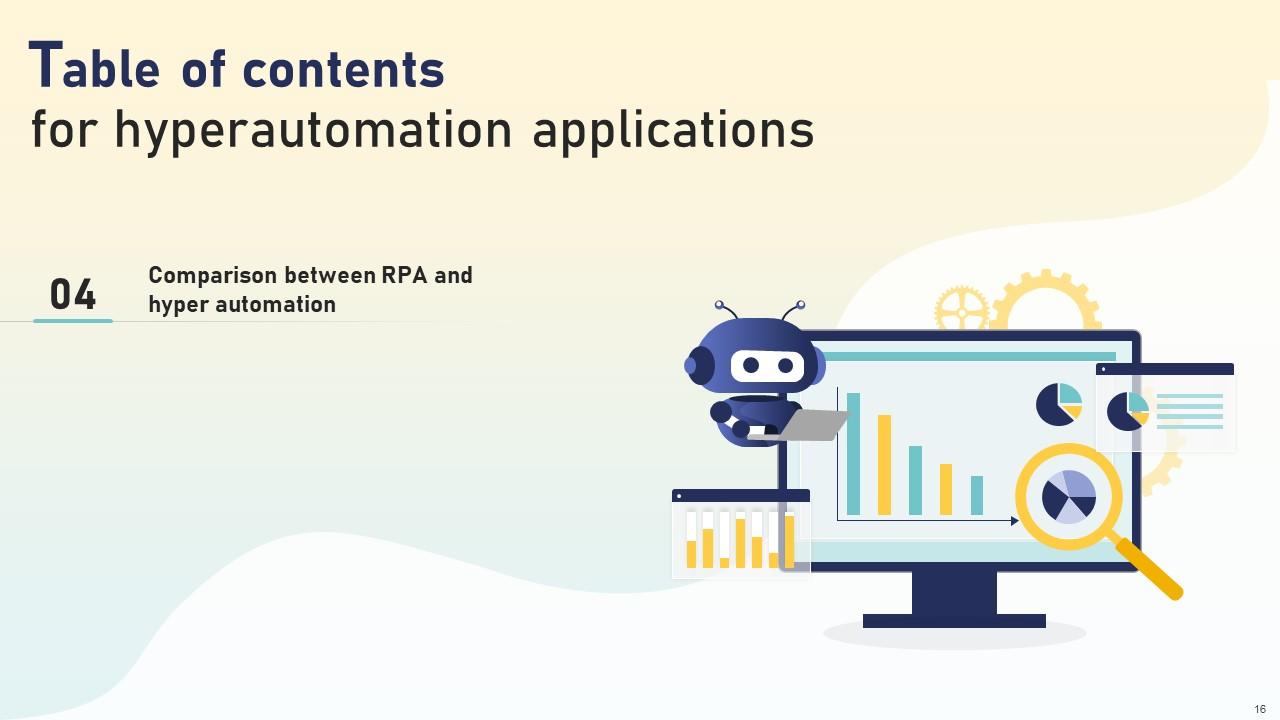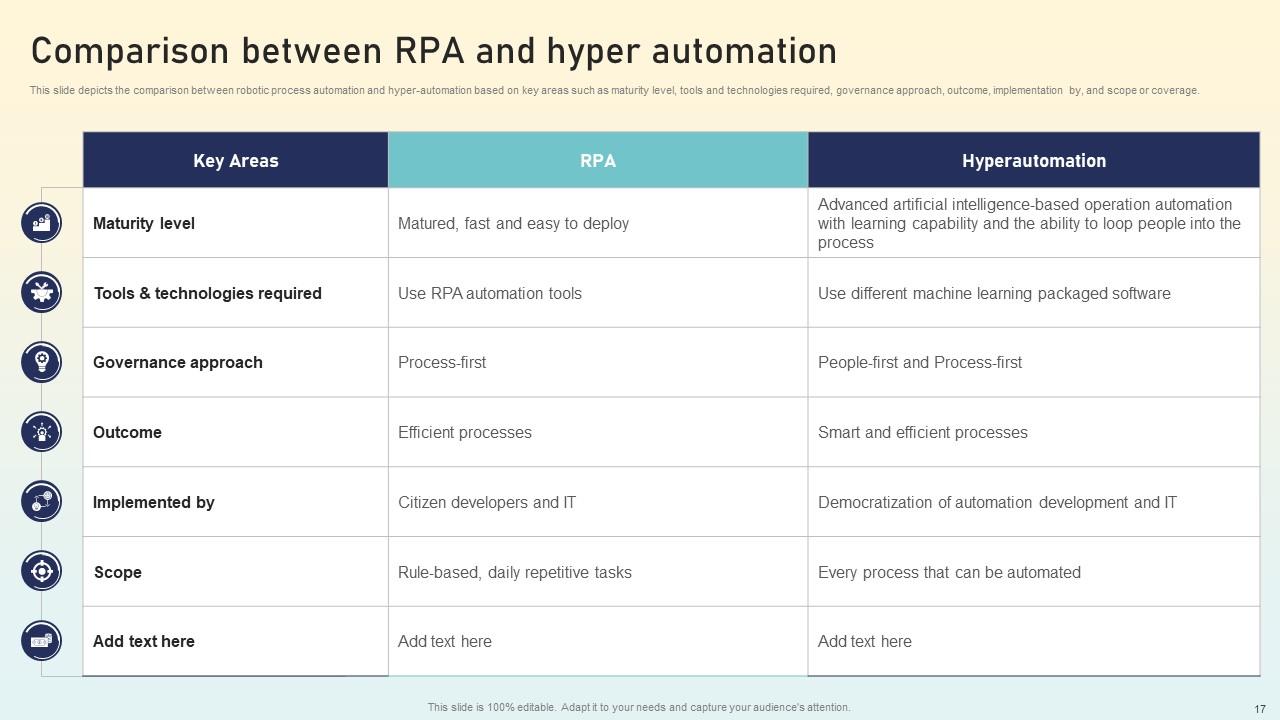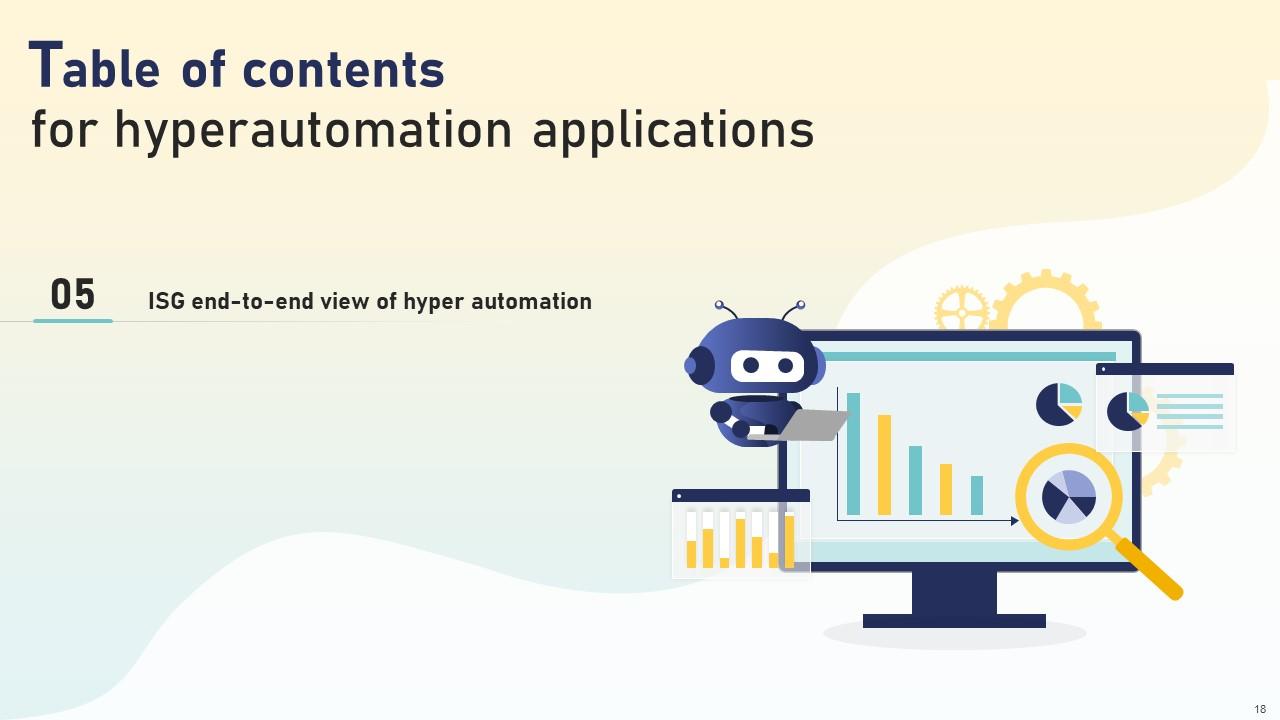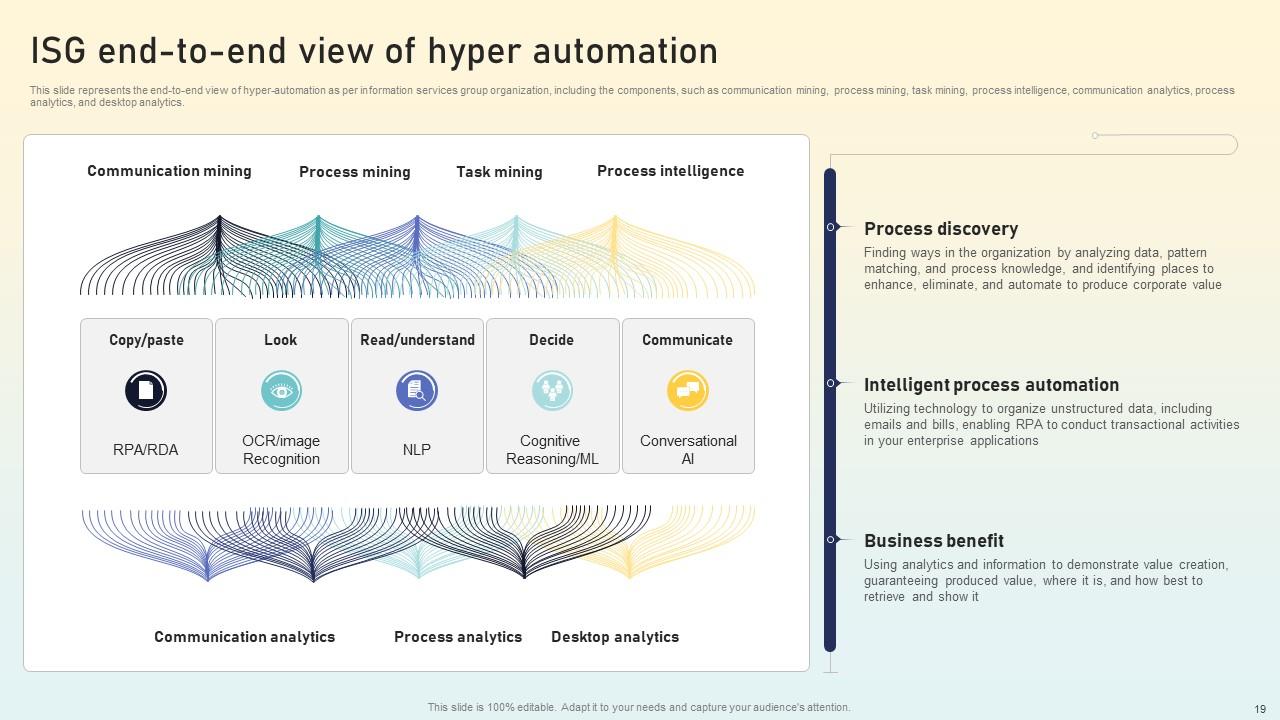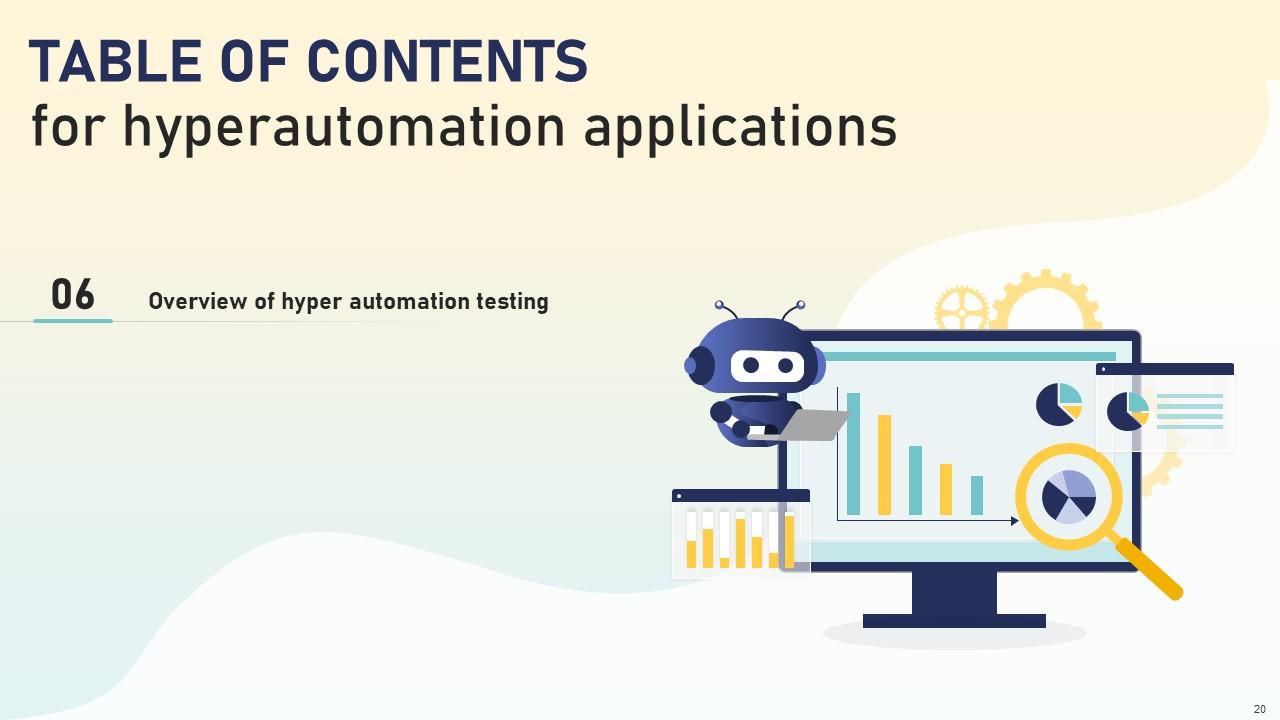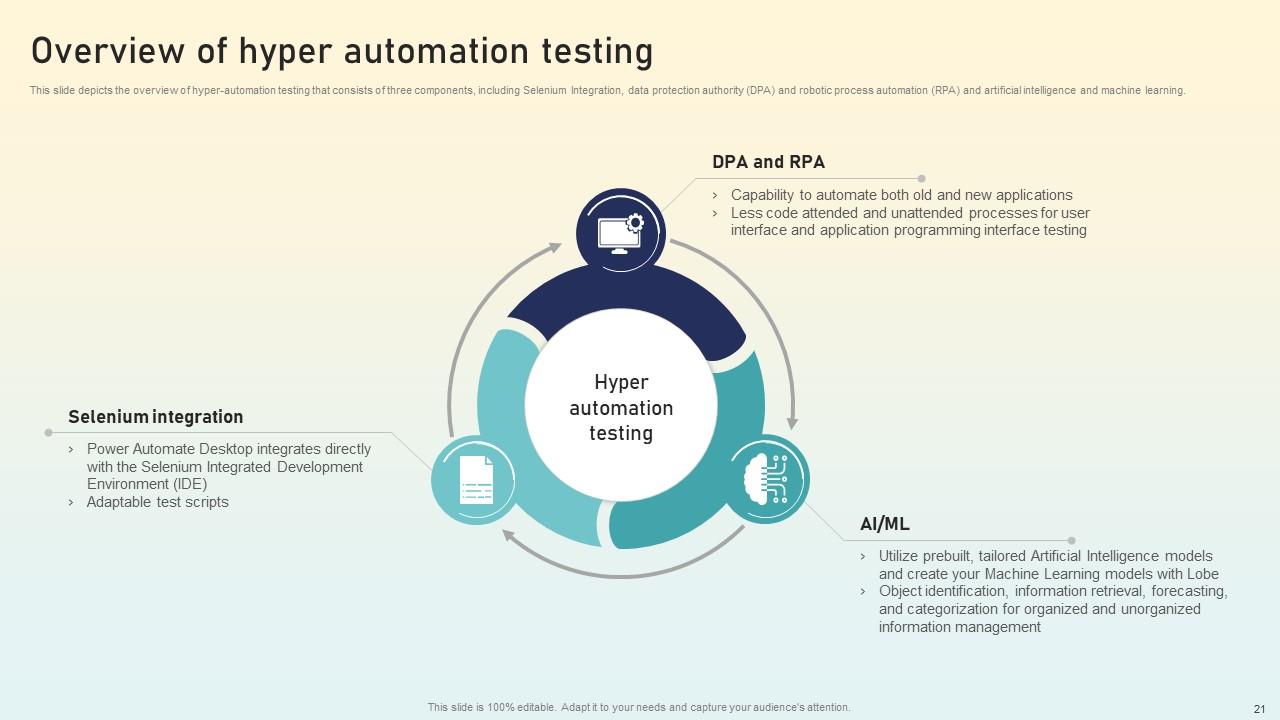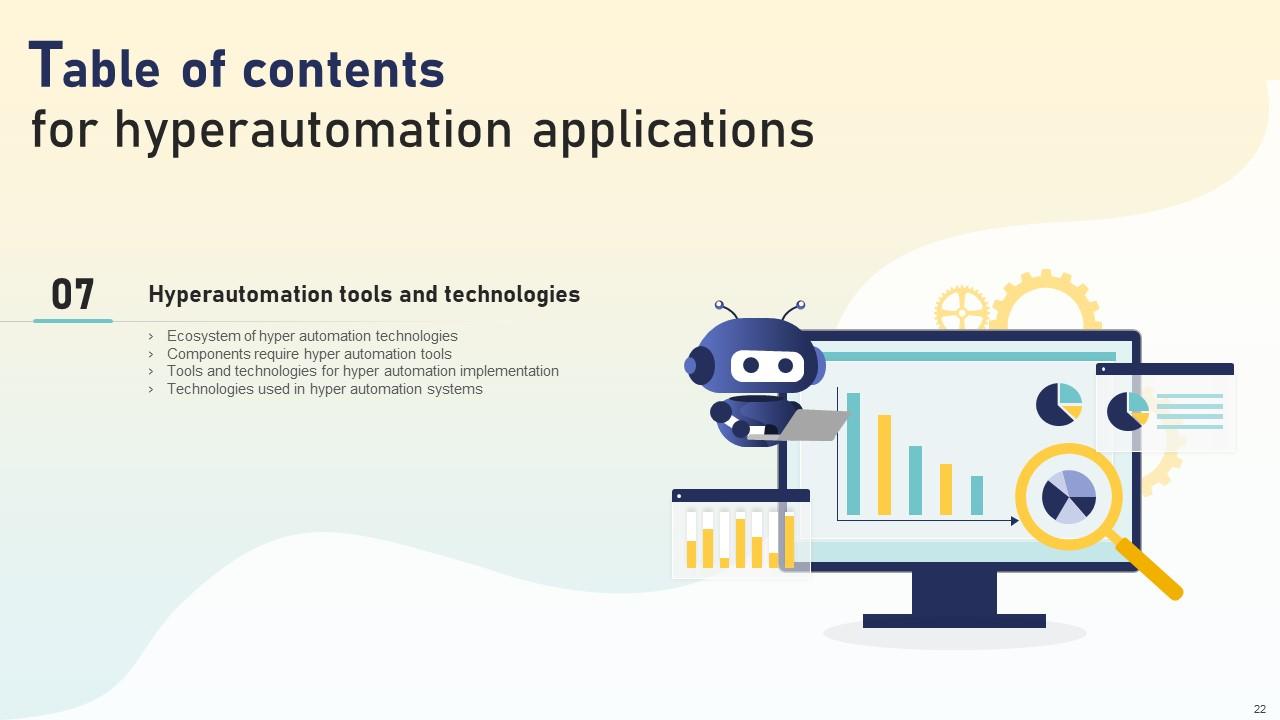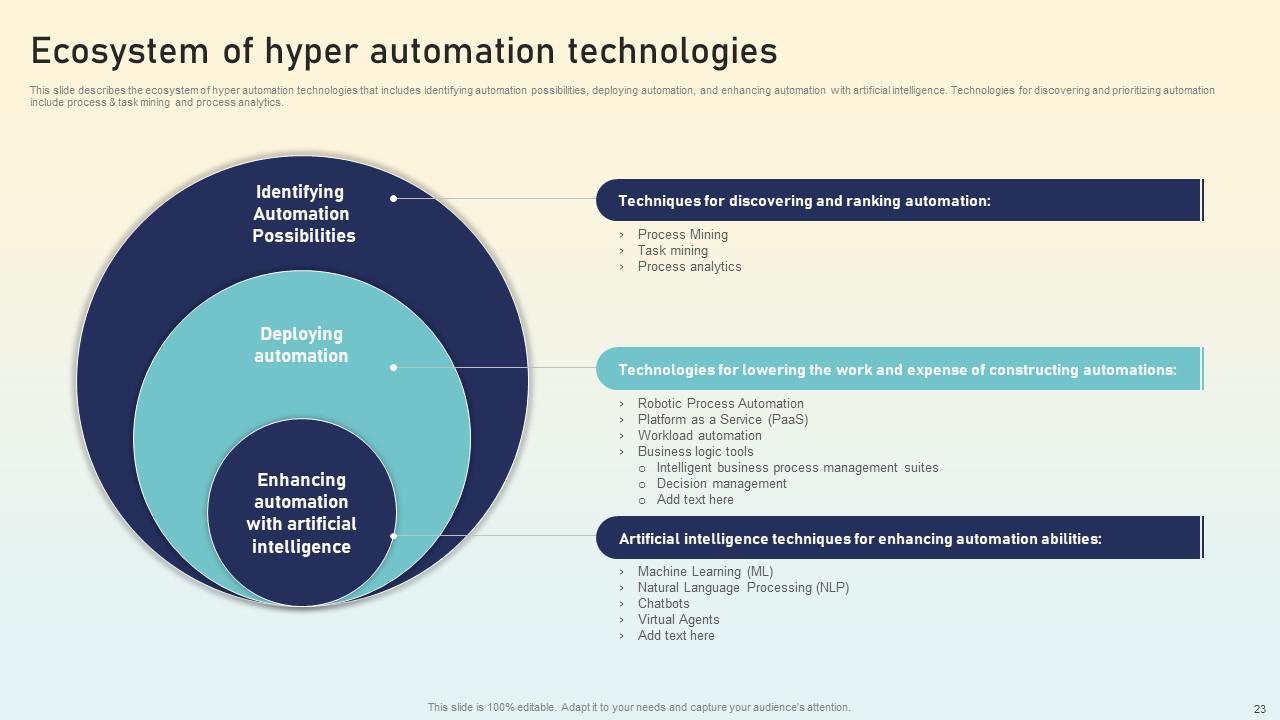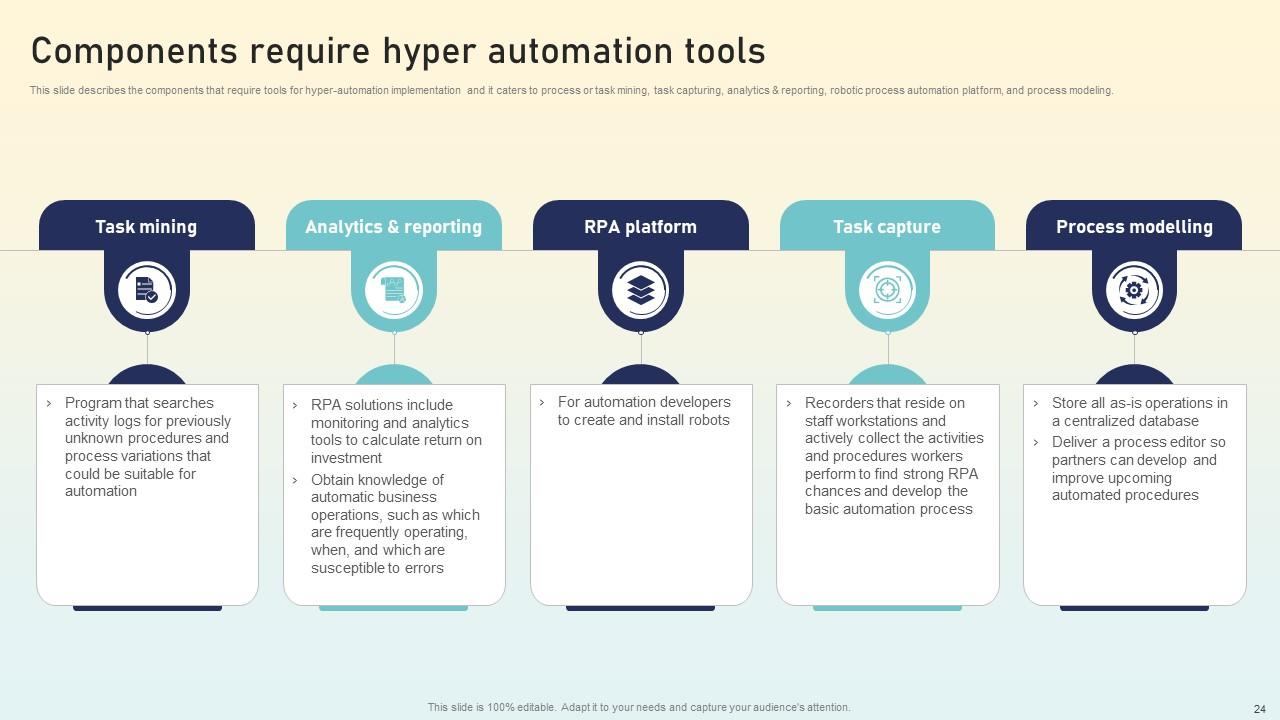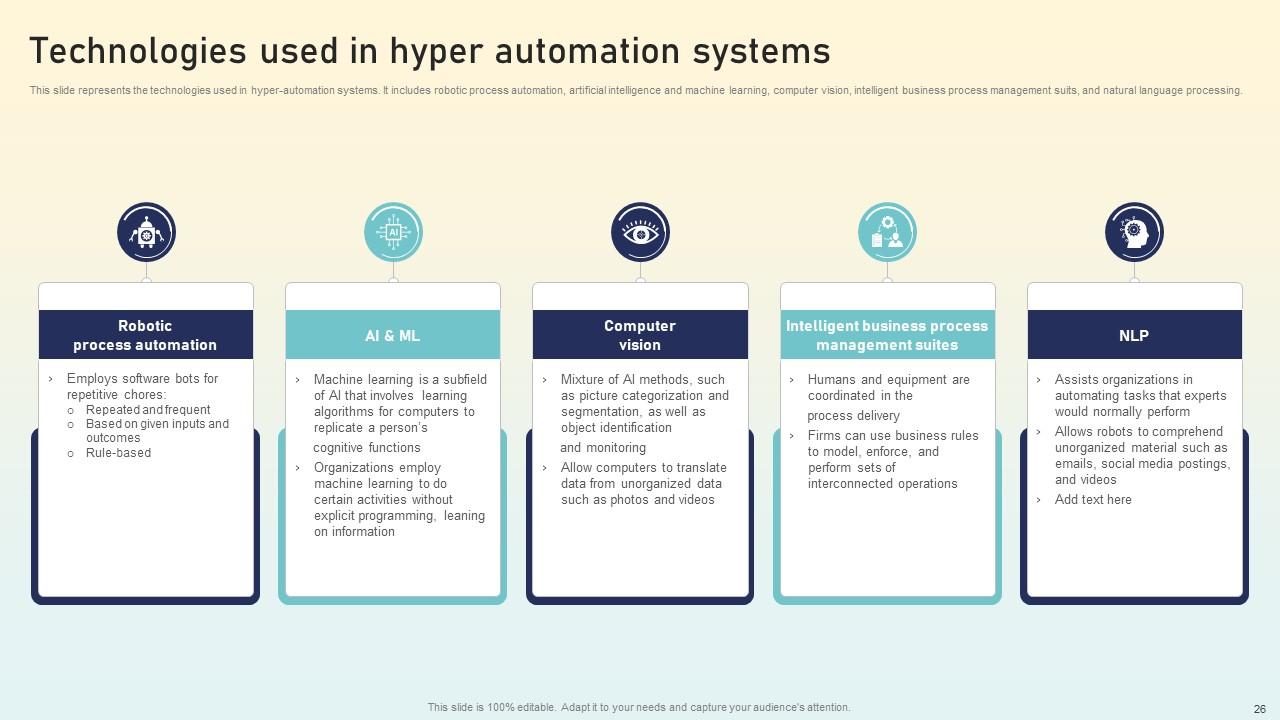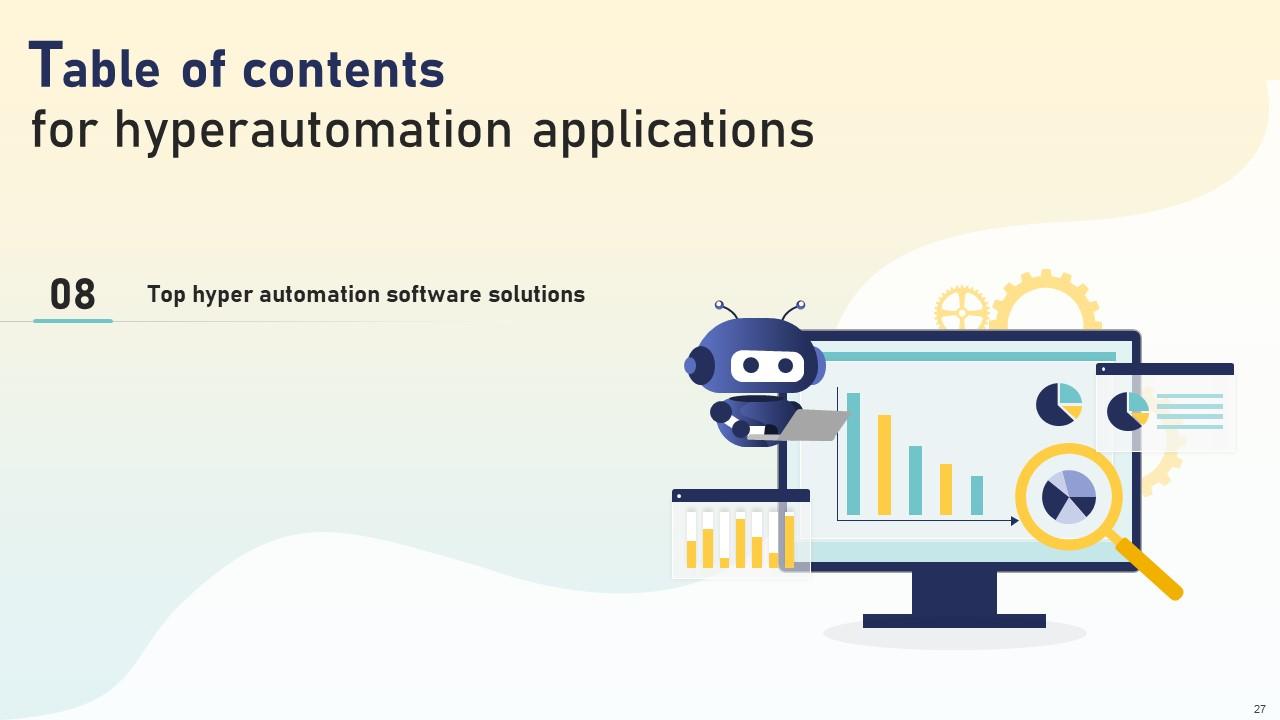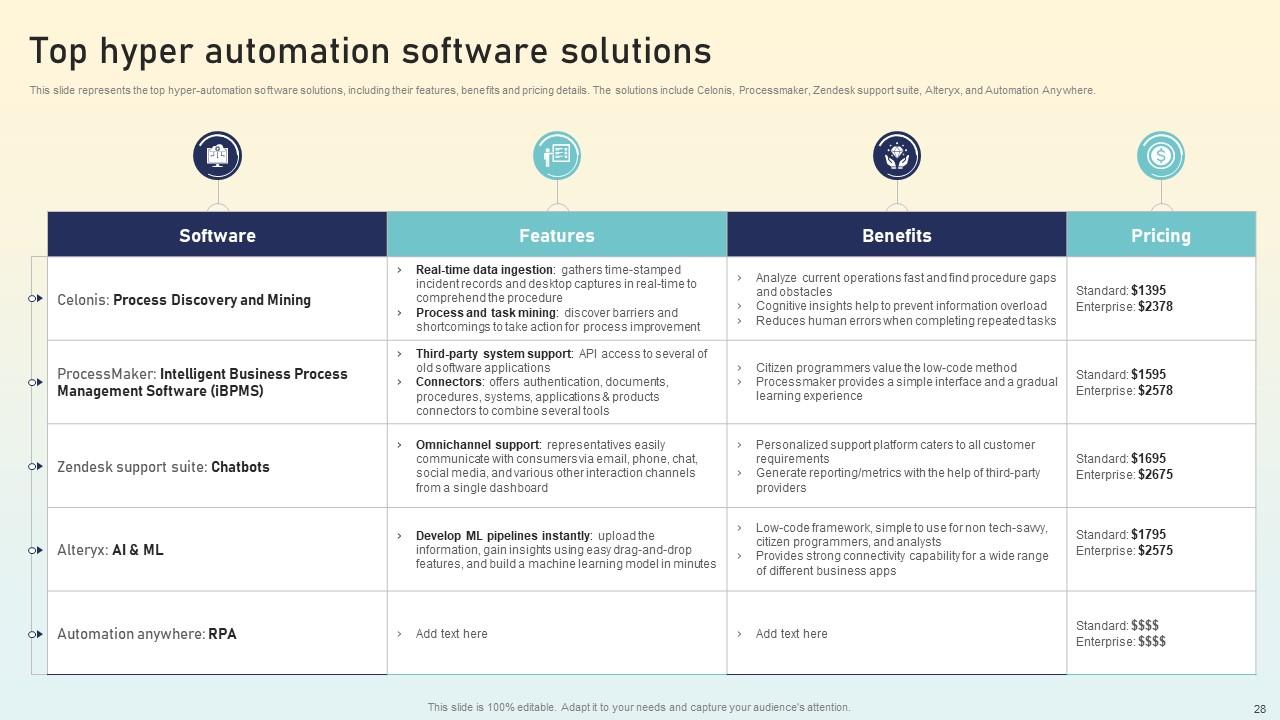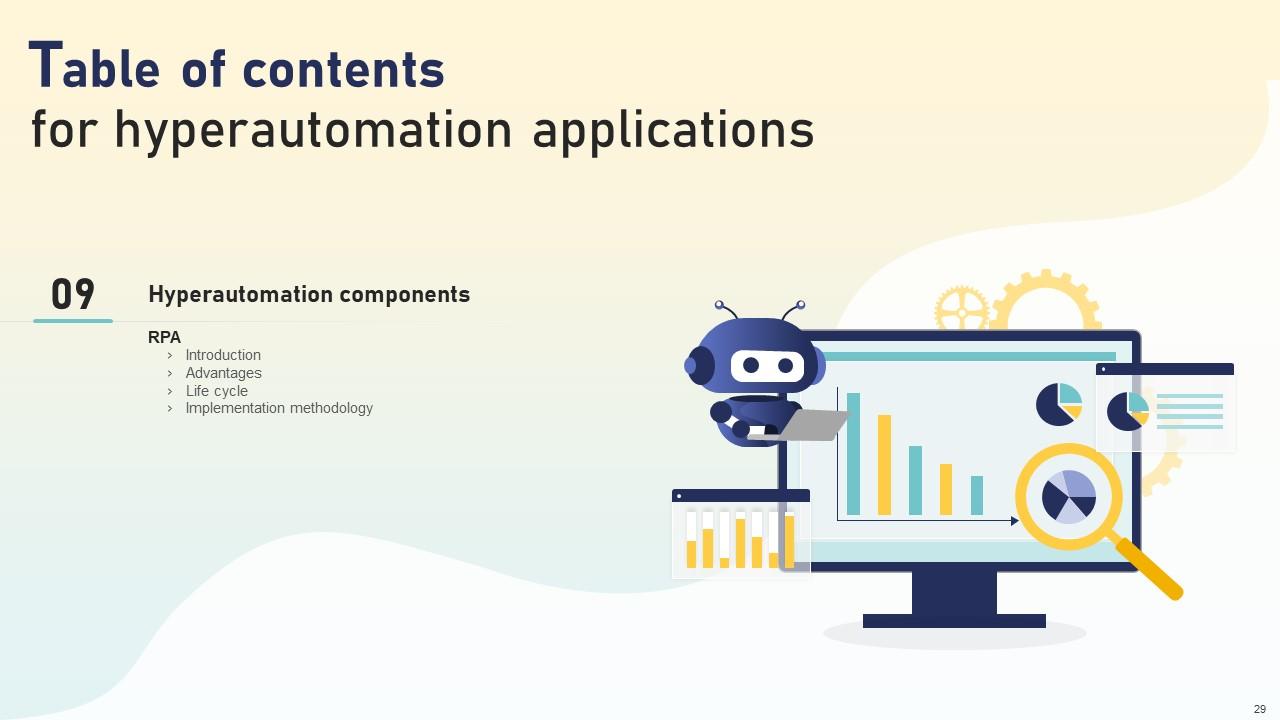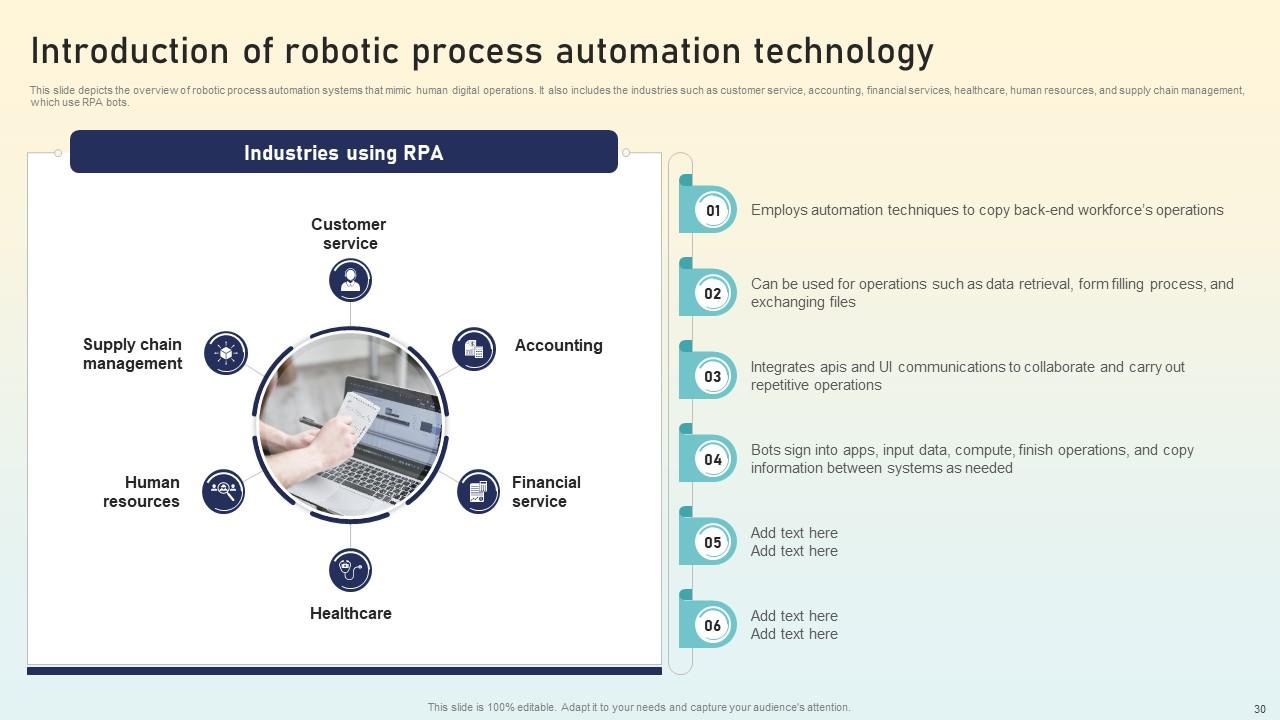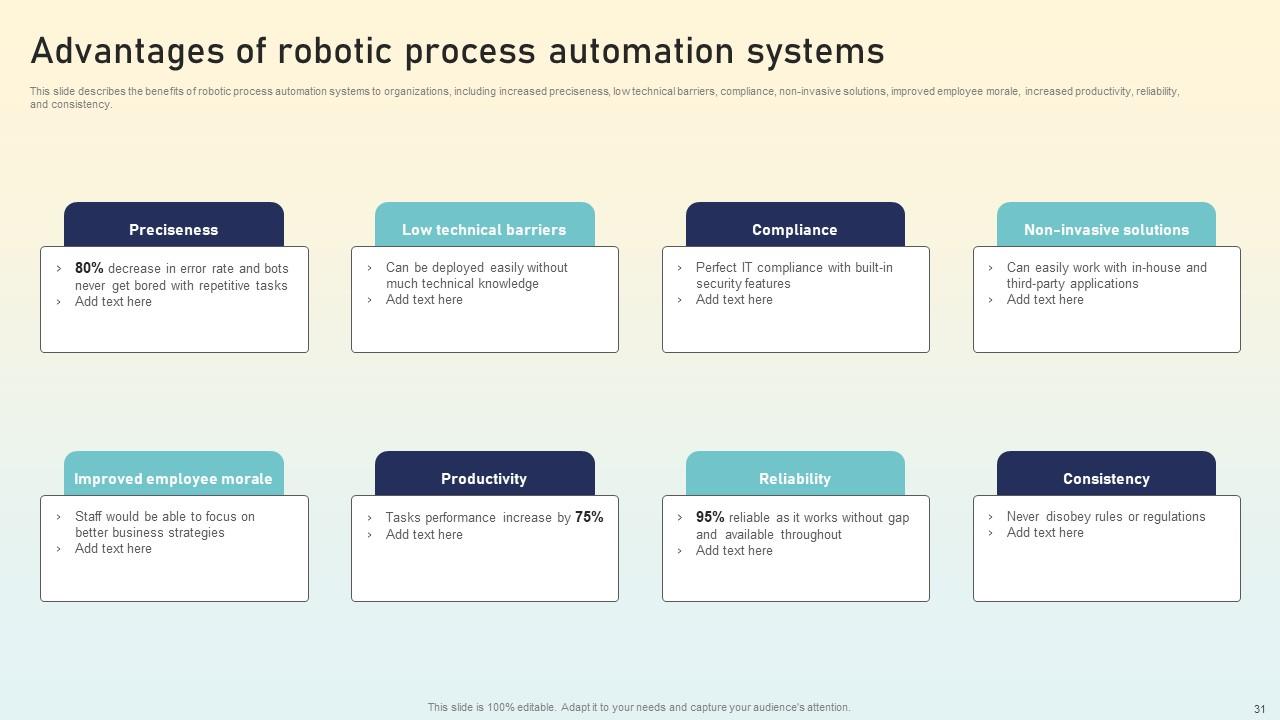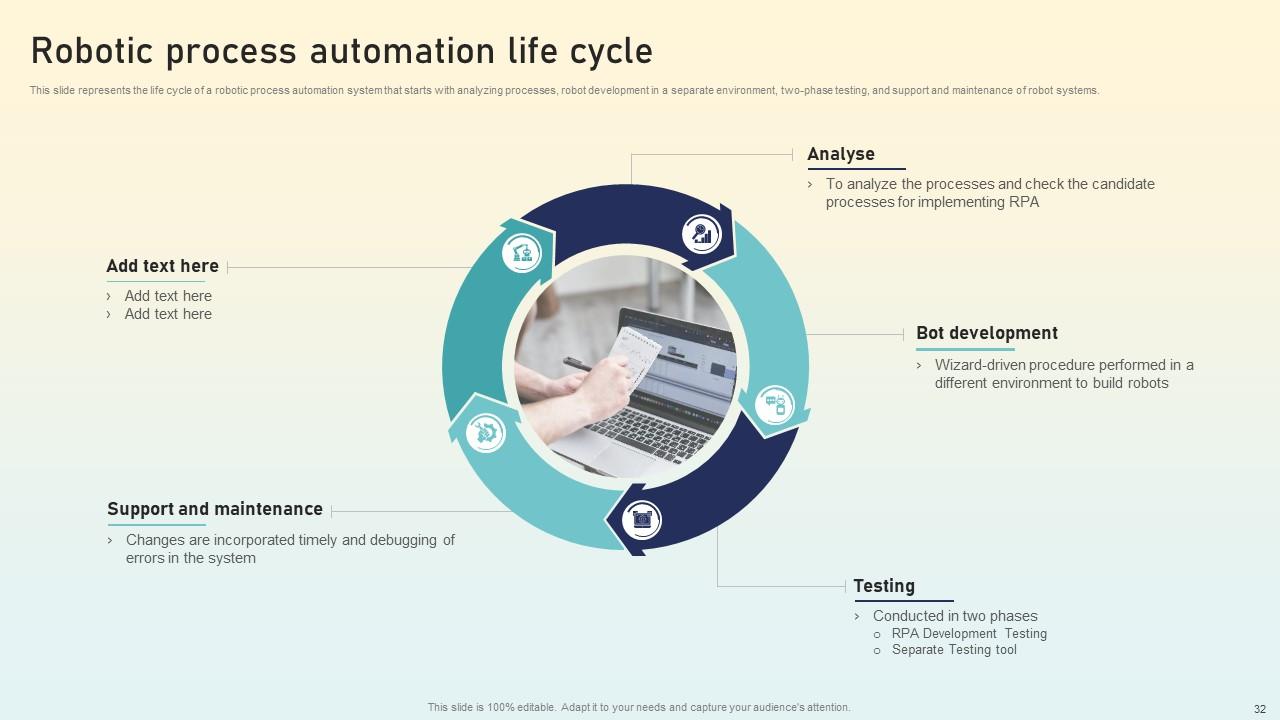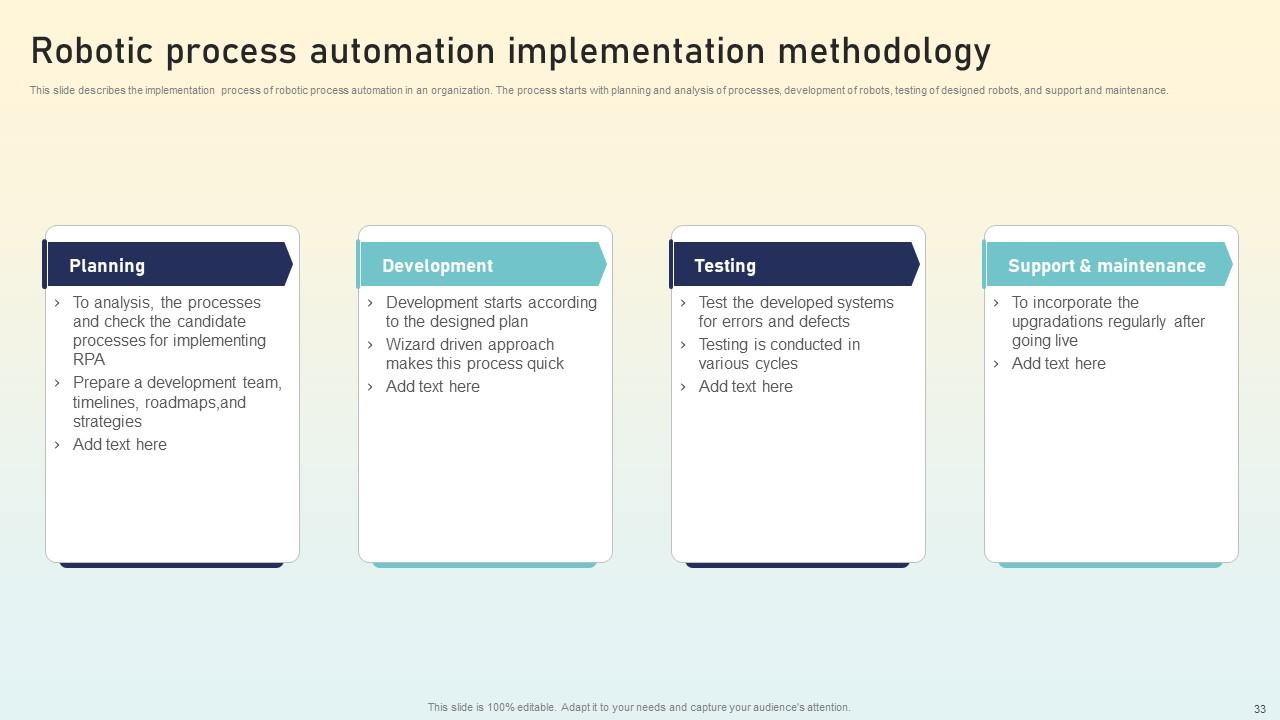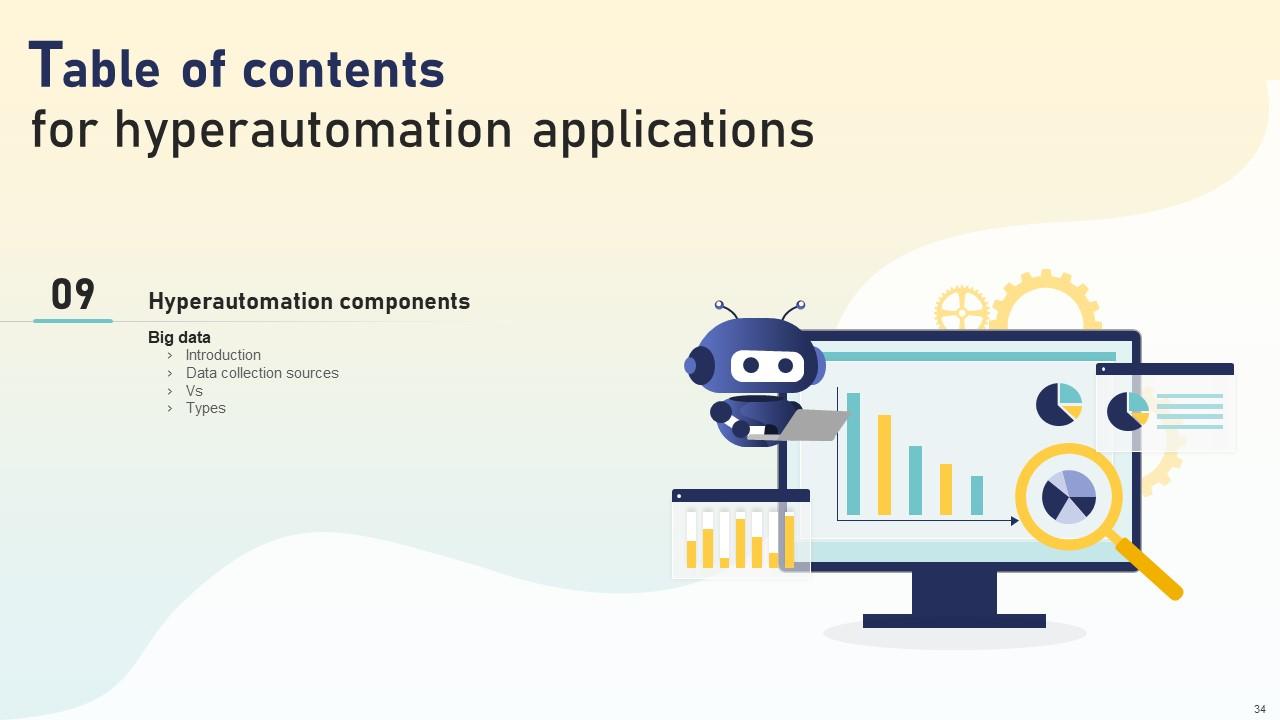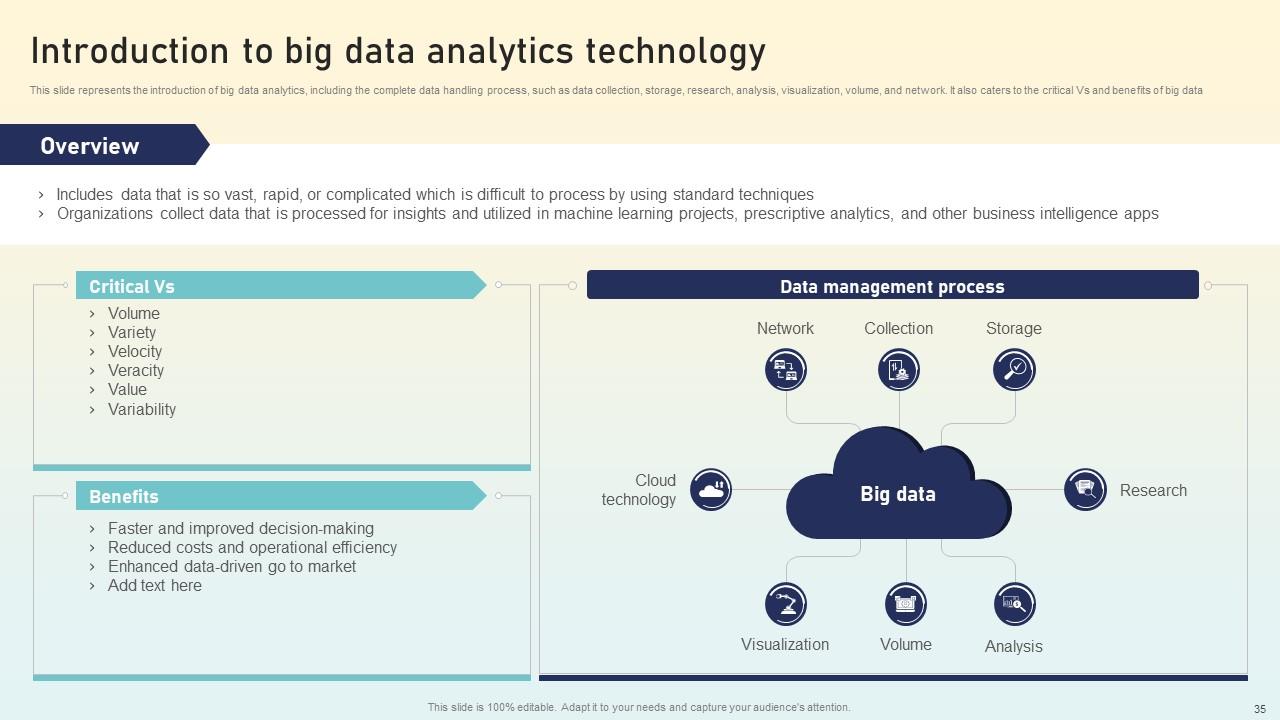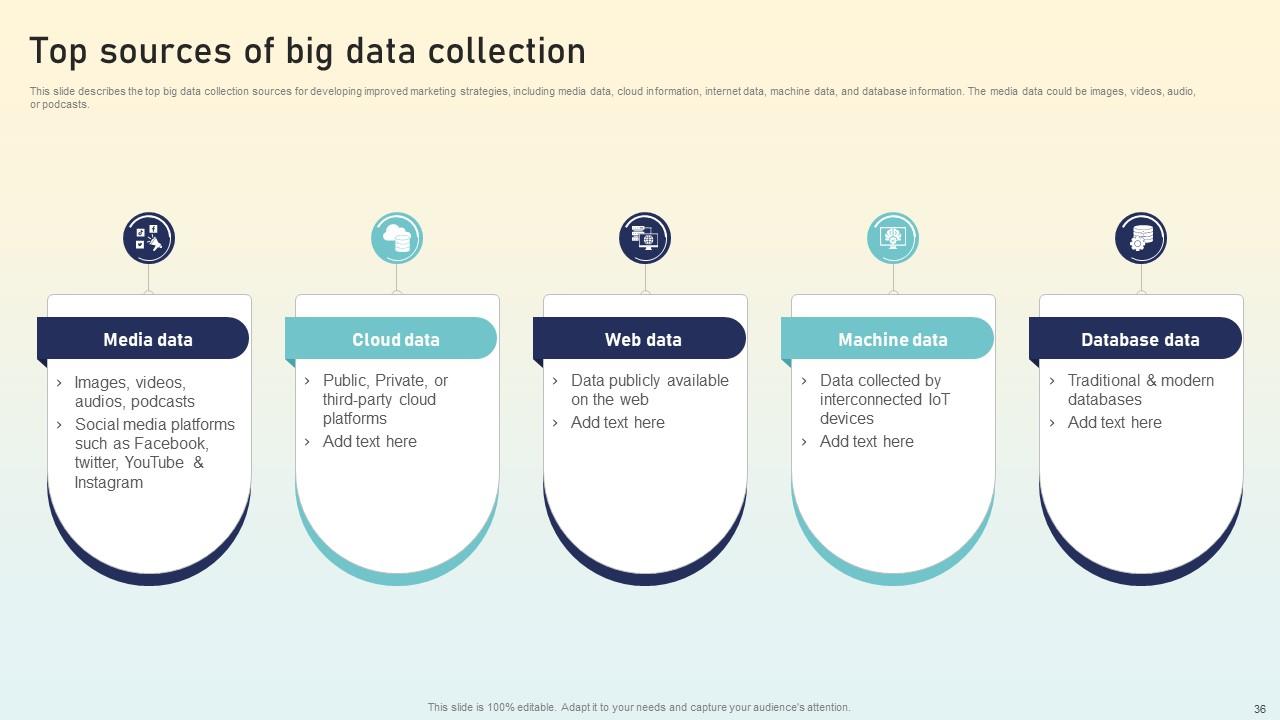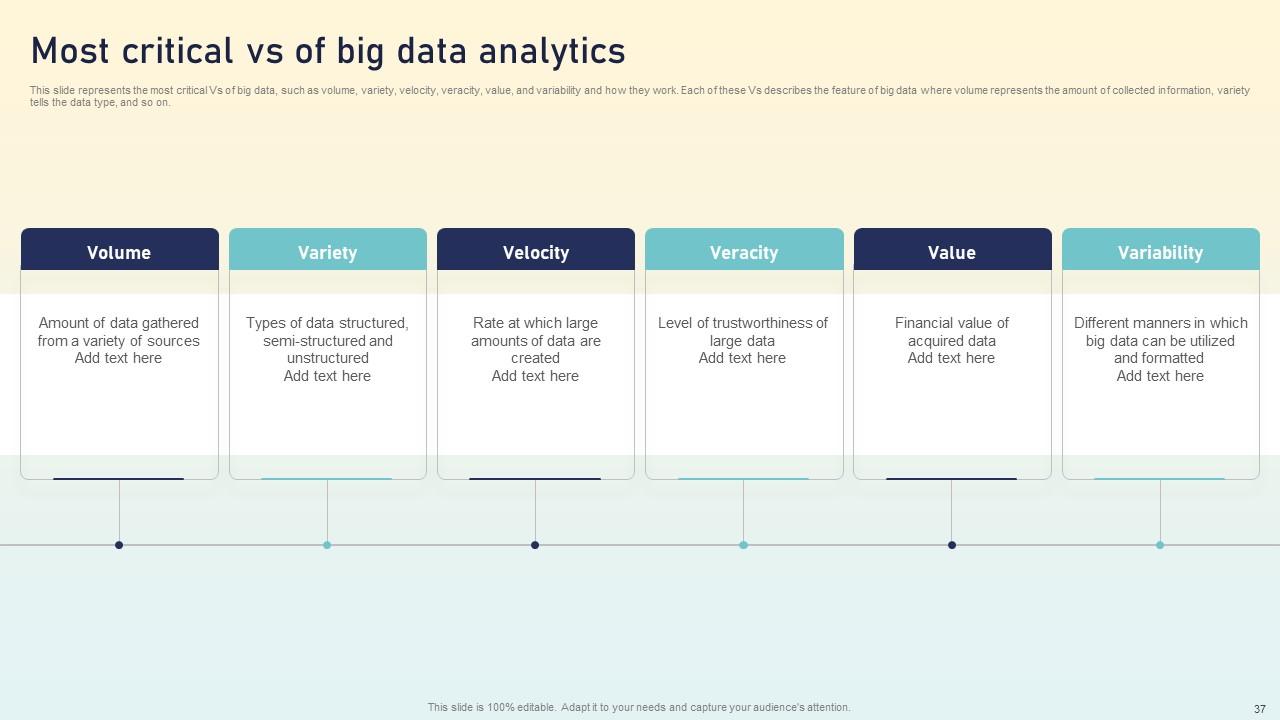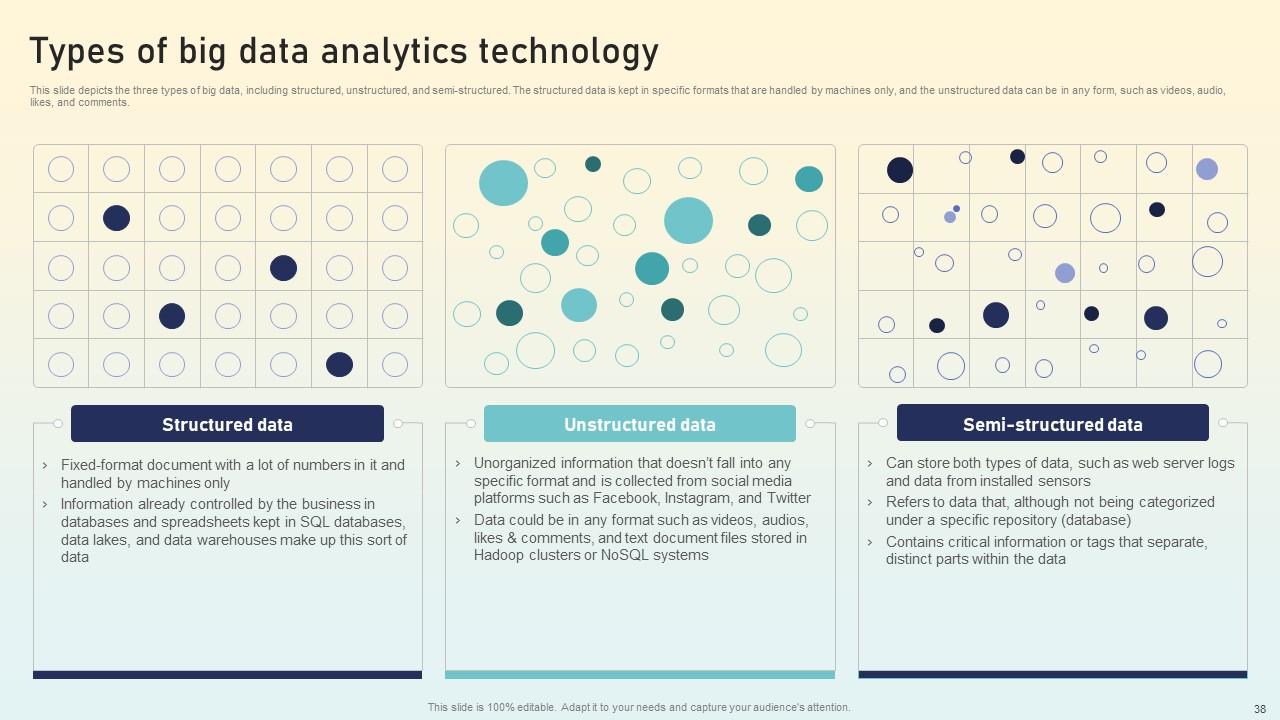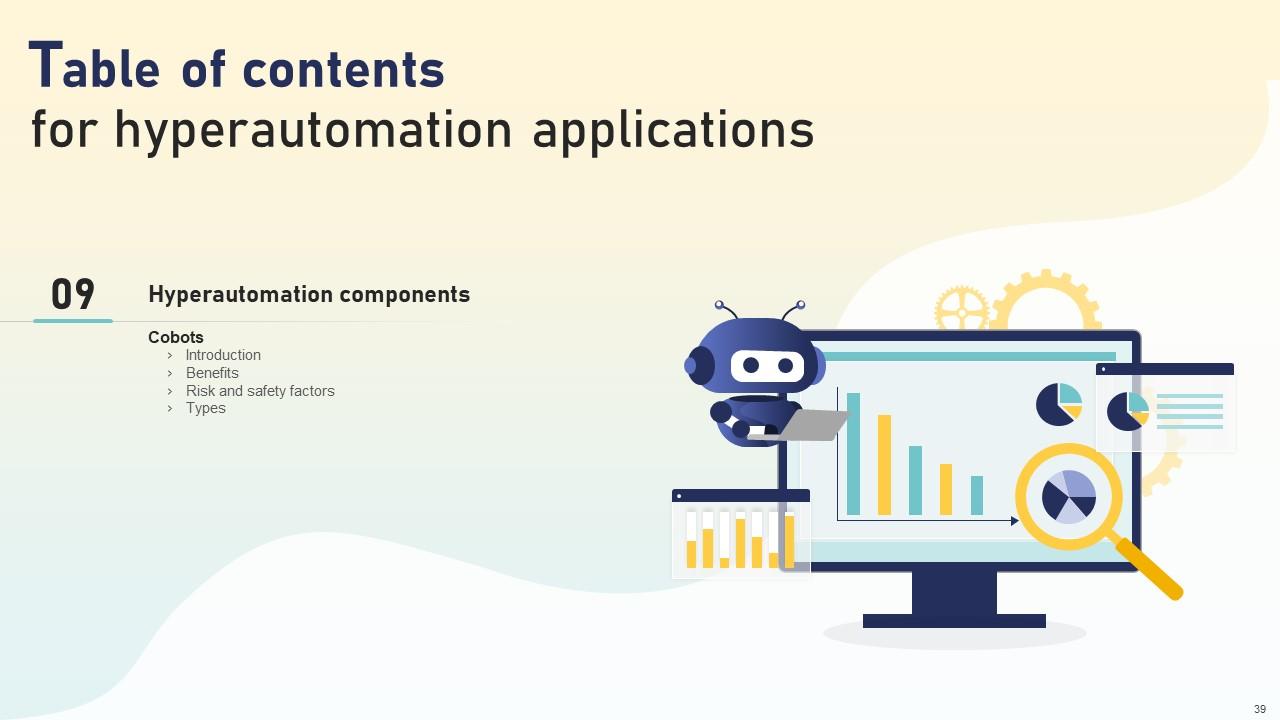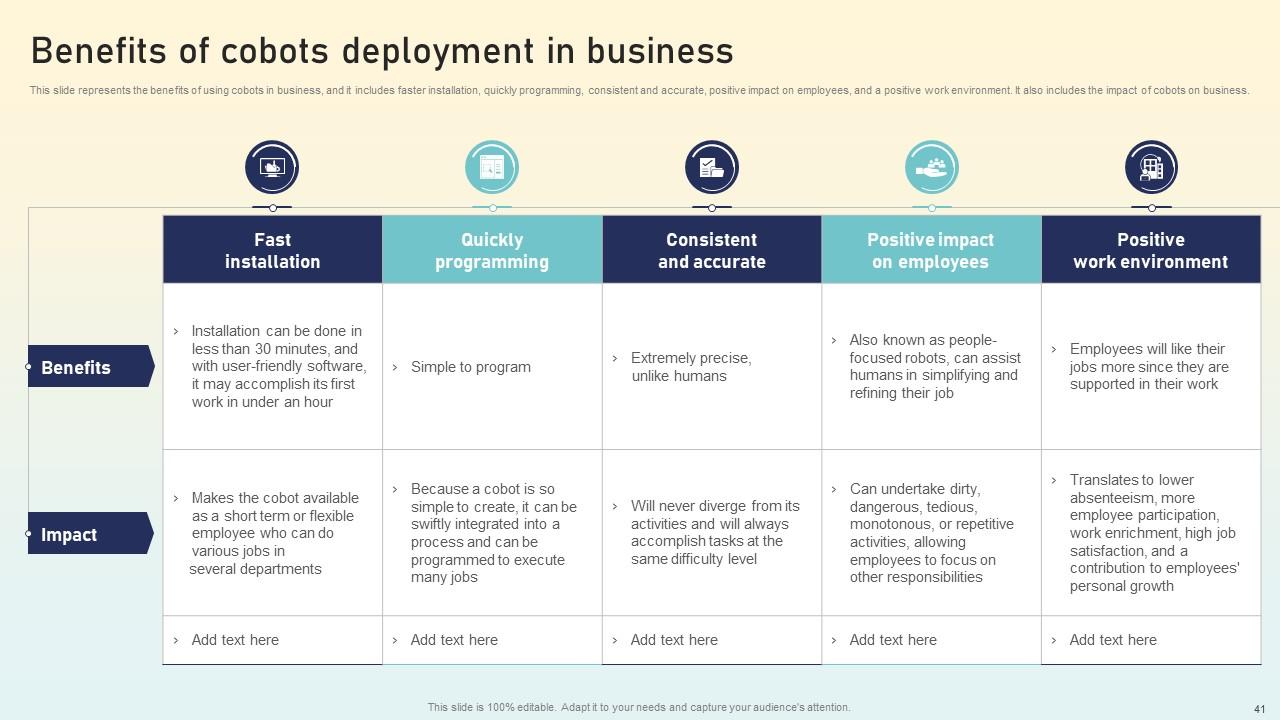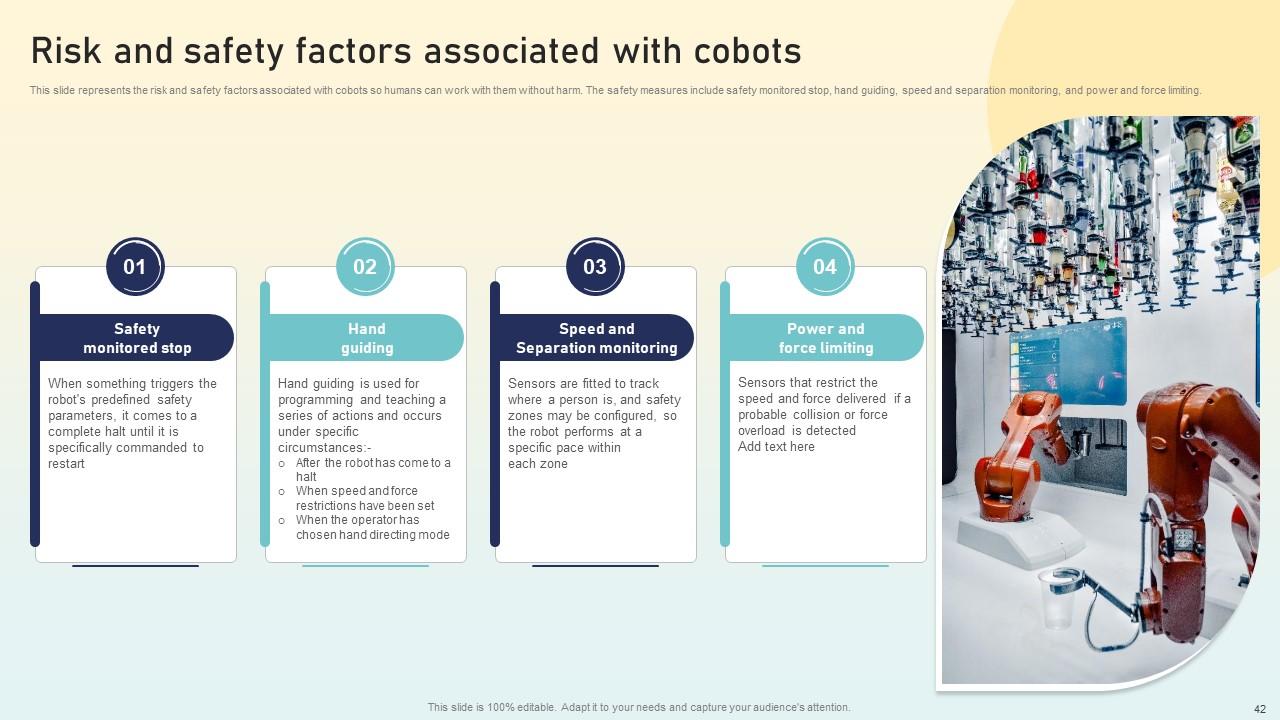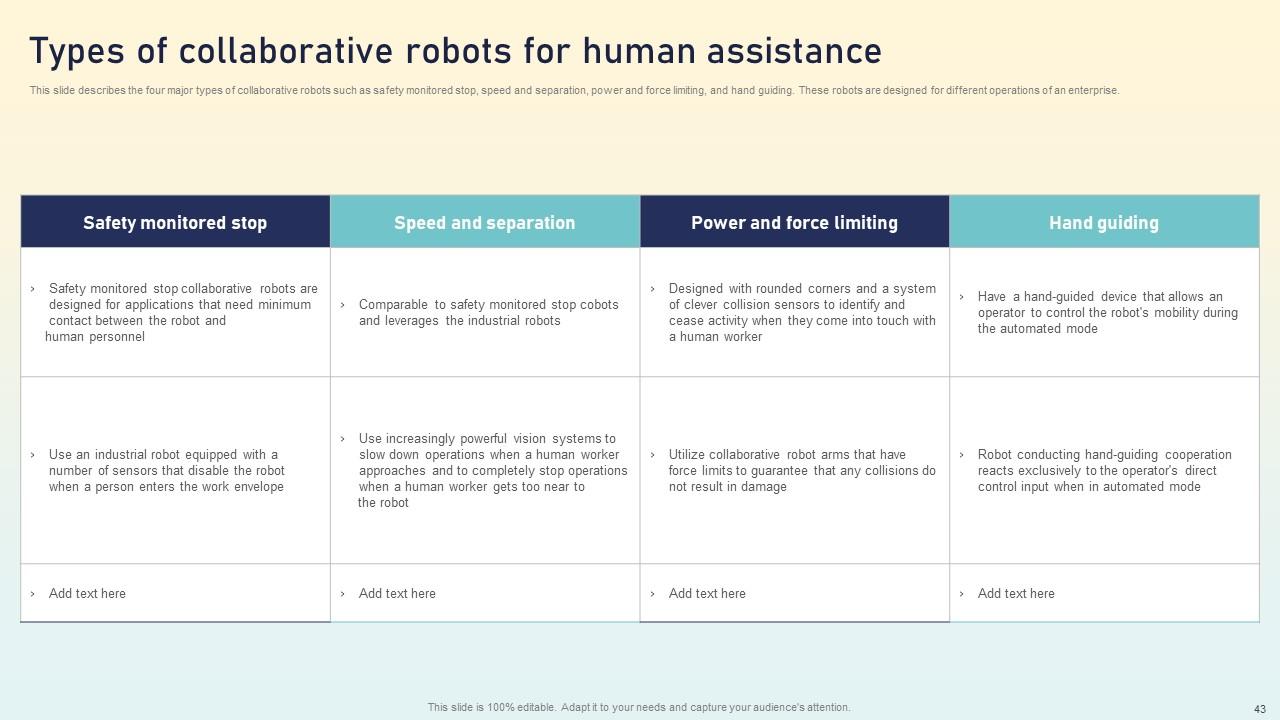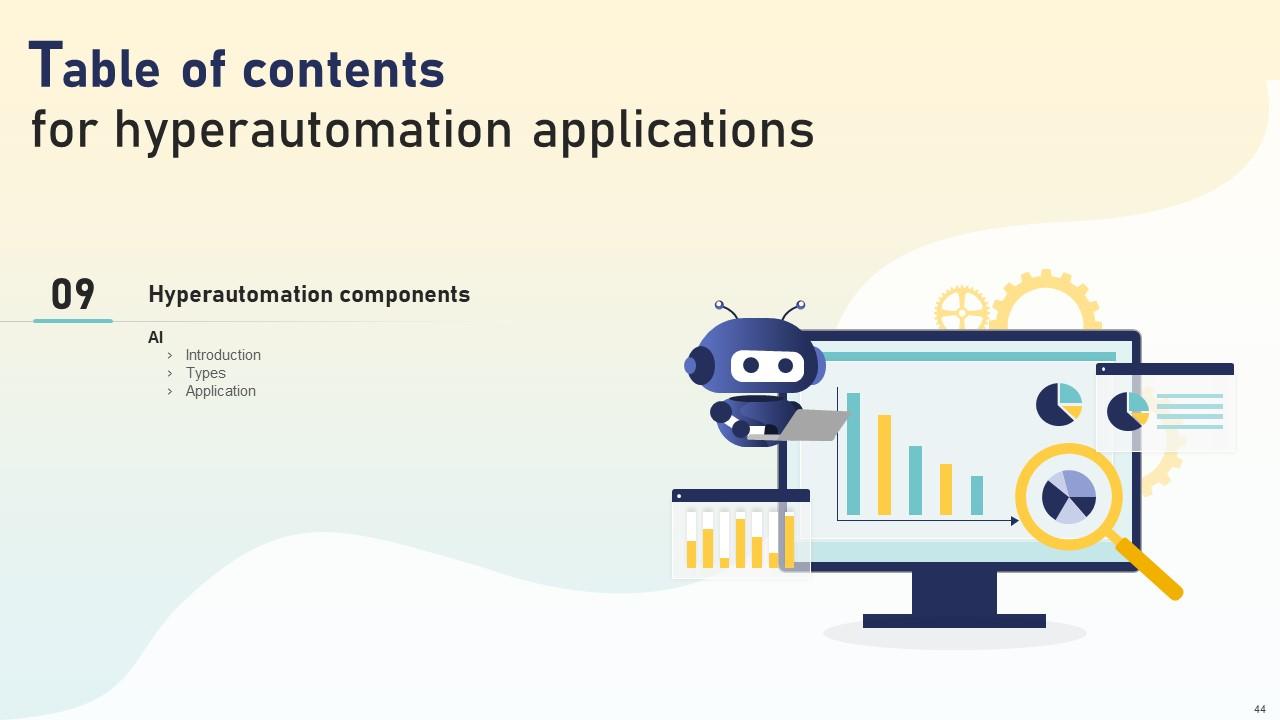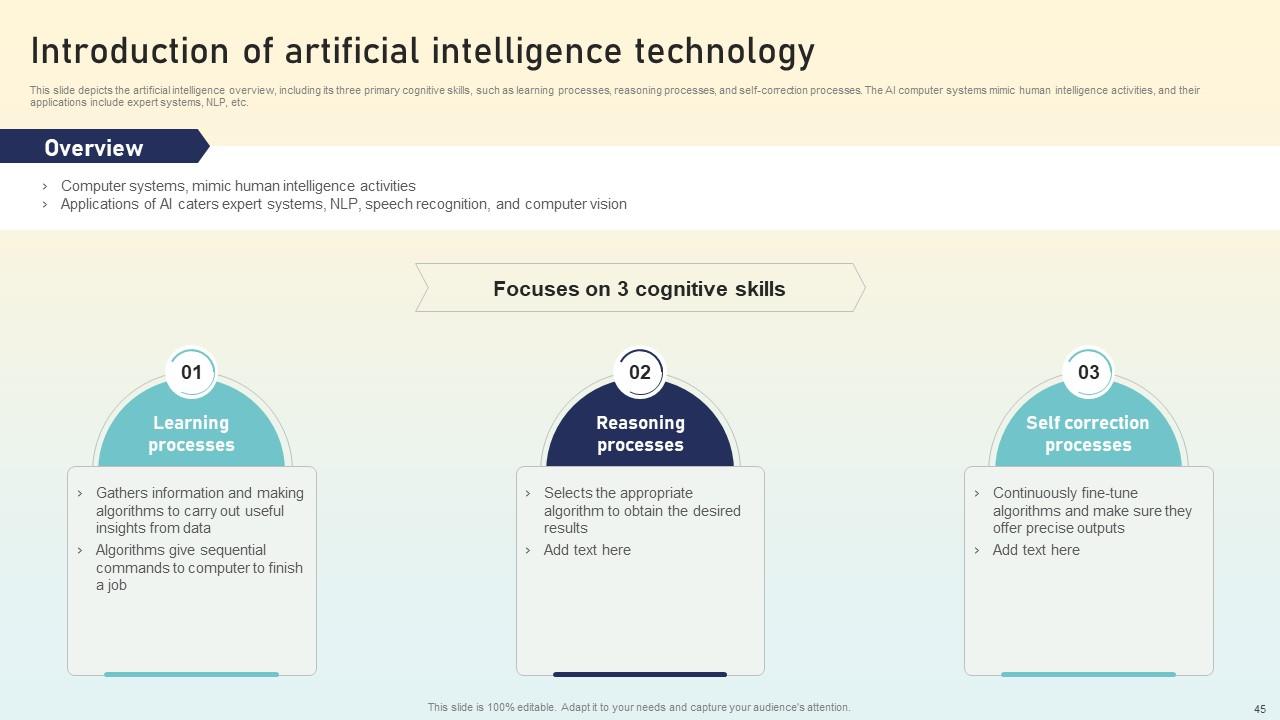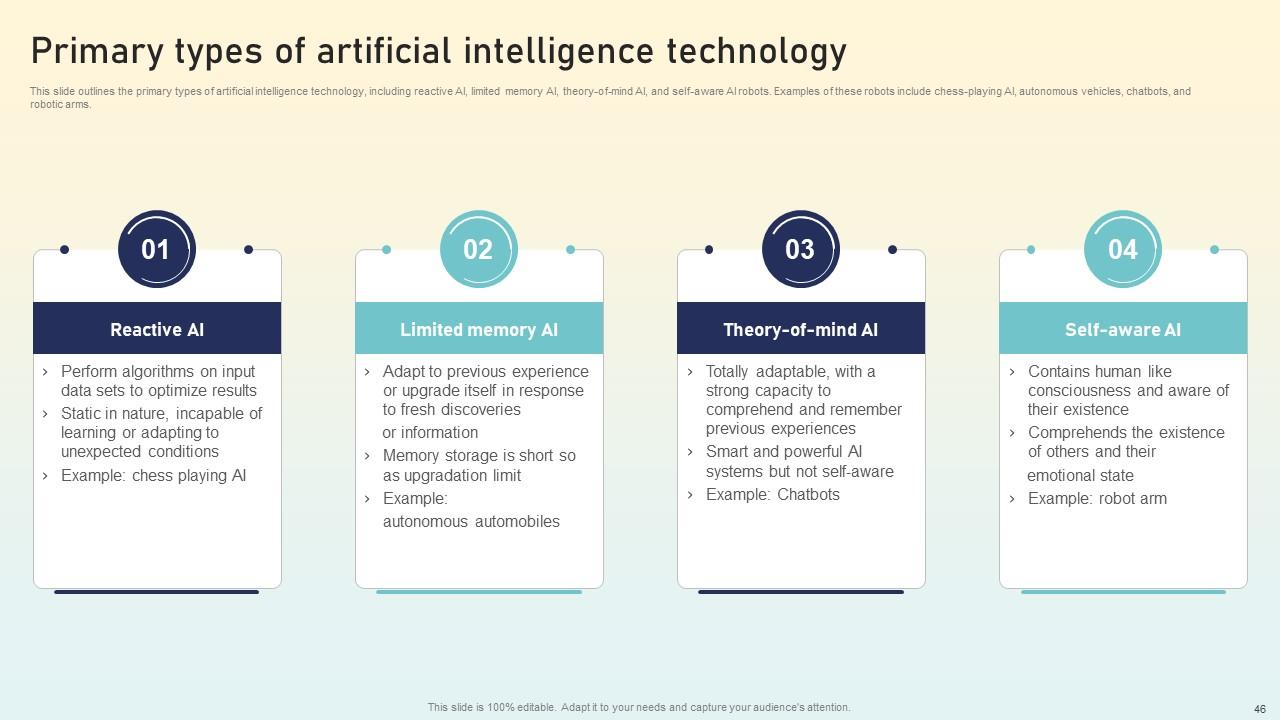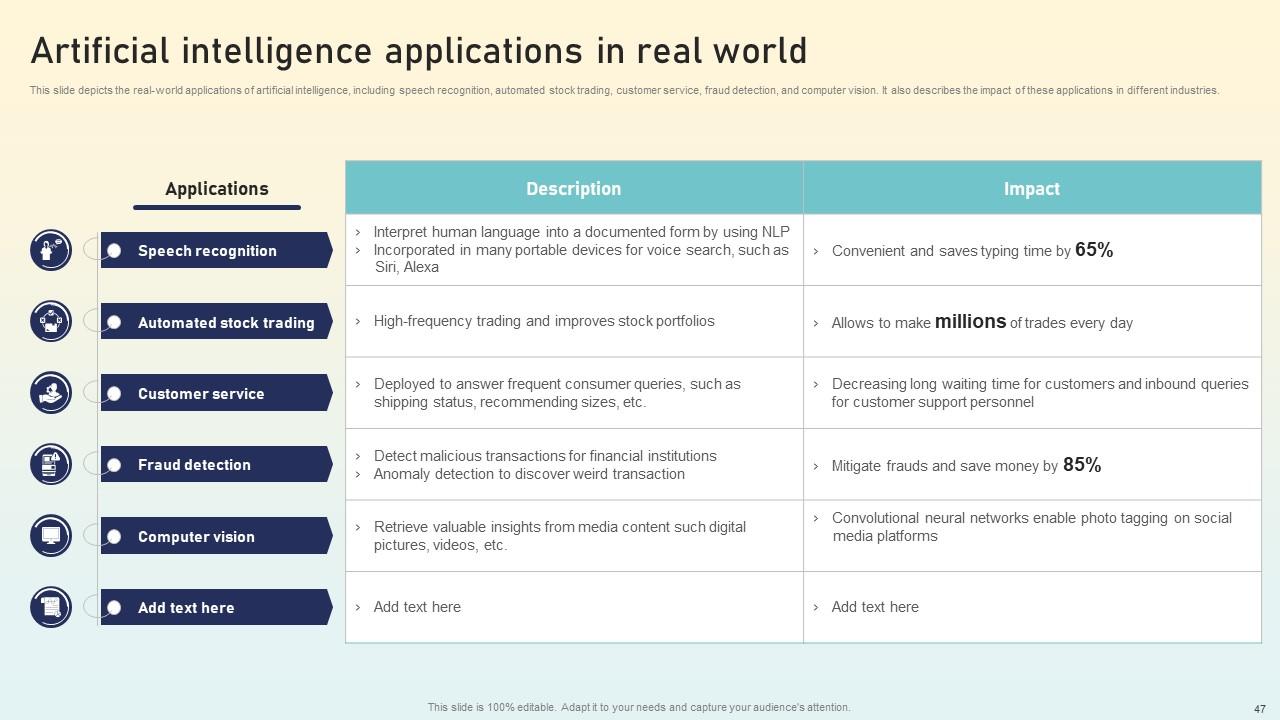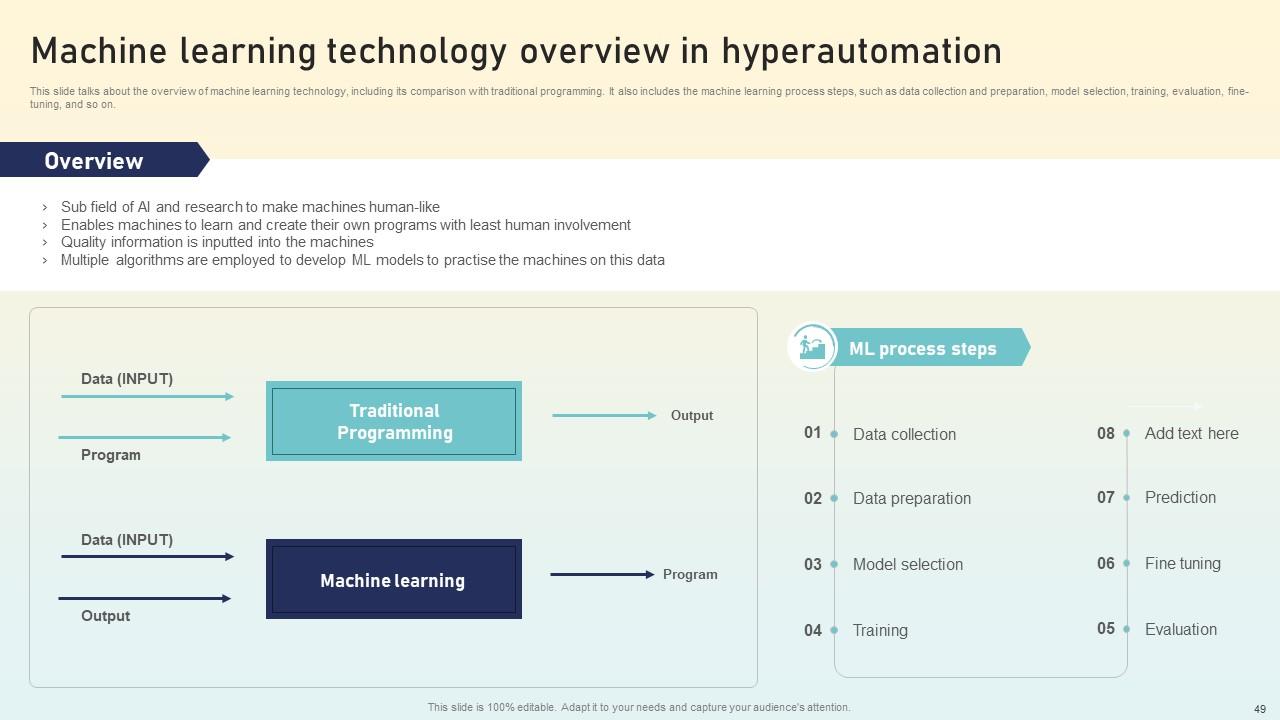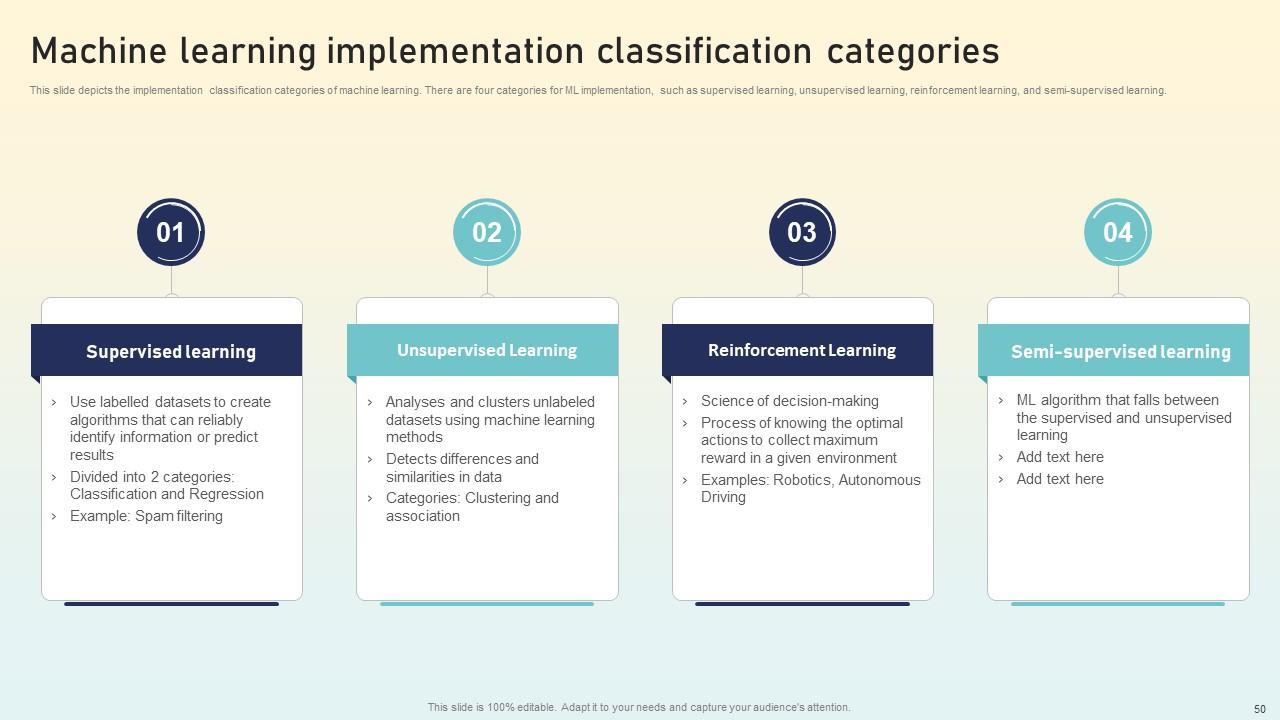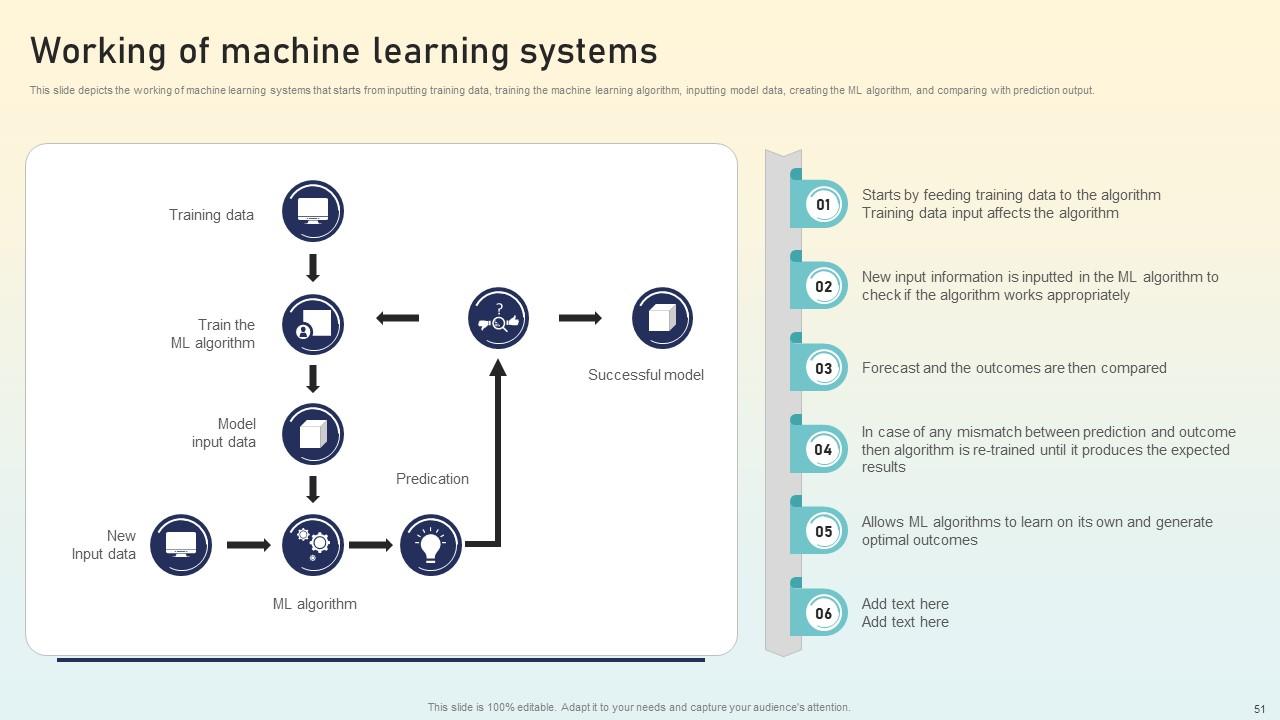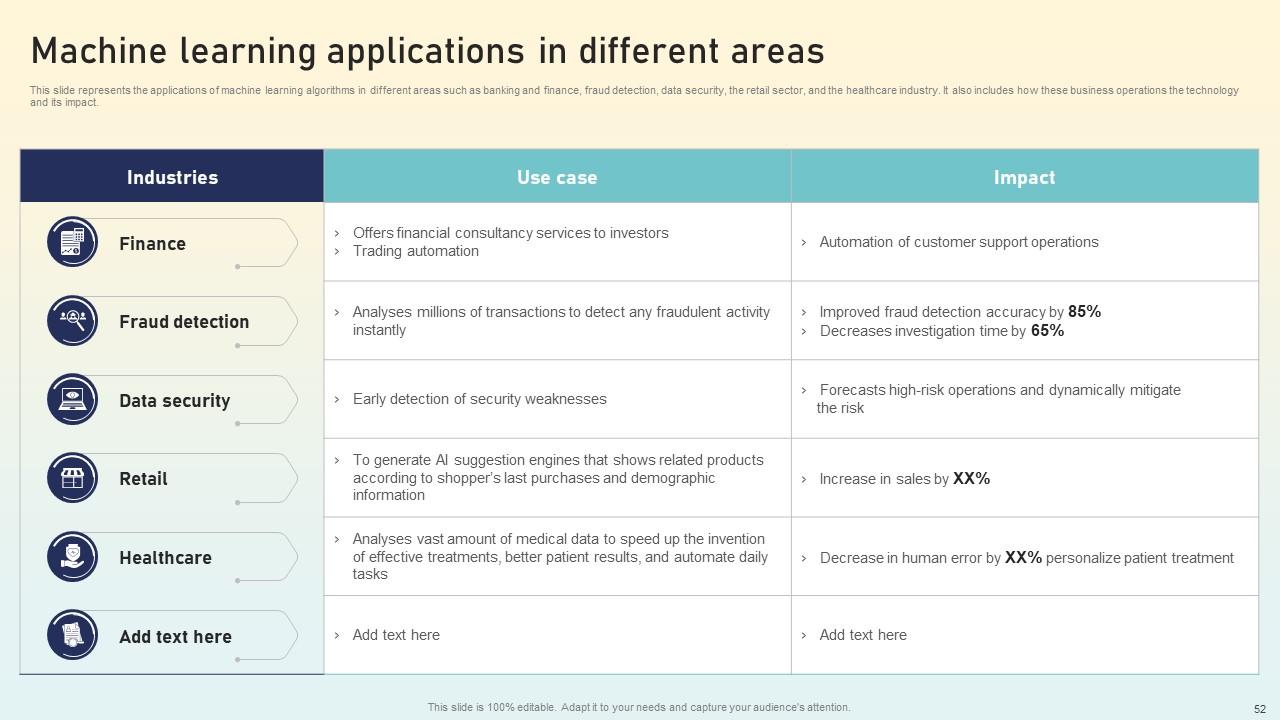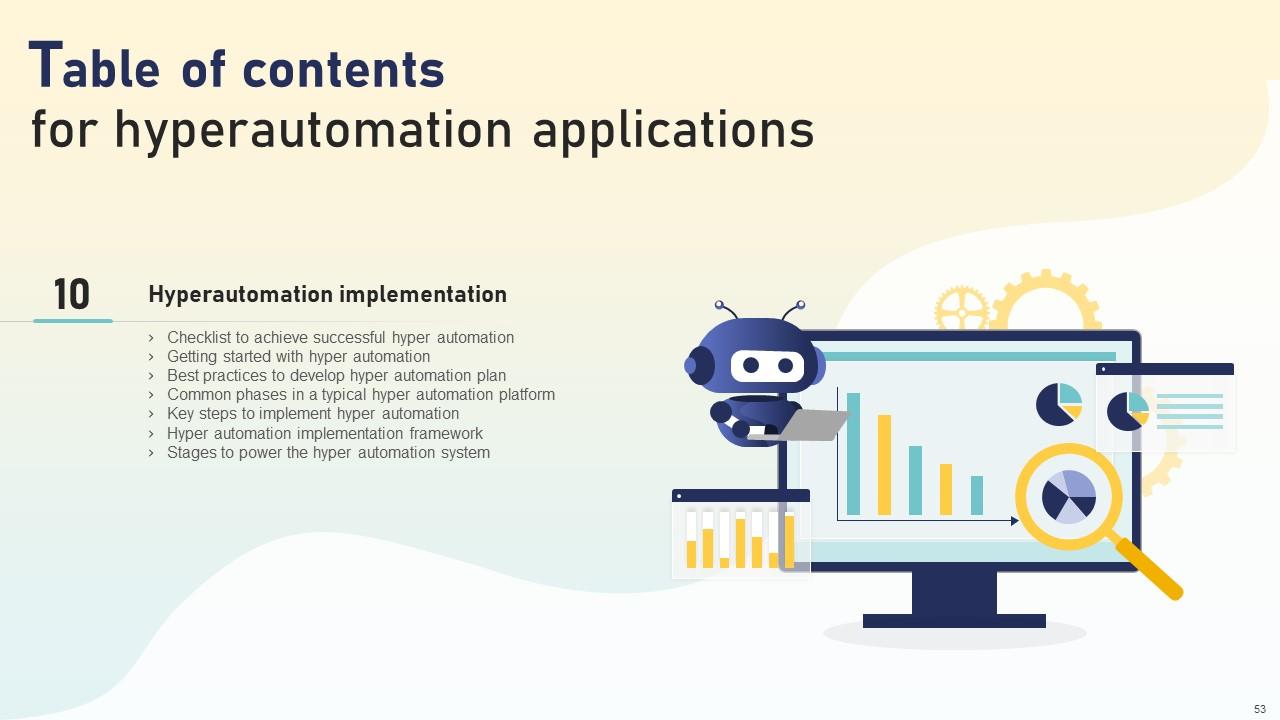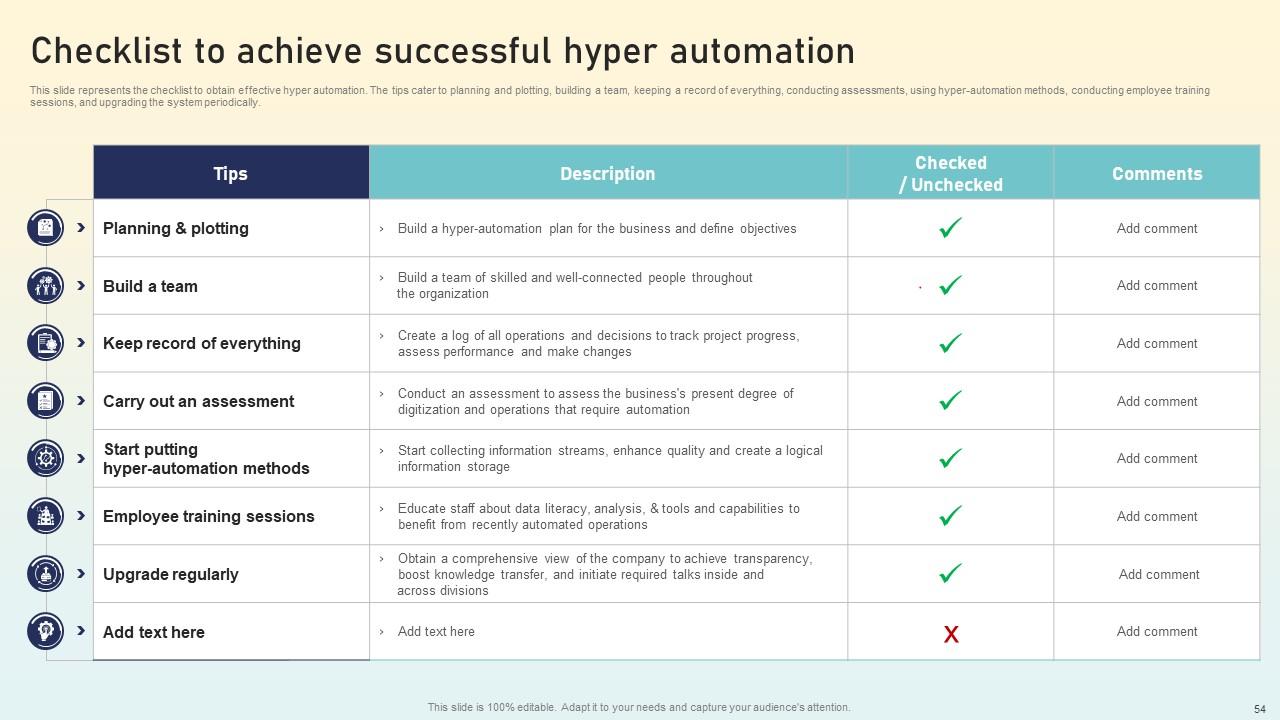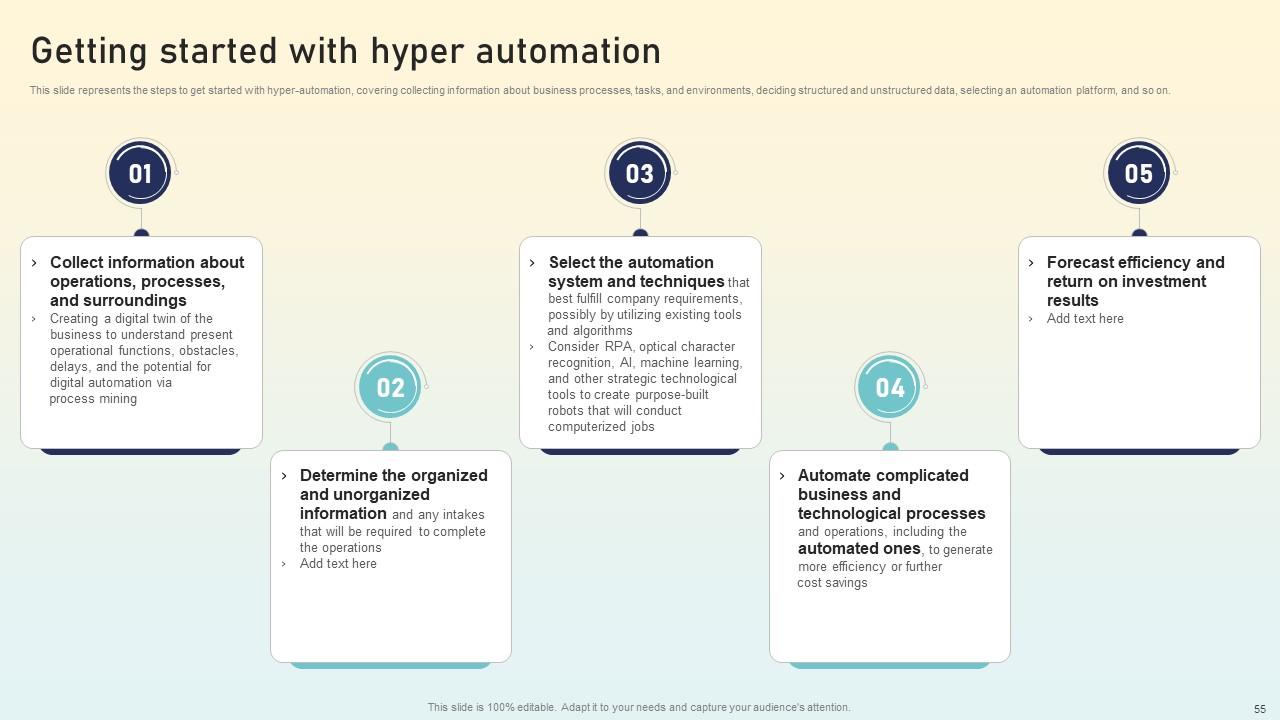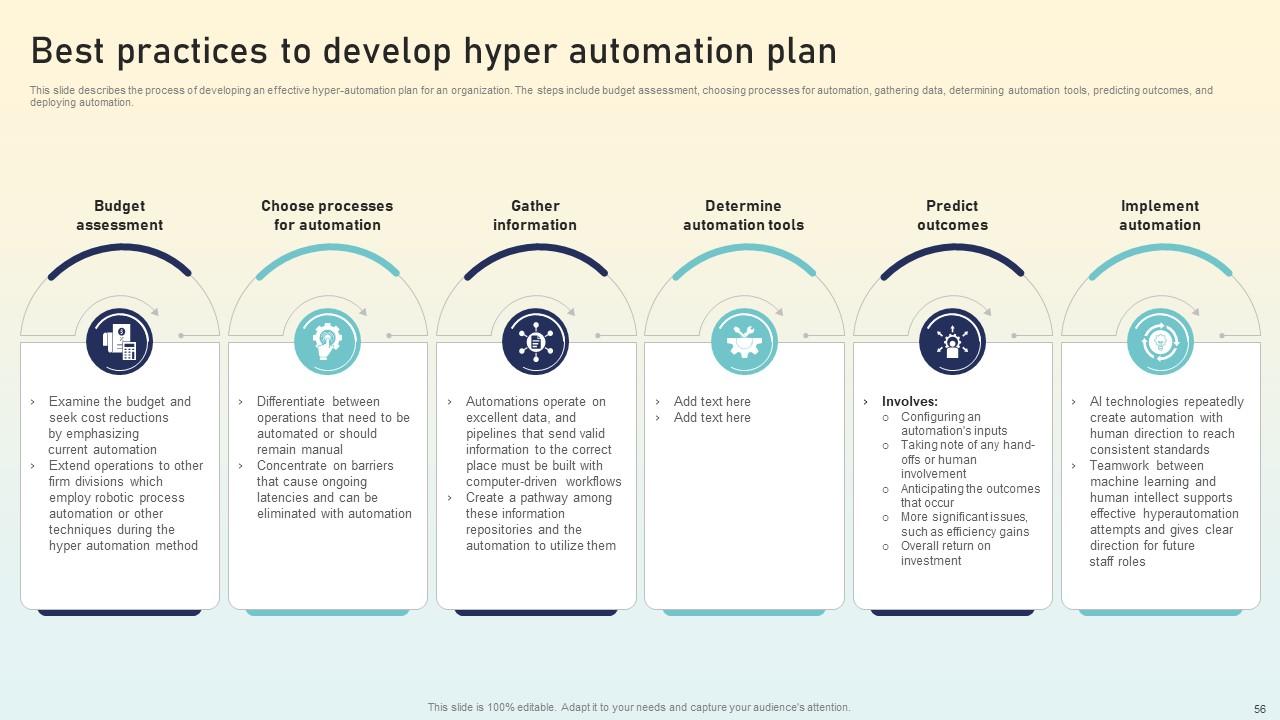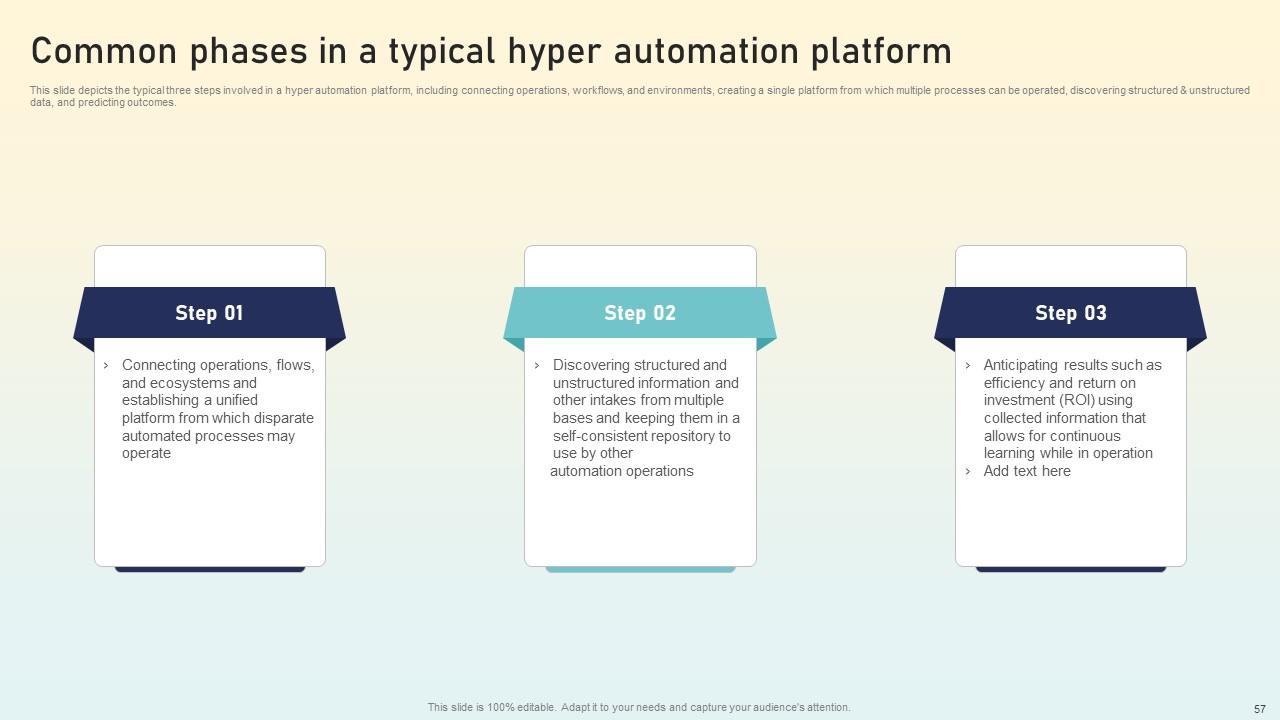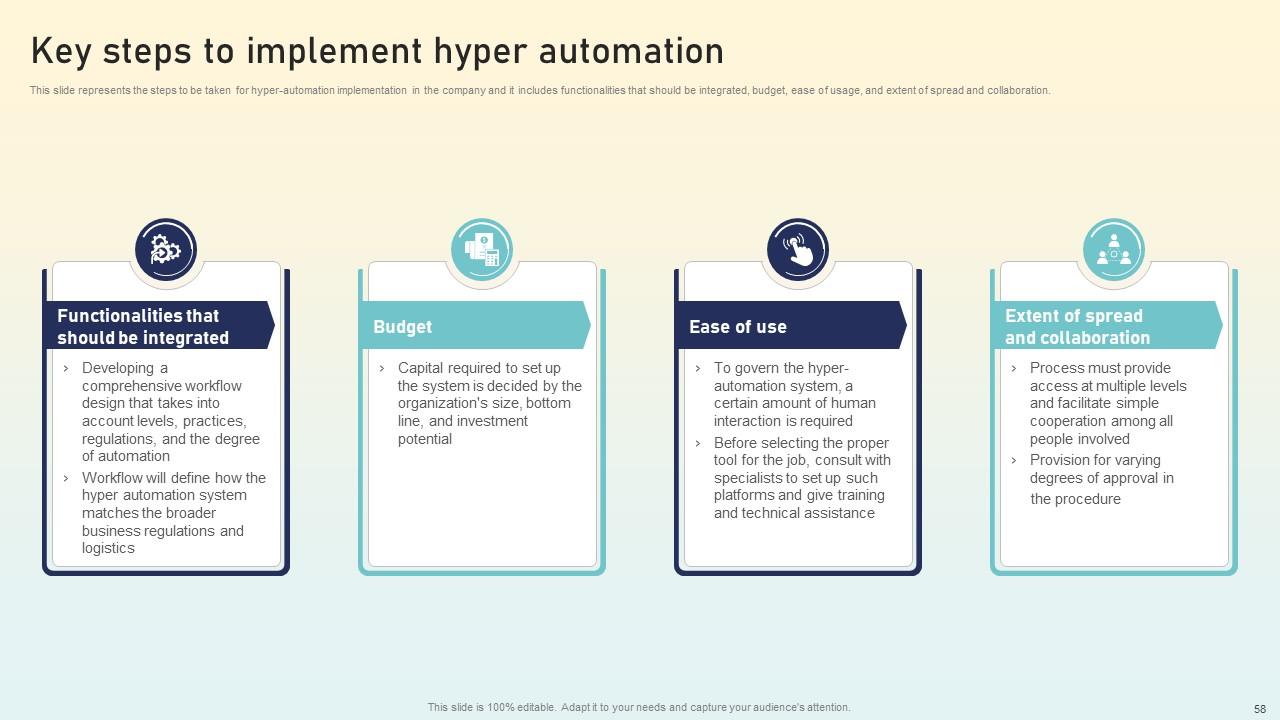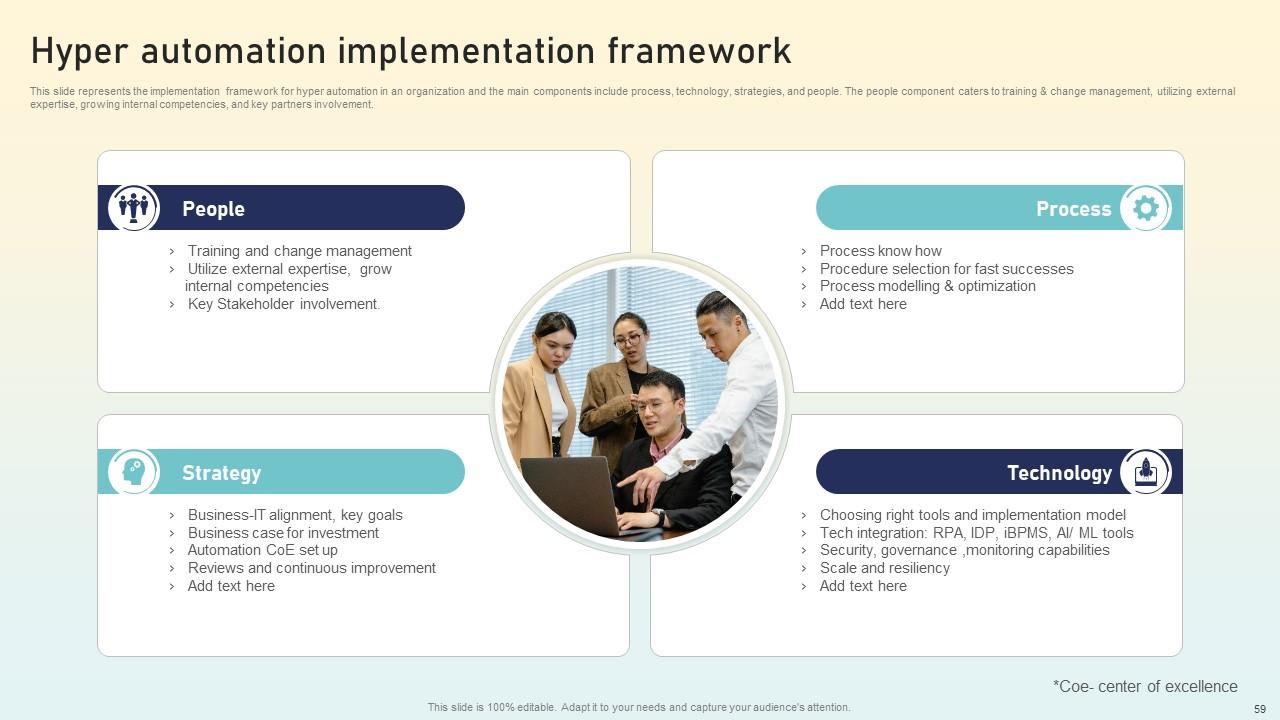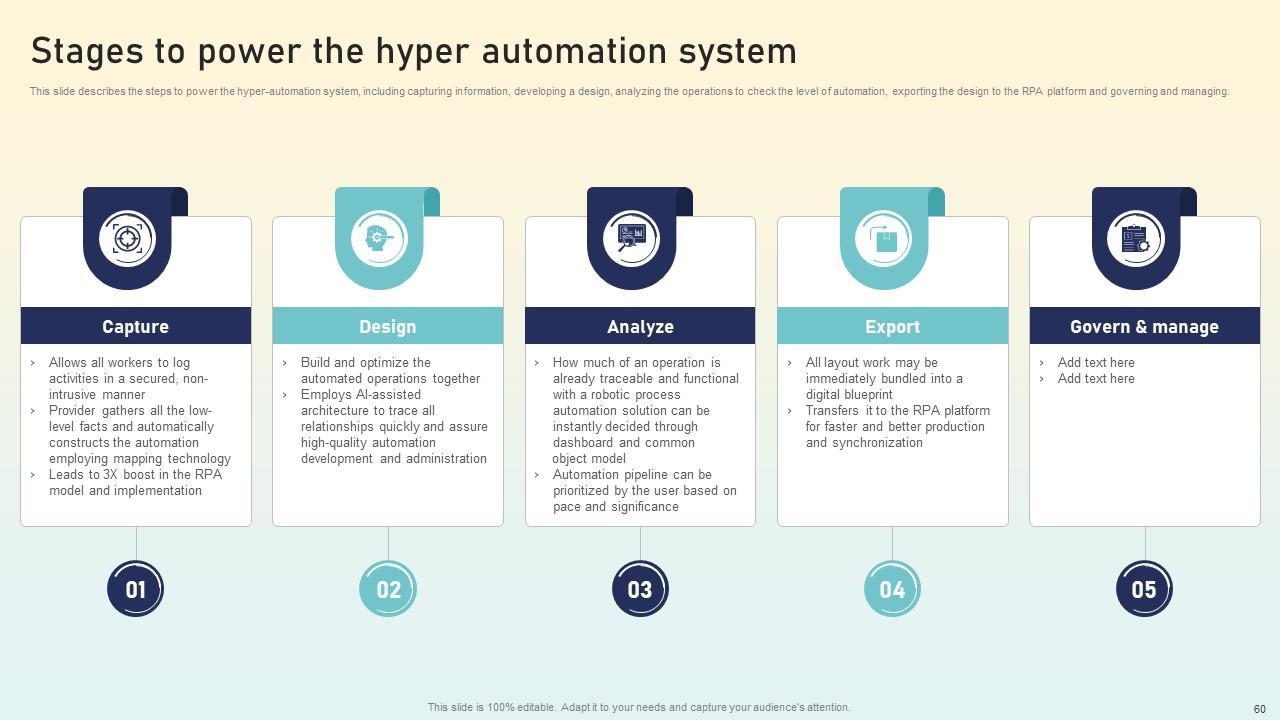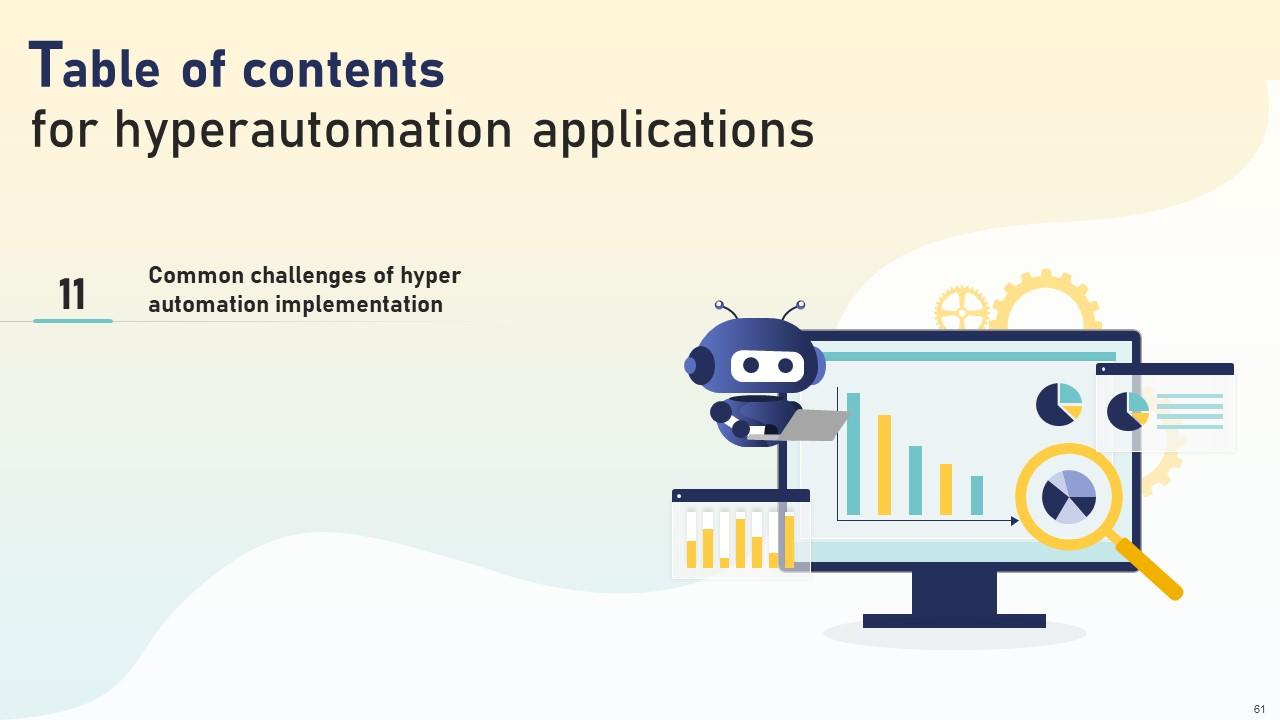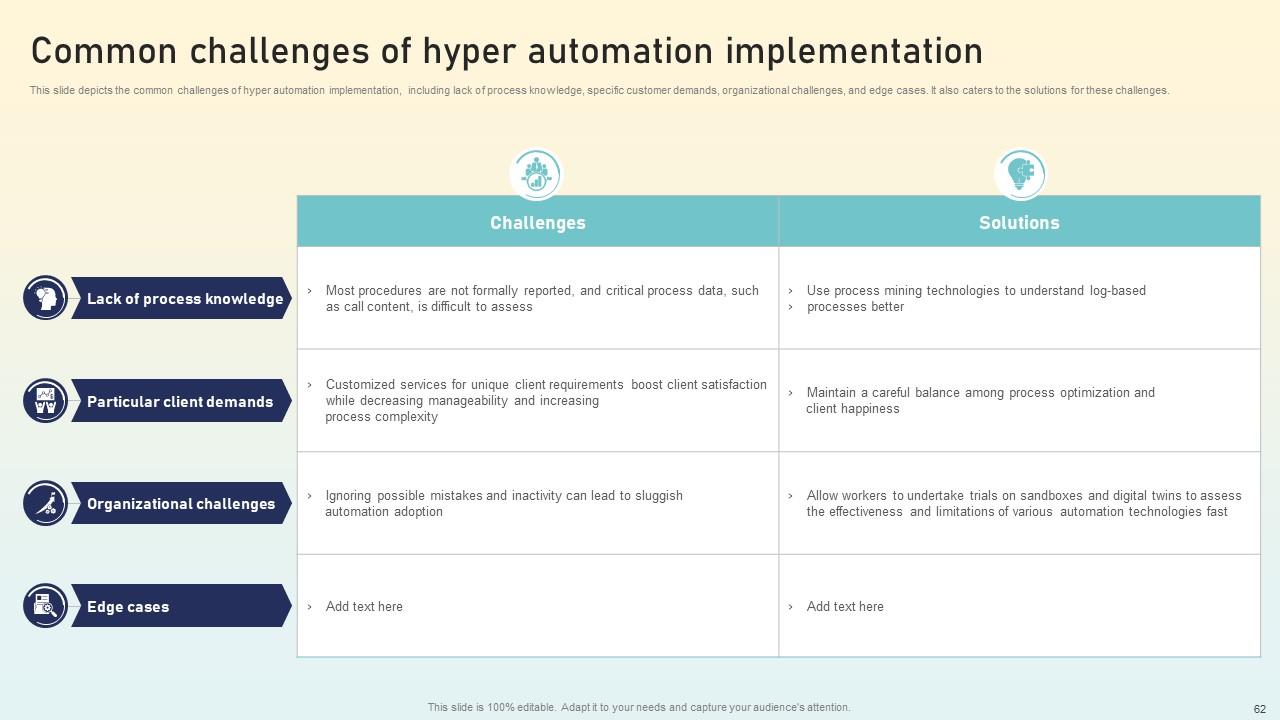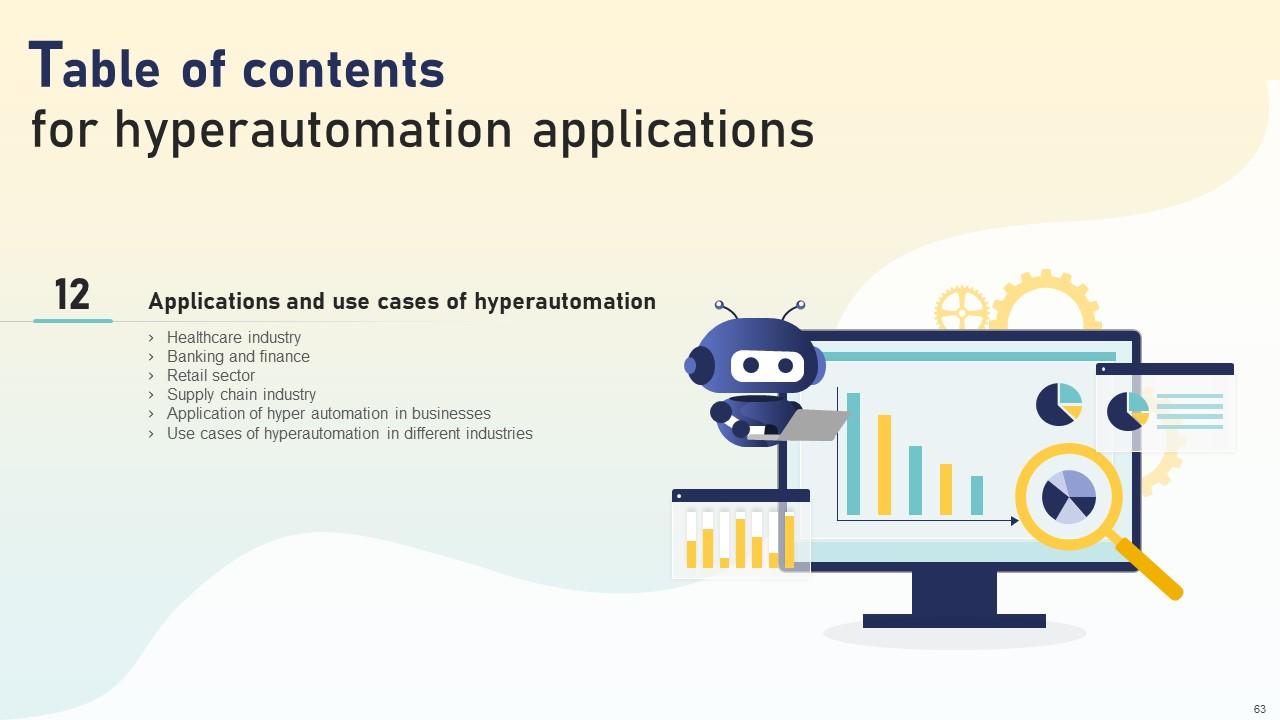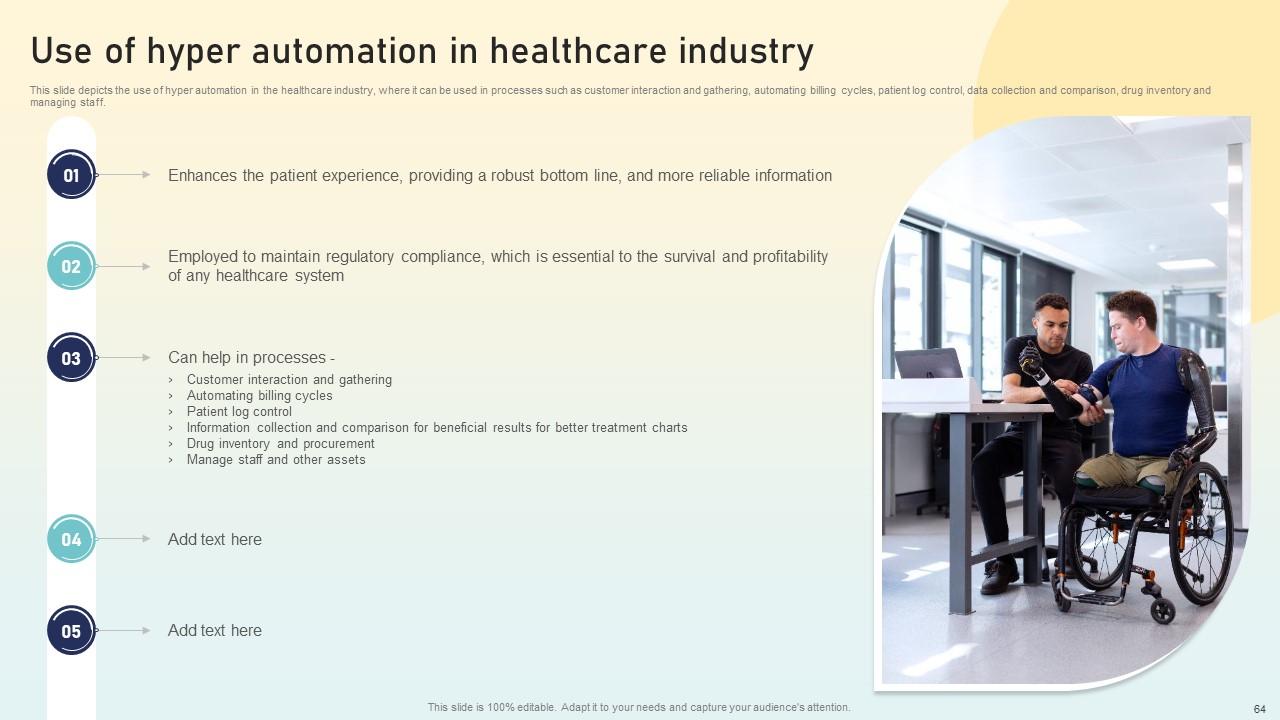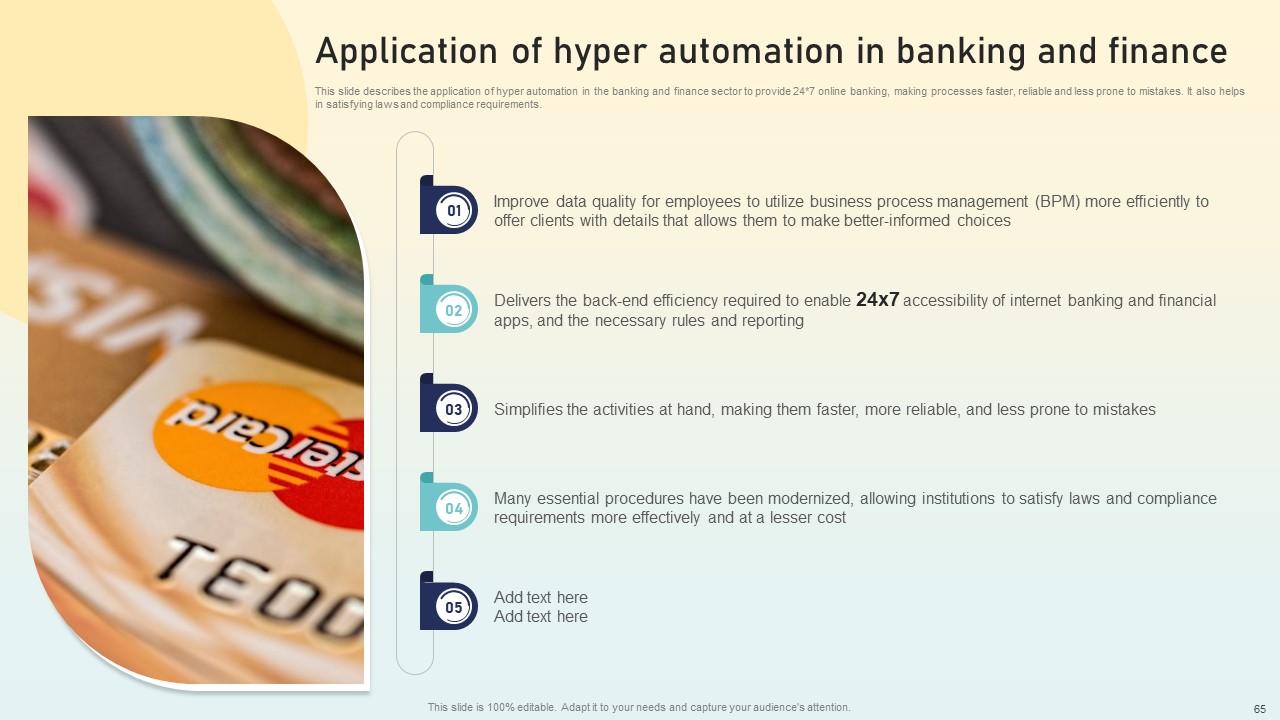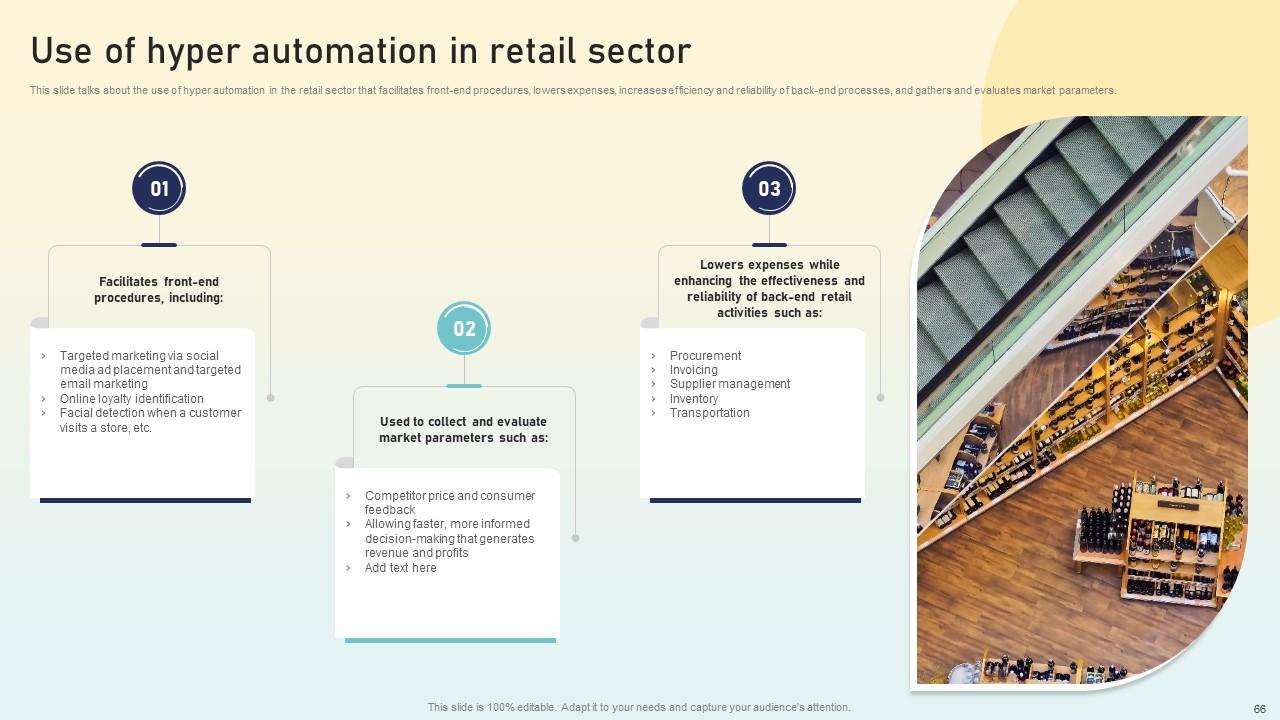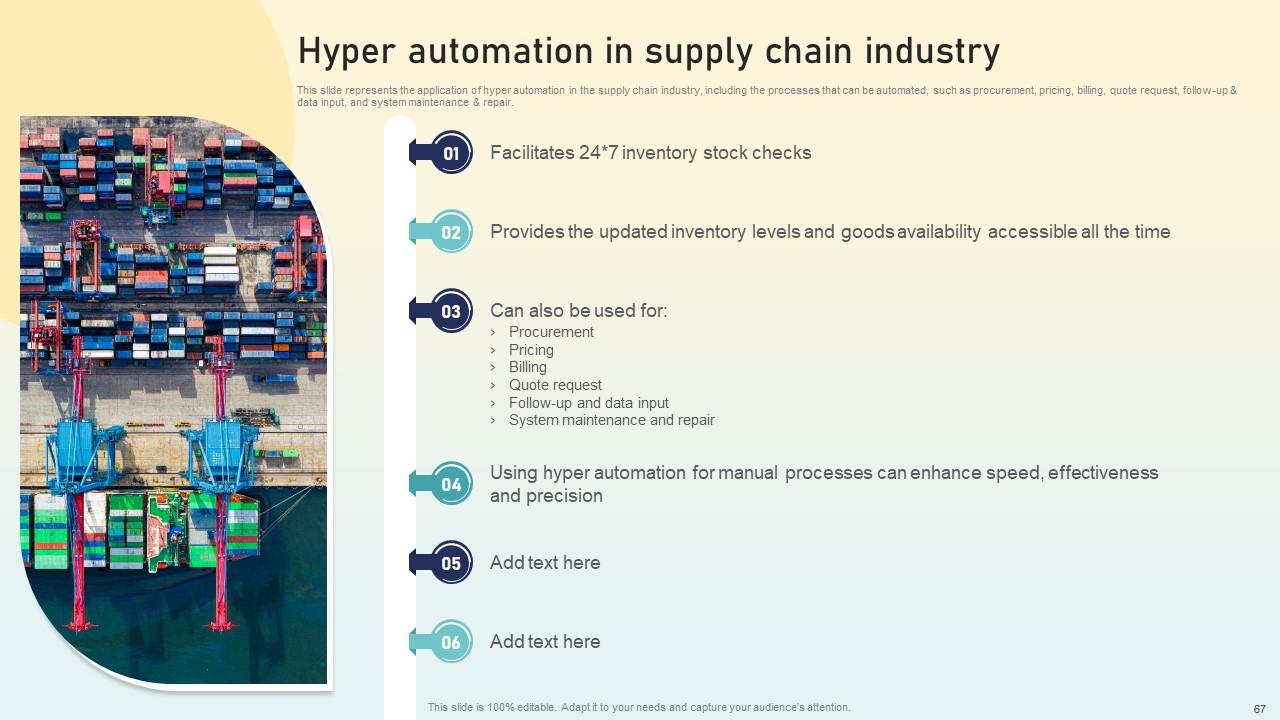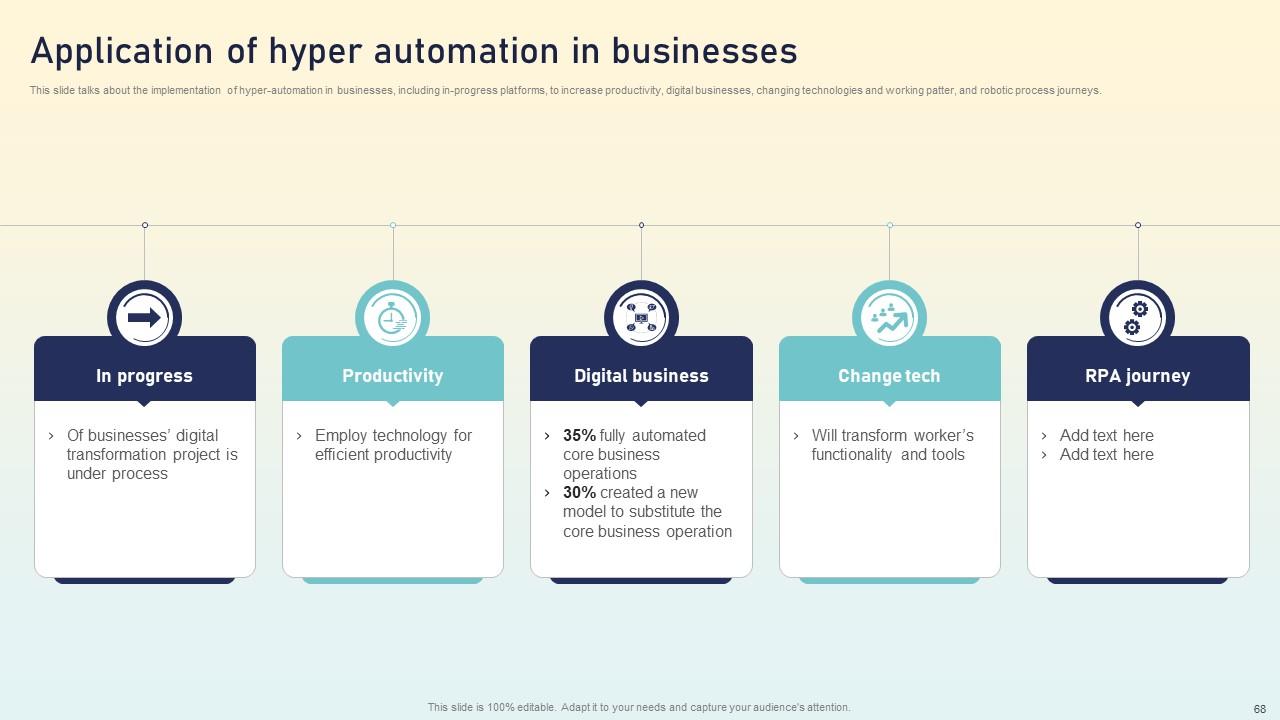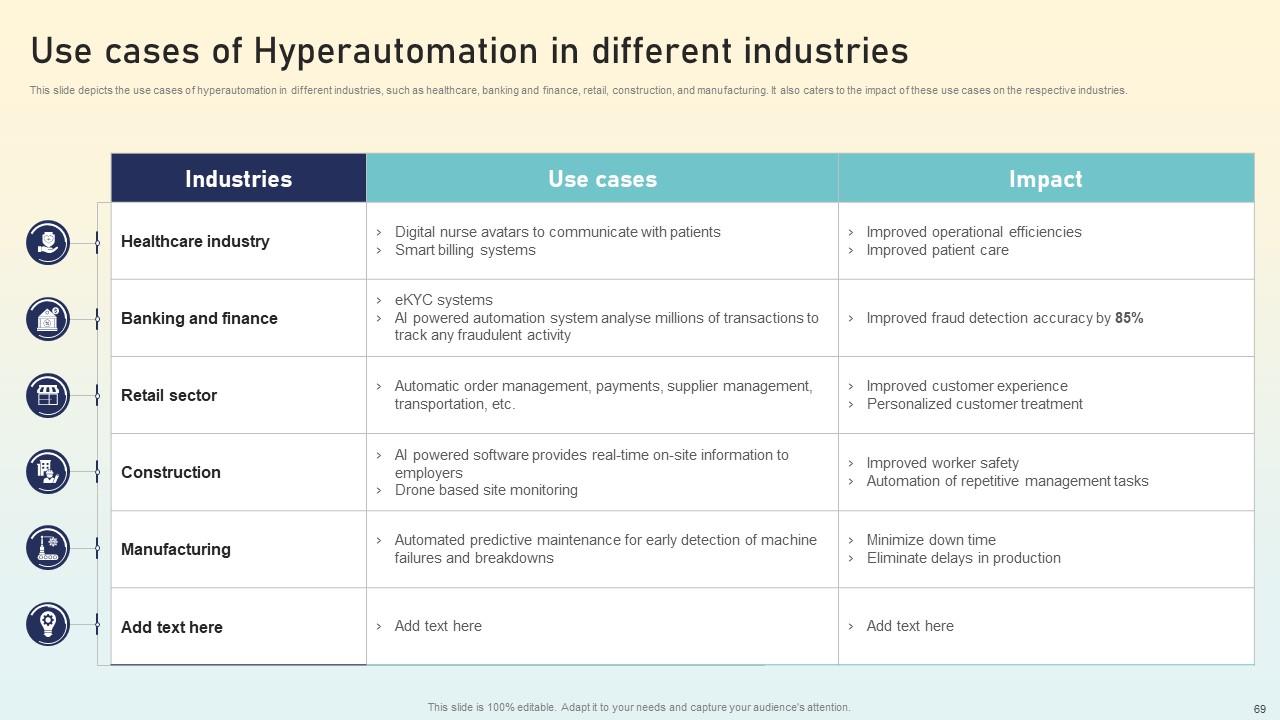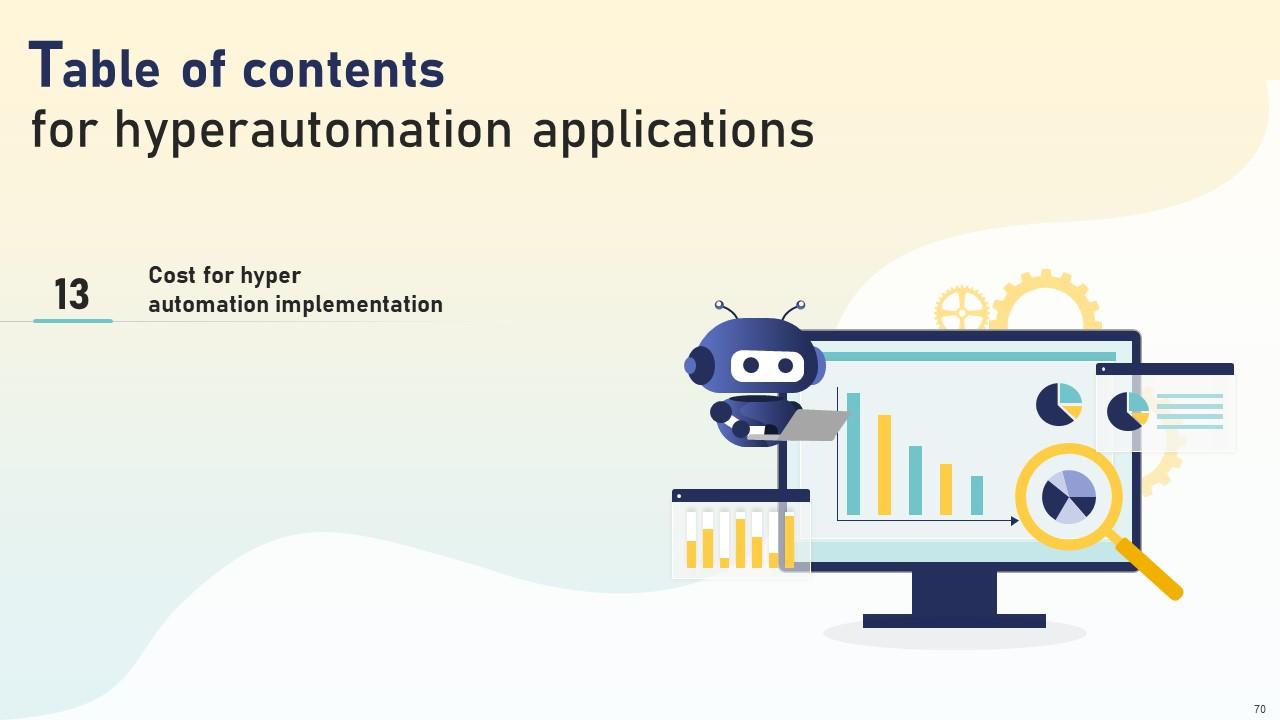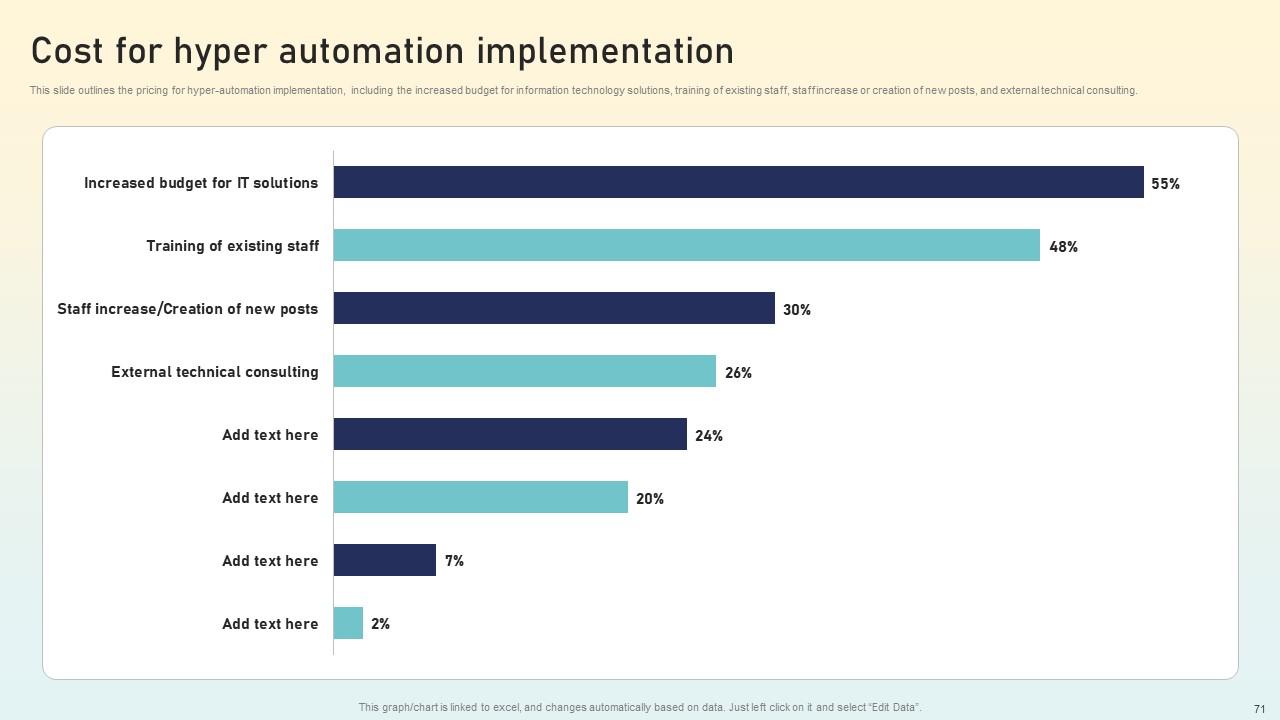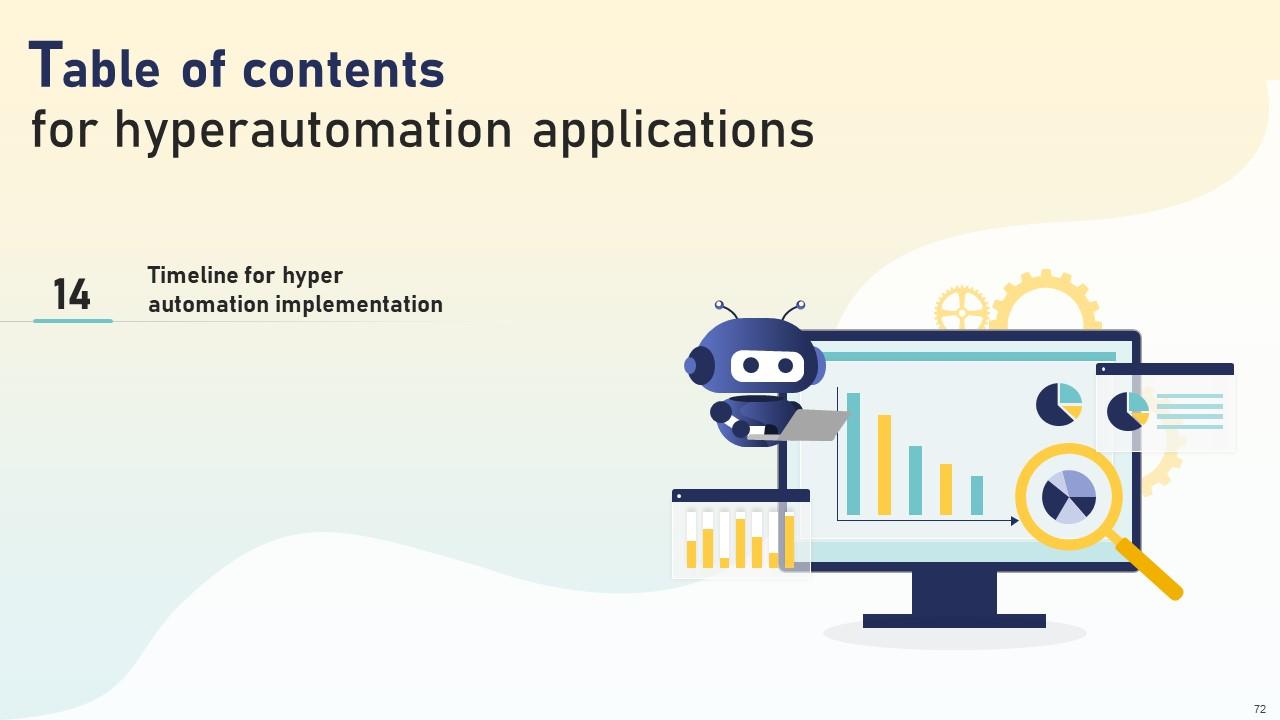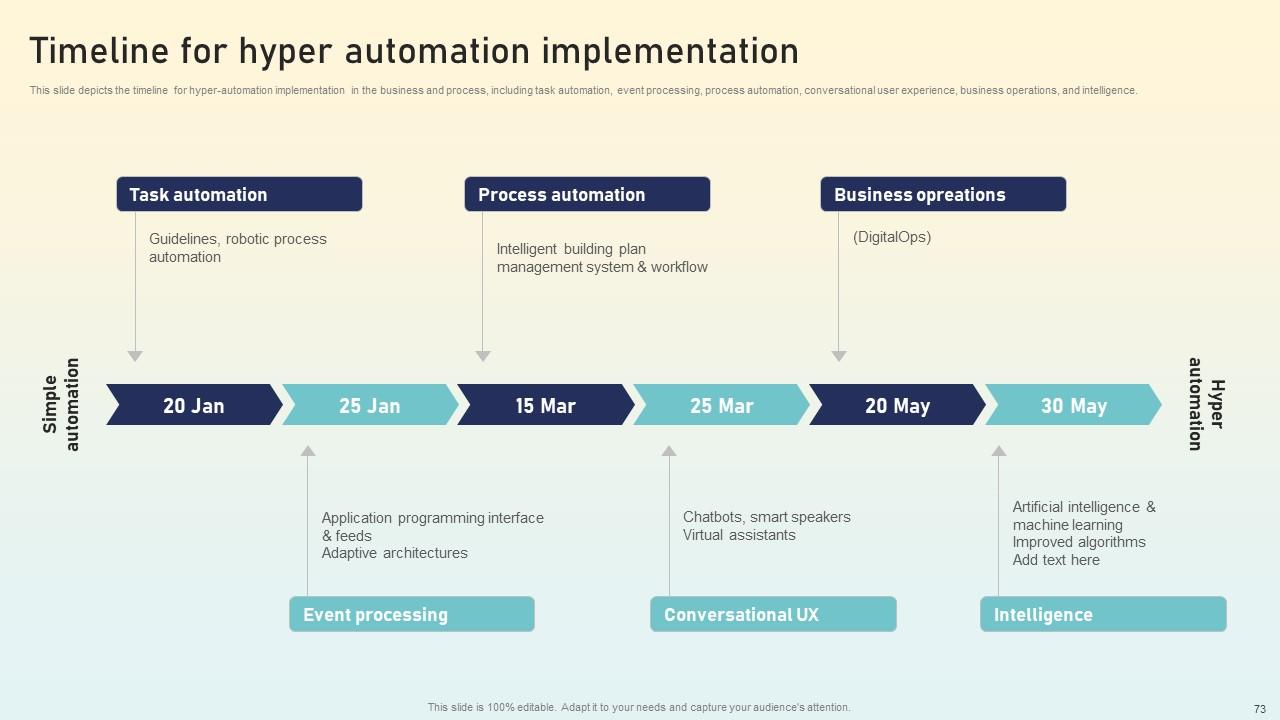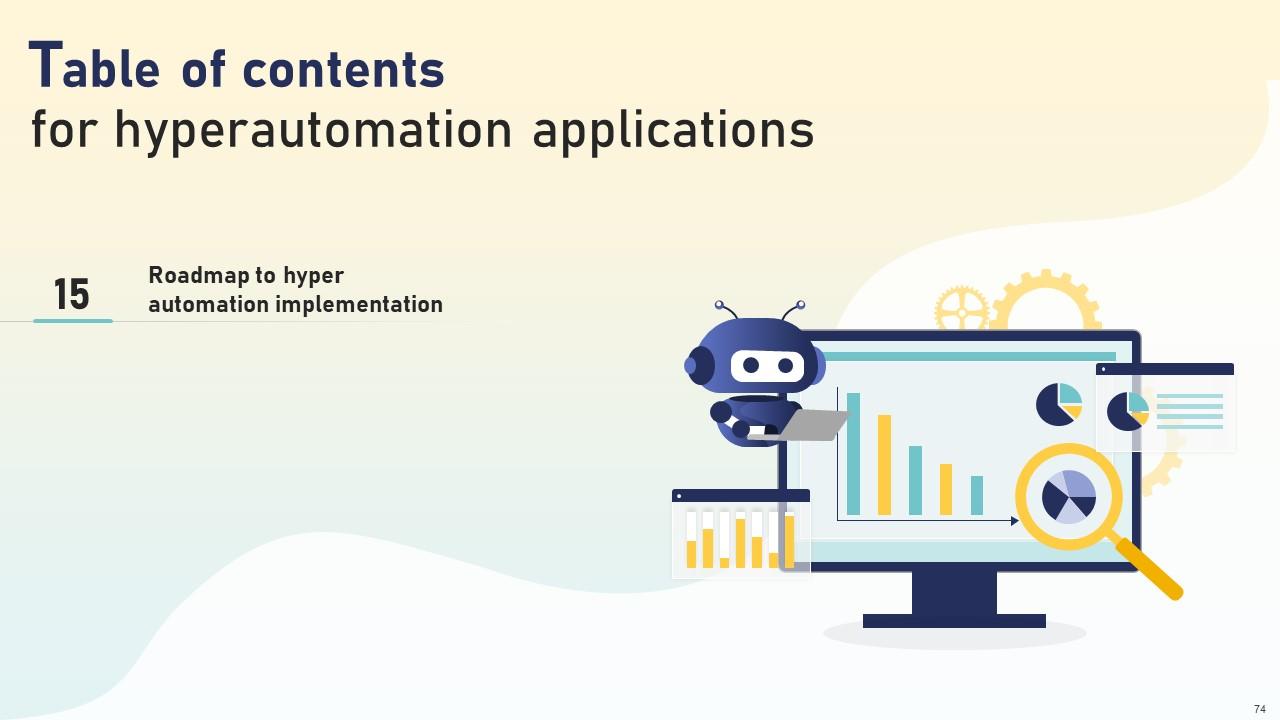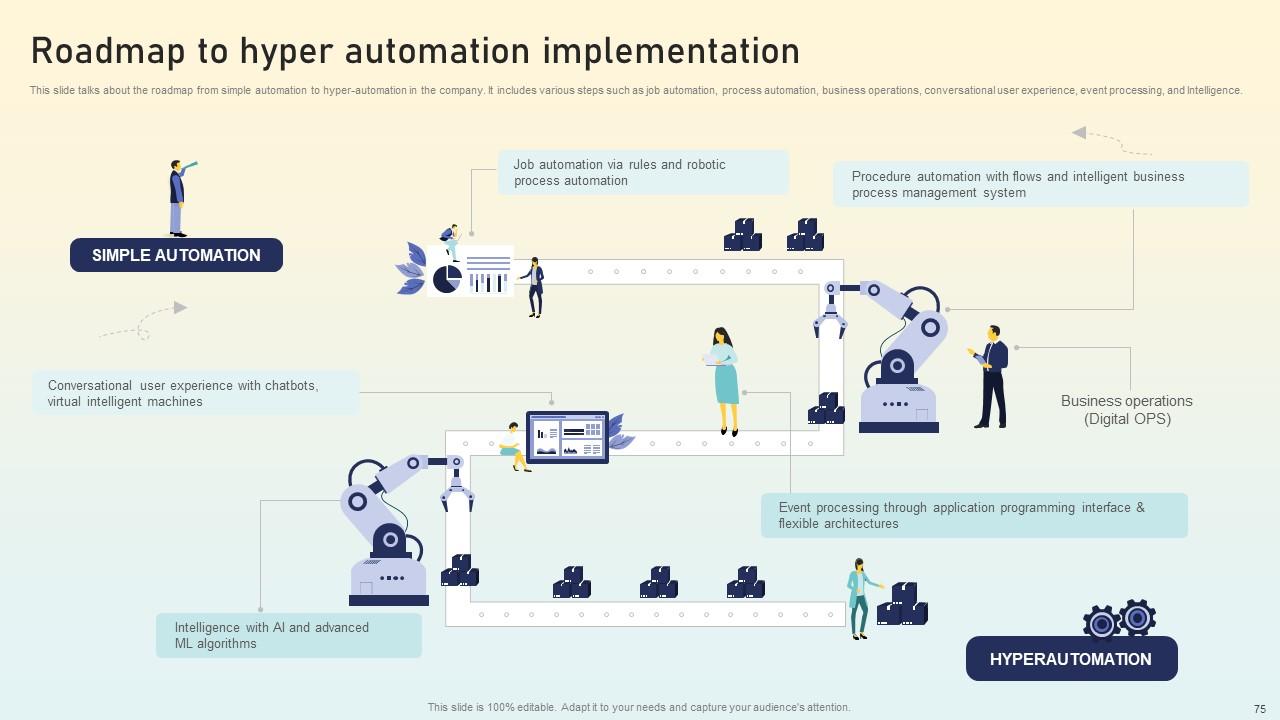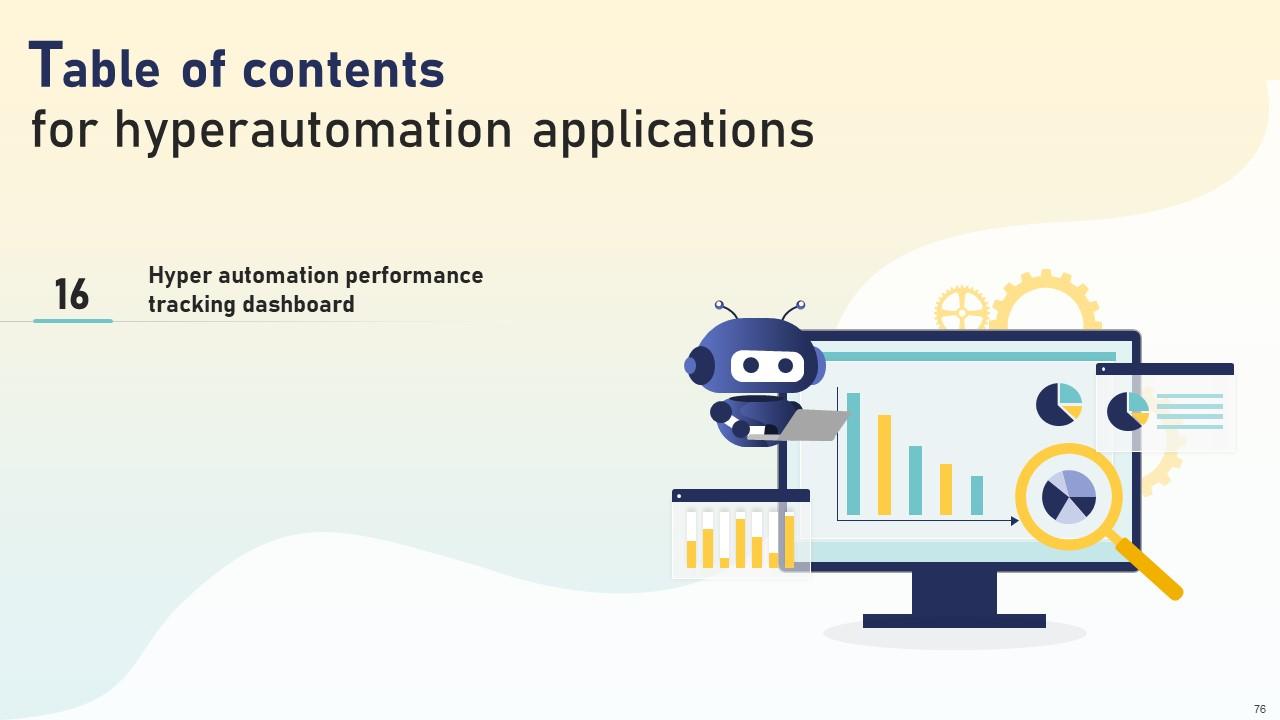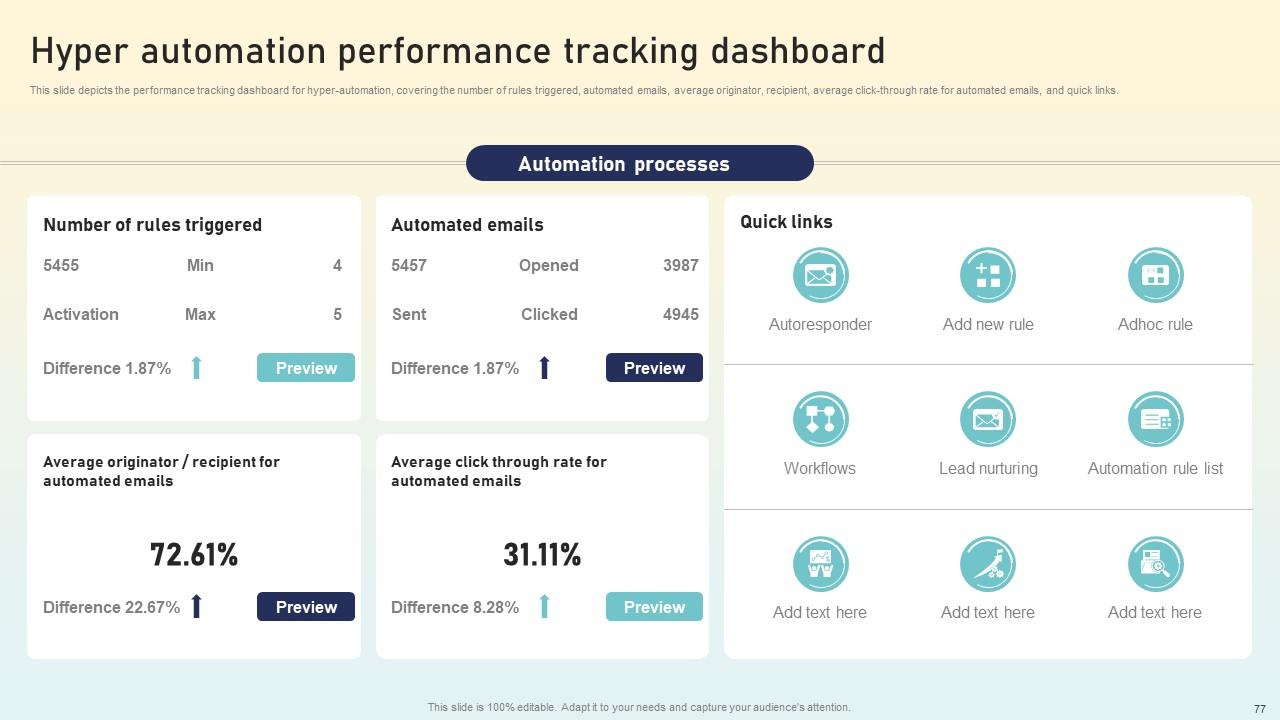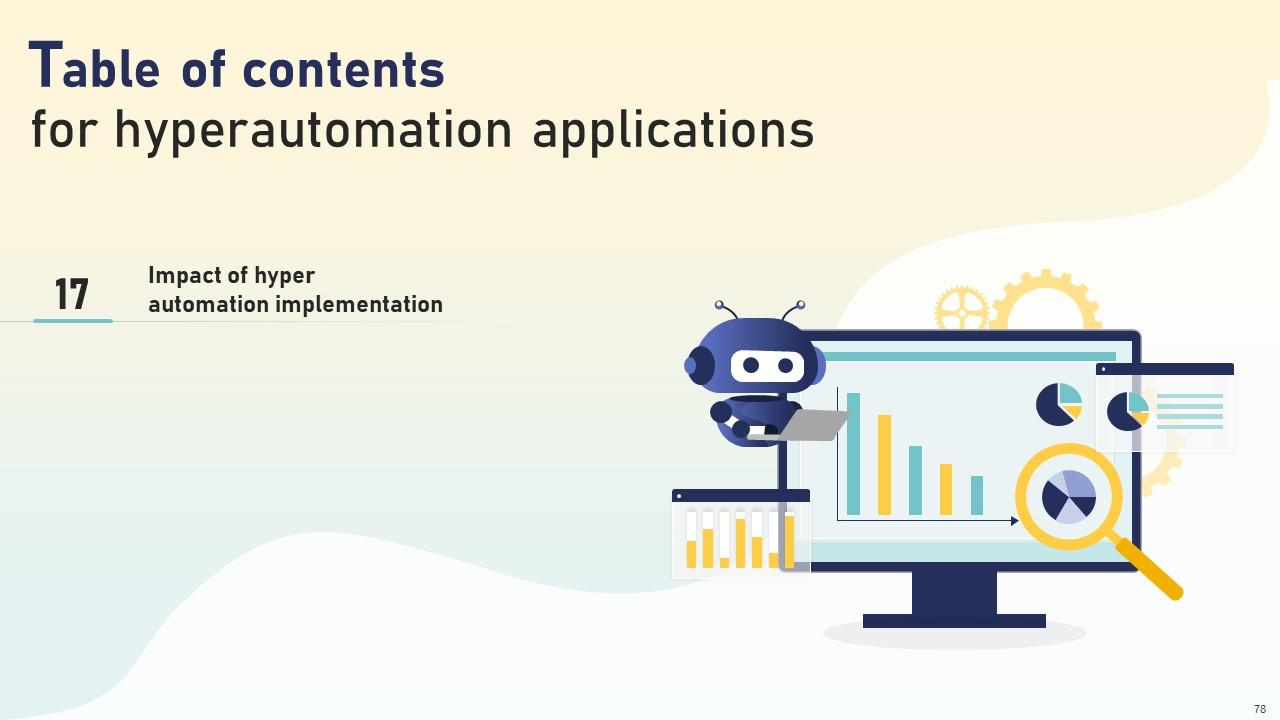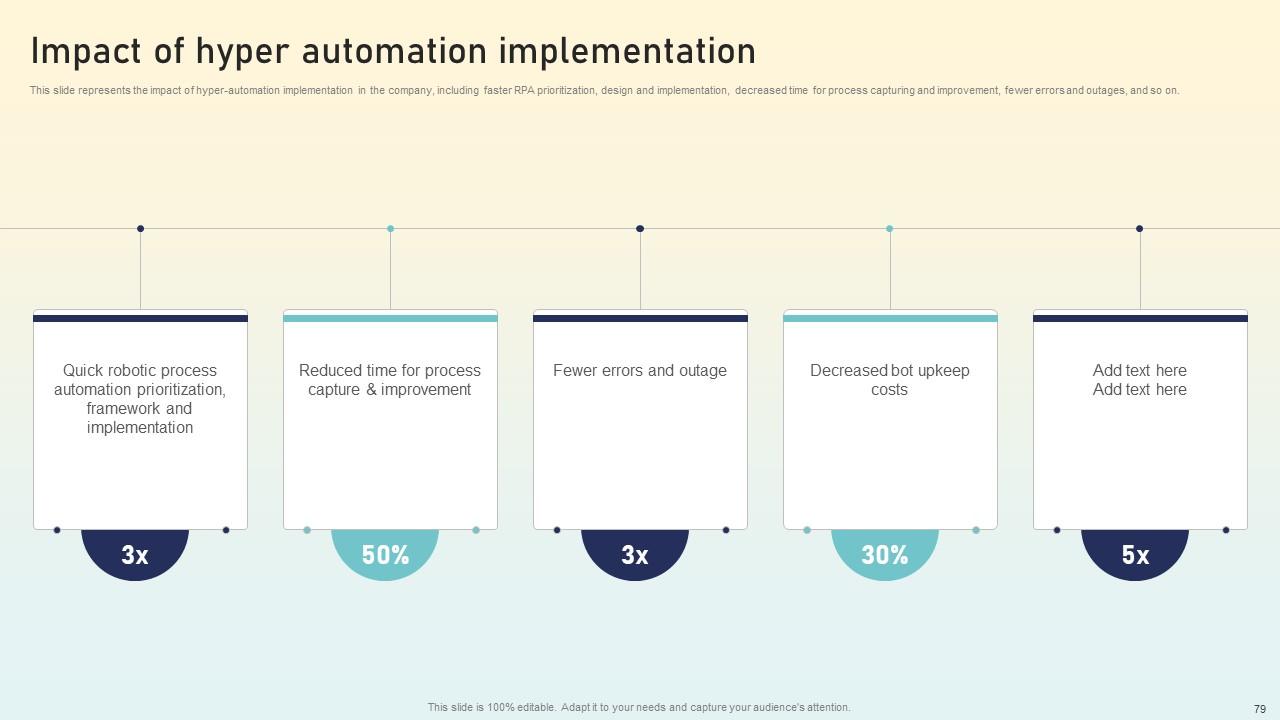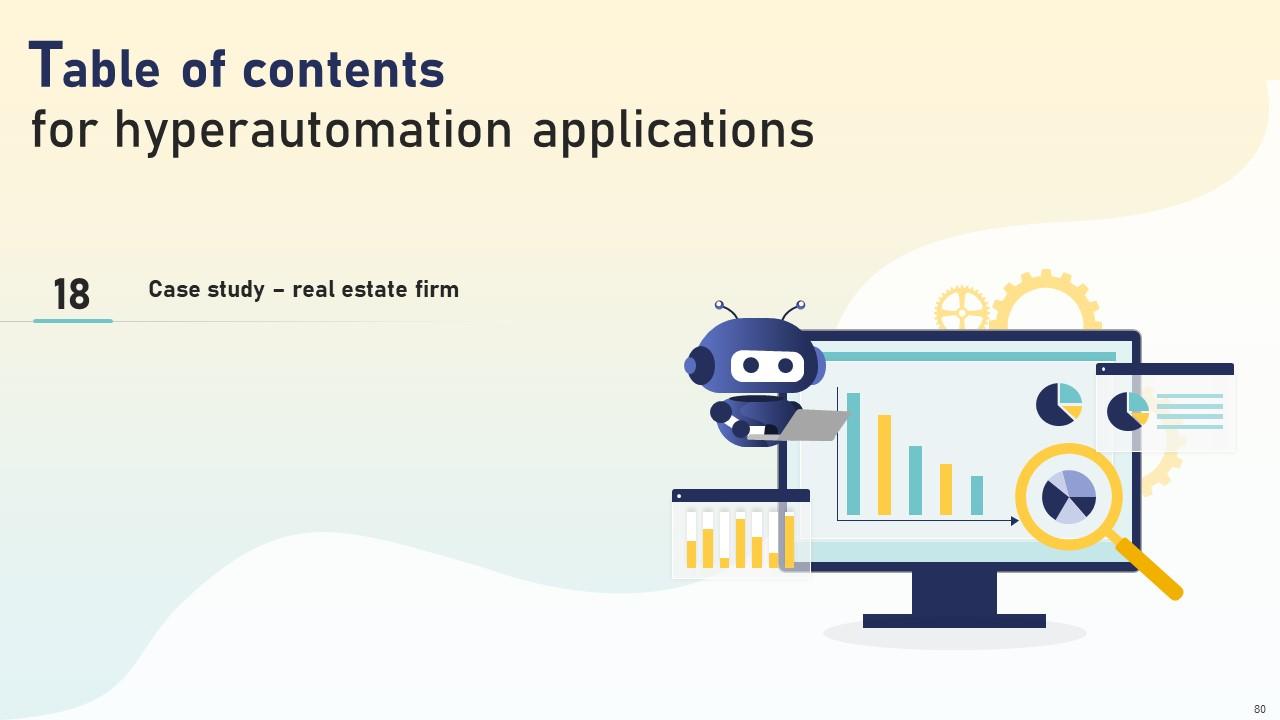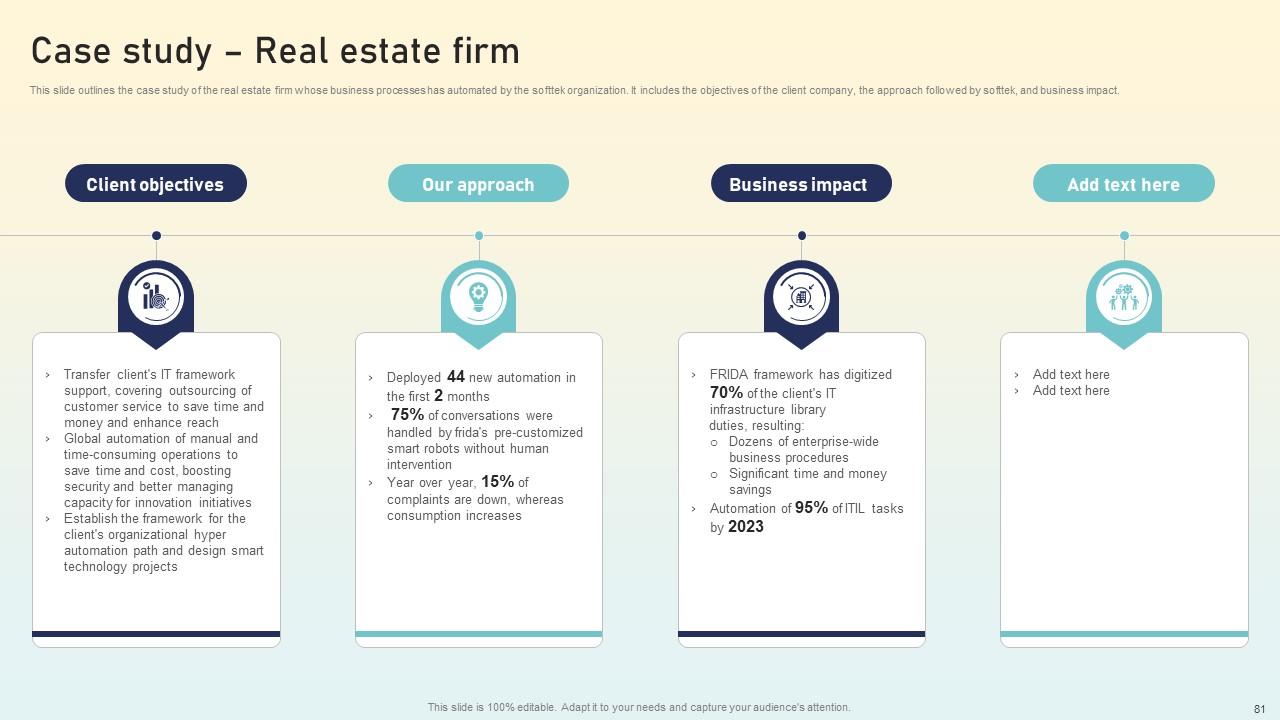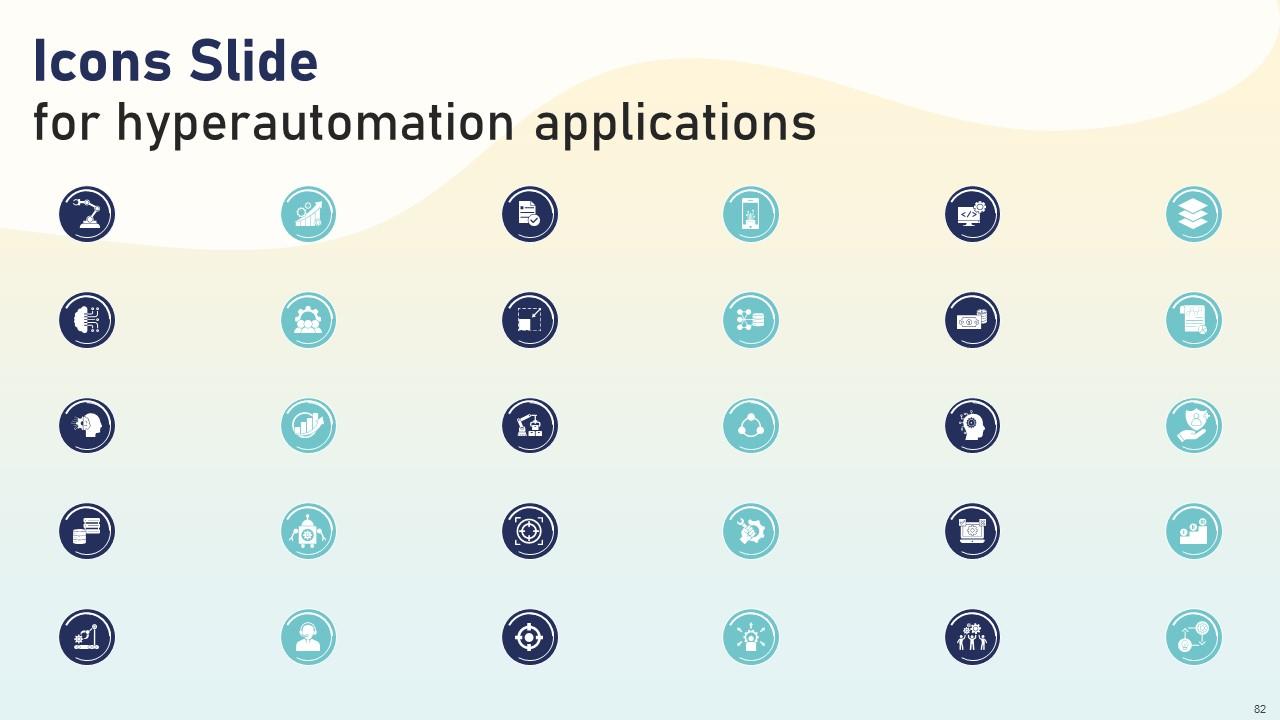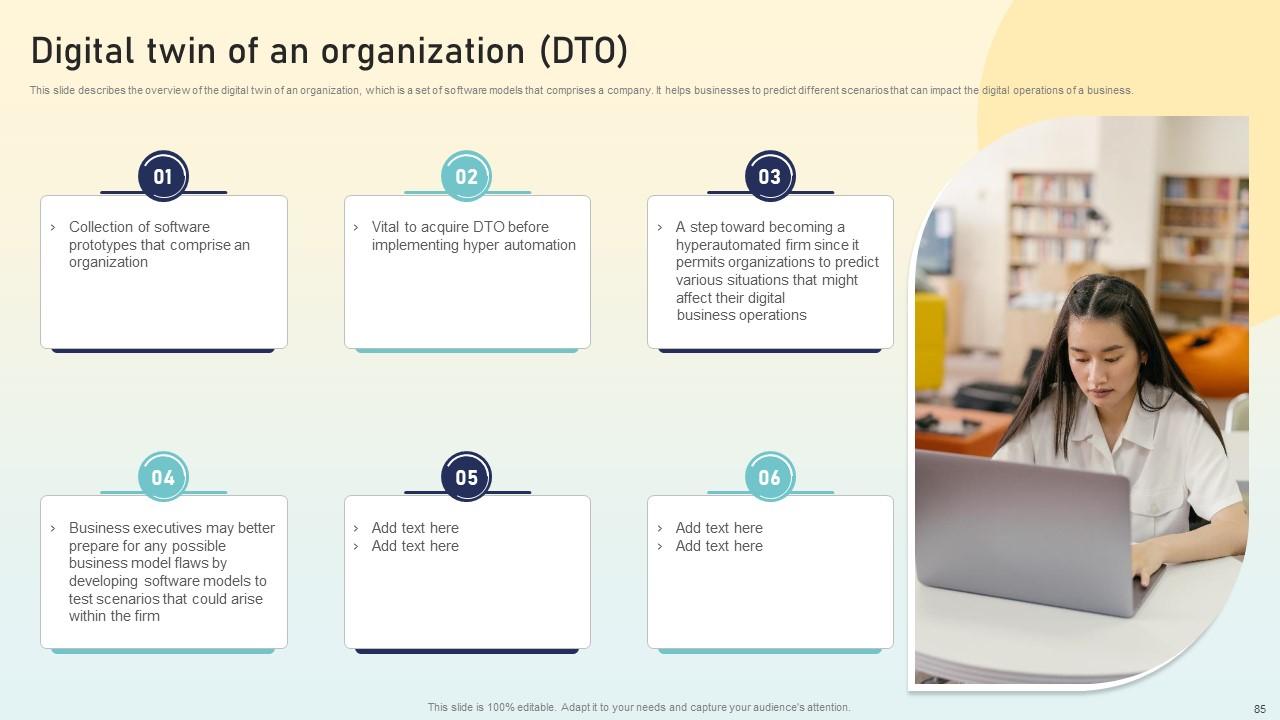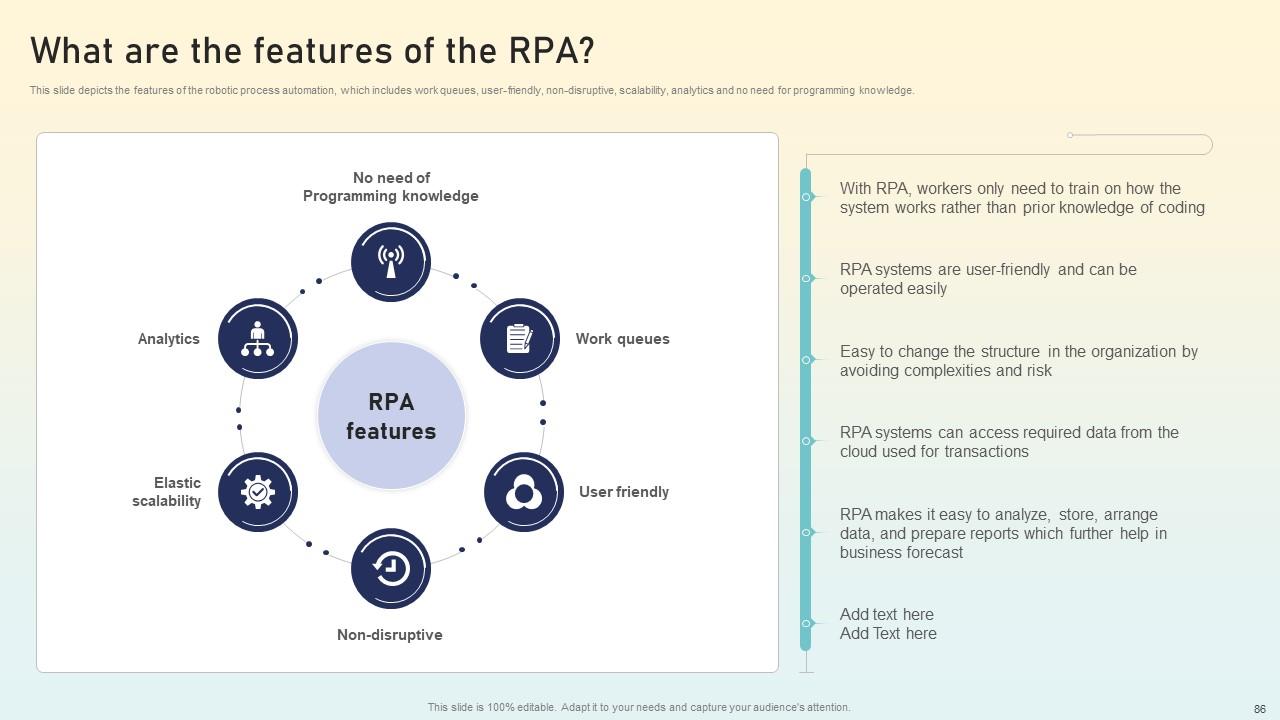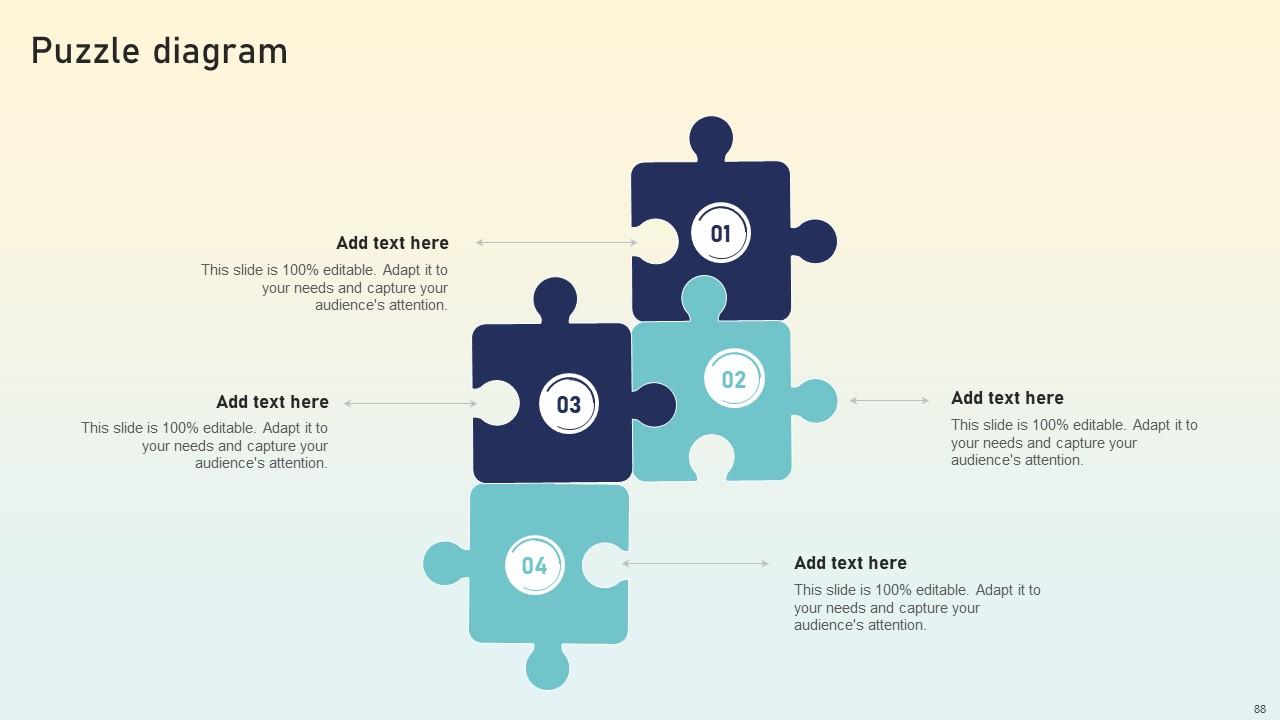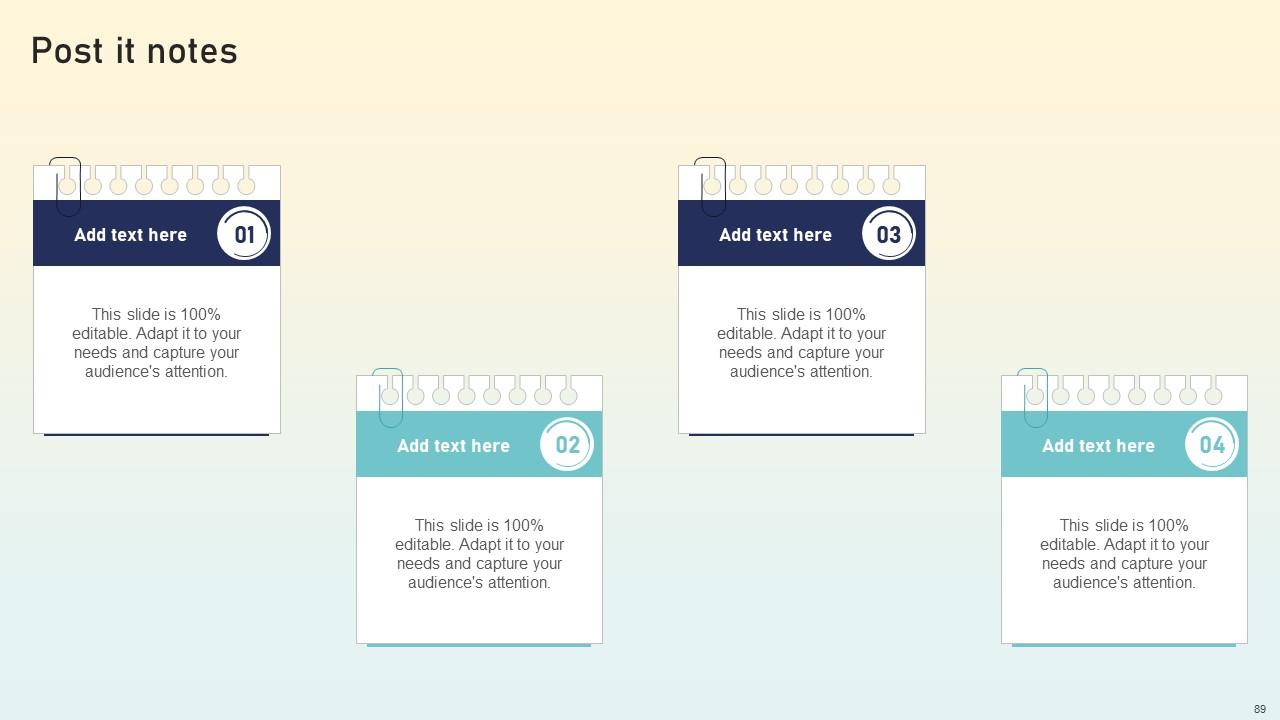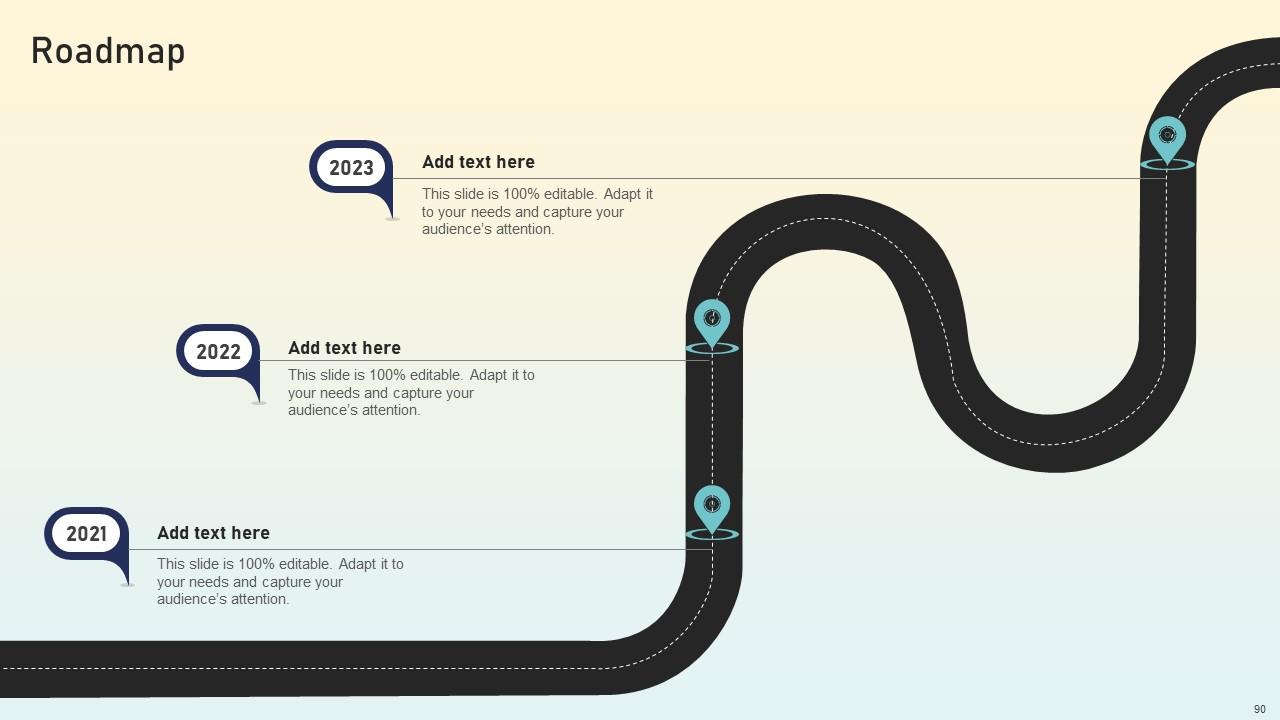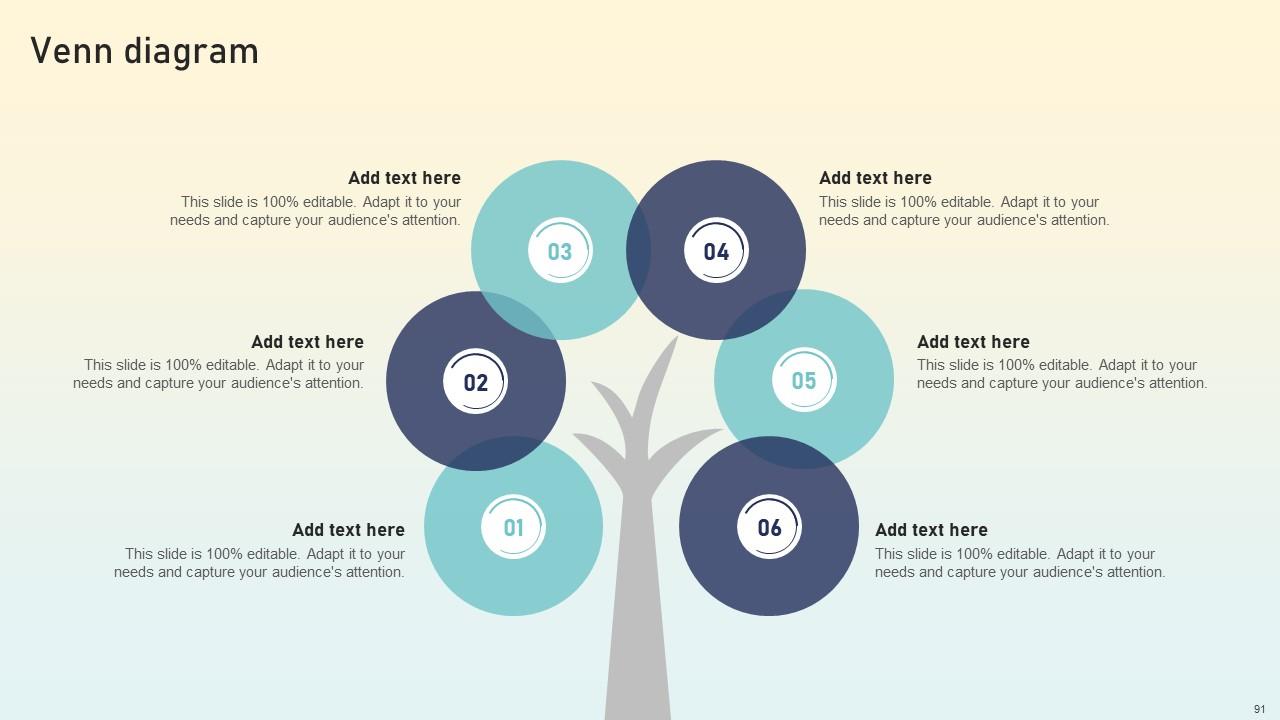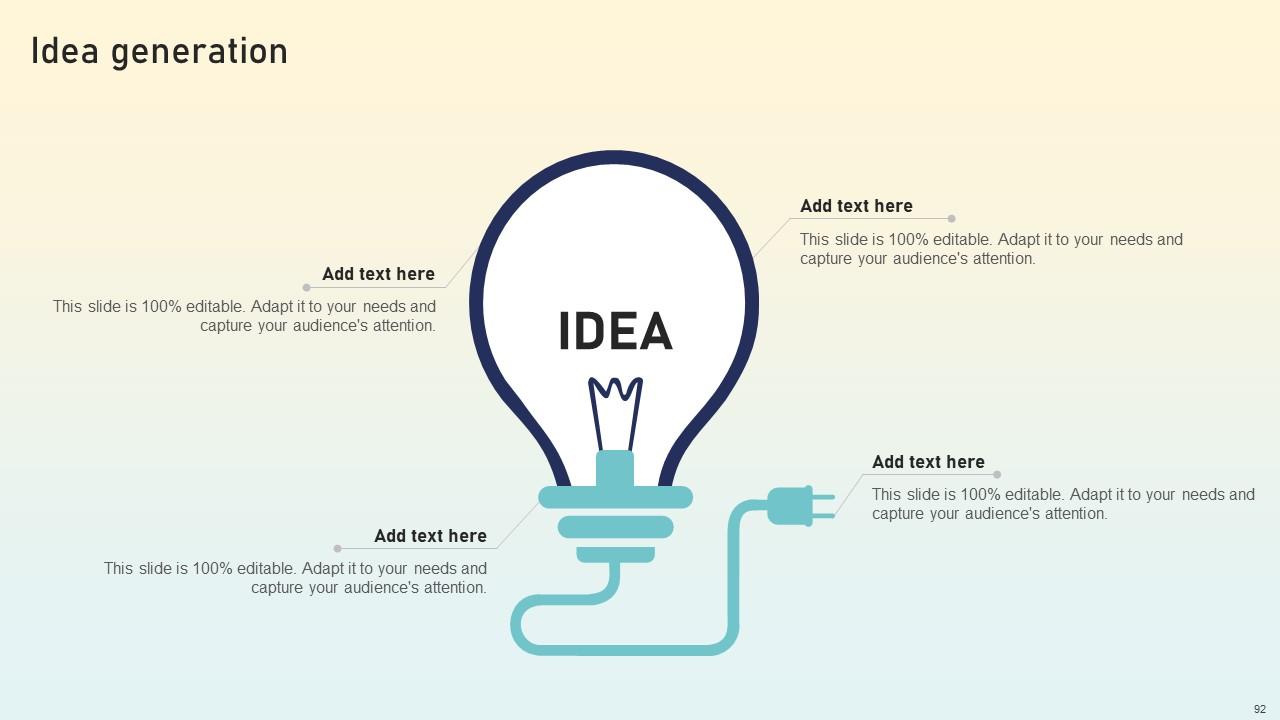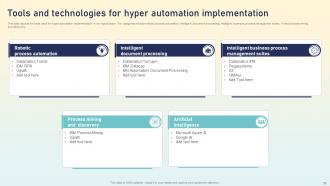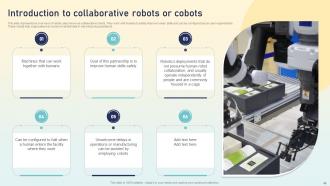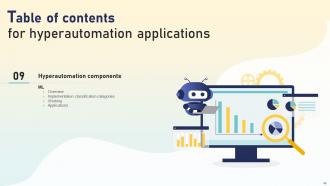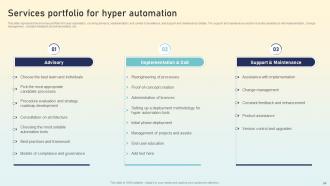Hyperautomation Applications Powerpoint Presentation Slides
This Hyperautomation Applications PowerPoint presentation gives a brief idea about hyper-automation technology, including its components, benefits, working, and processes that can be automated. It also includes the reasons businesses adopt hyper-automation, a comparison between automation and hyper-automation, and an end-to-end view, according to ISG. In this HyperAutomation PowerPoint Presentation, we have covered the overview of hyper-automation testing, different tools and technologies for hyperautomation implementation, components that require tools, and top hyper-automation software. In addition, this Hyperautomation Services PPT contains the implementation of hyper-automation in the business, covering a checklist, steps to develop an automation plan and platform, implementation steps, framework, and common challenges and solutions of hyper-automation implementation. Also, the Hyperautomation Tools PPT presentation includes applications of hyperautomation in different sectors, such as healthcare, banking and finance, retail, supply chain, and business. Furthermore, this Hyperautomation Technology template caters to cost, a timeline, a roadmap for hyperautomation implementation, and a performance tracking dashboard. Moreover, this Hyperautomation Applications deck comprises the impact of hyperautomation implementation and a case study. Download our 100 percent editable and customizable template, which is also compatible with Google Slides.
This Hyperautomation Applications PowerPoint presentation gives a brief idea about hyper-automation technology, including i..
- Google Slides is a new FREE Presentation software from Google.
- All our content is 100% compatible with Google Slides.
- Just download our designs, and upload them to Google Slides and they will work automatically.
- Amaze your audience with SlideTeam and Google Slides.
-
Want Changes to This PPT Slide? Check out our Presentation Design Services
- WideScreen Aspect ratio is becoming a very popular format. When you download this product, the downloaded ZIP will contain this product in both standard and widescreen format.
-

- Some older products that we have may only be in standard format, but they can easily be converted to widescreen.
- To do this, please open the SlideTeam product in Powerpoint, and go to
- Design ( On the top bar) -> Page Setup -> and select "On-screen Show (16:9)” in the drop down for "Slides Sized for".
- The slide or theme will change to widescreen, and all graphics will adjust automatically. You can similarly convert our content to any other desired screen aspect ratio.
Compatible With Google Slides

Get This In WideScreen
You must be logged in to download this presentation.
PowerPoint presentation slides
Deliver an informational PPT on various topics by using this Hyperautomation Applications Powerpoint Presentation Slides. This deck focuses and implements best industry practices, thus providing a birds-eye view of the topic. Encompassed with ninety three slides, designed using high-quality visuals and graphics, this deck is a complete package to use and download. All the slides offered in this deck are subjective to innumerable alterations, thus making you a pro at delivering and educating. You can modify the color of the graphics, background, or anything else as per your needs and requirements. It suits every business vertical because of its adaptable layout.
People who downloaded this PowerPoint presentation also viewed the following :
Content of this Powerpoint Presentation
Slide 1: This slides introduces Hyperautomation Applications.
Slide 2: This slide describes Agenda for hyperautomation applications.
Slide 3: This slide shows Table of contents for hyperautomation applications.
Slide 4: This is another slide continuing Table of contents for hyperautomation applications.
Slide 5: This slide displays Table of contents about hyperautomation.
Slide 6: This slide represents the introduction to hyper automation.
Slide 7: This slide illustrates the critical components of hyper automation.
Slide 8: This slide demonstrates the advantages of hyper automation.
Slide 9: This slide depicts the working of hyper automation, which is a process-oriented approach.
Slide 10: This slide represents the working of robotic process automation robots.
Slide 11: This slide describes the suitable business processes for hyper-automation.
Slide 12: This is another slide continuing Table of contents for hyperautomation applications.
Slide 13: This slide outlines why businesses should invest in hyper-automation.
Slide 14: This slide is also displaying Table of contents for hyperautomation applications.
Slide 15: This slide depicts the comparison between automation and hyper automation.
Slide 16: This slide again renders Table of contents for hyperautomation applications.
Slide 17: This slide depicts the comparison between robotic process automation and hyper-automation.
Slide 18: This slide is also presents Table of contents for hyperautomation applications.
Slide 19: This slide represents the end-to-end view of hyper-automation as per information services group organization, including the components.
Slide 20: This slide is again of Table of content for hyperautomation applications.
Slide 21: This slide depicts the overview of hyper-automation testing that consists of three components.
Slide 22: This slide is continuing with Table of contents for hyperautomation applications.
Slide 23: This slide shows the ecosystem of hyper automation technologies.
Slide 24: This slide describes the components that require tools for hyper-automation implementation.
Slide 25: This slide depicts the tools used for hyper-automation implementation in an organization.
Slide 26: This slide represents the technologies used in hyper-automation systems.
Slide 27: This slide is again for the Table of Contents for hyper-automation applications.
Slide 28: This slide represents the top hyper-automation software solutions.
Slide 29: This slide again displays the Table of contents for hyper-automation applications.
Slide 30: This slide depicts the overview of robotic process automation systems that mimic human digital operations.
Slide 31: This slide describes the benefits of robotic process automation systems to organizations.
Slide 32: This slide presents the life cycle of a robotic process automation system that starts with analyzing processes.
Slide 33: This slide displays the implementation process of robotic process automation in an organization.
Slide 34: This slide again shows the Table of contents for hyper-automation applications.
Slide 35: This slide exhibits the introduction of big data analytics, including the complete data handling process.
Slide 36: This slide presents the top big data collection sources for developing improved marketing strategies.
Slide 37: This slide renders the most critical Vs of big data and how they work.
Slide 38: This slide depicts the three types of big data, including structured, unstructured, and semi-structured.
Slide 39: This slide is continuing with the Table of contents for hyper-automation applications.
Slide 40: This slide represents an overview of cobots, also known as collaborative robots.
Slide 41: This slide illustrates the benefits of using cobots in business.
Slide 42: This slide shows cobots' risk and safety factors so humans can work with them without harm.
Slide 43: This slide describes the four major types of collaborative robots and these robots are designed for different operations of an enterprise.
Slide 44: This slide also displays a Table of contents for hyper-automation applications.
Slide 45: This slide depicts the artificial intelligence overview, including its three primary cognitive skills.
Slide 46: This slide outlines the primary types of artificial intelligence technology.
Slide 47: This slide depicts the real-world applications of artificial intelligence.
Slide 48: This slide is another of Table of contents for hyper-automation applications.
Slide 49: This slide gives the overview of machine learning technology, including its comparison with traditional programming.
Slide 50: This slide depicts the implementation classification categories of machine learning.
Slide 51: This slide shows the working of machine learning systems.
Slide 52: This slide represents the applications of machine learning algorithms in different areas.
Slide 53: This slide is again for the Table of contents for hyper-automation applications.
Slide 54: This slide presents the checklist to obtain effective hyper-automation.
Slide 55: This slide demonstrates the steps to get started with hyper-automation.
Slide 56: This slide describes the process of developing an effective hyper-automation plan for an organization.
Slide 57: This slide depicts the typical three steps involved in a hyper automation platform.
Slide 58: This slide displays the steps to be taken for hyper-automation implementation in the company.
Slide 59: This slide represents the implementation framework for hyper-automation in an organization and the main components.
Slide 60: This slide displays the steps to power the hyper-automation system.
Slide 61: This slide is continuing the Table of contents for hyper-automation applications.
Slide 62: This slide depicts the common challenges of hyper-automation implementation.
Slide 63: This slide also describes the Table of contents for hyper-automation applications.
Slide 64: This slide presents the use of hyper-automation in the healthcare industry.
Slide 65: This slide describes the application of hyper-automation in the banking and finance sector.
Slide 66: This slide exhibits the use of hyper-automation in the retail sector.
Slide 67: This slide represents the application of hyper-automation in the supply chain industry.
Slide 68: The slide displays about the implementation of hyper-automation in businesses.
Slide 69: This slide depicts the use cases of hyper-automation in different industries.
Slide 70: This slide is also displaying a Table of contents for hyper-automation applications.
Slide 71: This slide outlines the pricing for hyper-automation implementation.
Slide 72: This slide also presents a Table of contents for hyper-automation applications.
Slide 73: This slide demonstrates the timeline for hyper-automation implementation in the business and process.
Slide 74: This slide is depicting a Table of contents for Roadmap to hyper-automation implementation.
Slide 75: This slide shows the roadmap from simple automation to hyper-automation in the company.
Slide 76: This slide represents the Table of contents for the Hyper automation performance tracking dashboard.
Slide 77: This slide depicts the performance tracking dashboard for hyper-automation.
Slide 78: This slide shows the Table of contents for the Impact of hyper-automation implementation.
Slide 79: This slide presents the impact of hyper-automation implementation in the company.
Slide 80: This slide demonstrates the Table of contents for the Case study – real estate firm.
Slide 81: This slide outlines the case study of the real estate firm whose business processes has automated by the Softtek organization.
Slide 82: This slide shows all the icons included in the presentation.
Slide 83: This slide is titled as Additional Slides for moving forward.
Slide 84: This slide represents the services portfolio for hyper automation.
Slide 85: This slide describes the overview of the digital twin of an organization.
Slide 86: This slide depicts the features of the robotic process automation.
Slide 87: This slide presents Dashboard with additional text boxes to show information.
Slide 88: This slide contains Puzzle with related icons and text.
Slide 89: This slide shows Dashboard with additional text boxes to show information.
Slide 90: This slide presents Roadmap with additional textboxes.
Slide 91: This slide displays Venn diagram with text boxes.
Slide 92: This is an Idea Generation slide to state a new idea or highlight information, specifications etc.
Slide 93: This is a Thank You slide with address, contact numbers and email address.
Hyperautomation Applications Powerpoint Presentation Slides with all 98 slides:
Use our Hyperautomation Applications Powerpoint Presentation Slides to effectively help you save your valuable time. They are readymade to fit into any presentation structure.
FAQs
Hyper automation refers to a process-oriented approach that combines various automation technologies to streamline and optimize business processes. The critical components of hyper-automation include Robotic Process Automation (RPA), artificial intelligence (AI), machine learning (ML), big data analytics, and collaborative robots (cobots).
Hyper automation offers several advantages, including increased operational efficiency, improved accuracy and quality, reduced costs, enhanced scalability and flexibility, faster processing times, and the ability to handle complex and repetitive tasks with minimal human intervention.
Hyper automation works by integrating and orchestrating different automation technologies to create an end-to-end automated workflow. It is suitable for various business processes, such as data entry and validation, customer service and support, supply chain management, financial operations, human resources, and IT operations.
The top hyper-automation software solutions vary depending on specific needs and requirements. Some popular options include UiPath, Automation Anywhere, Blue Prism, Pega, and WorkFusion. These software platforms offer comprehensive automation capabilities, integration with multiple technologies, and a range of industry-specific solutions.
Hyper automation implementation can present challenges such as legacy system integration, data security and privacy concerns, workforce upskilling and change management, identifying suitable processes for automation, and ensuring a smooth transition from manual to automated operations. Overcoming these challenges requires careful planning, stakeholder involvement, and a phased approach to implementation.
-
Incredibly beautiful designs that will help you get noticed! These eye-catching templates are perfect for corporate presentations that can be altered to fit any occasion or taste.
-
The information is visually stunning and easy to understand, making it perfect for any business person. So I would highly recommend you purchase this PPT design now!


